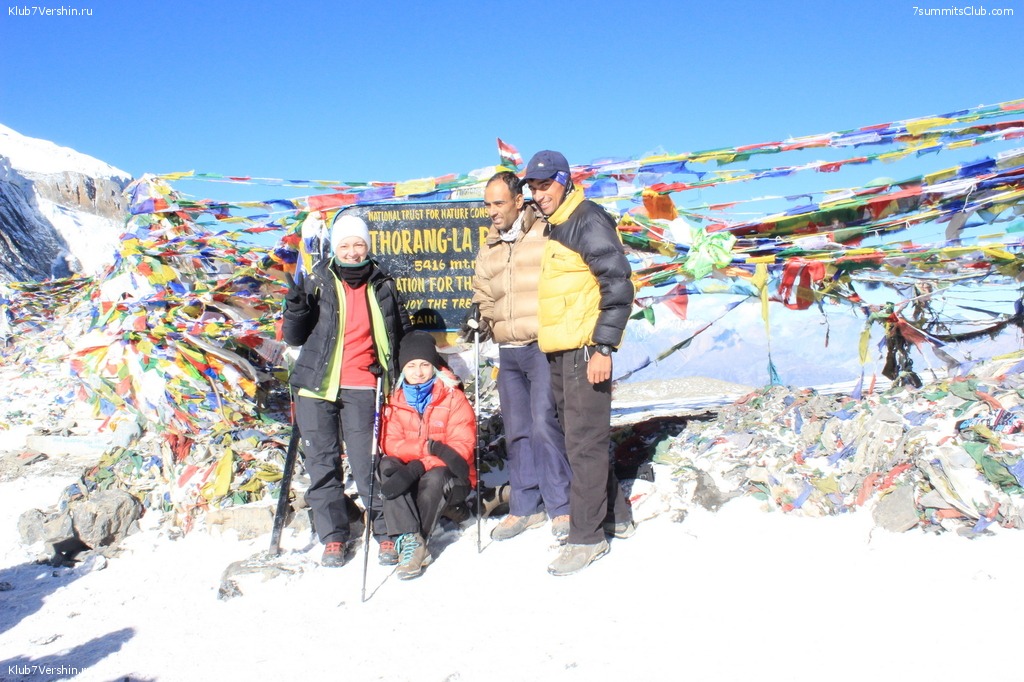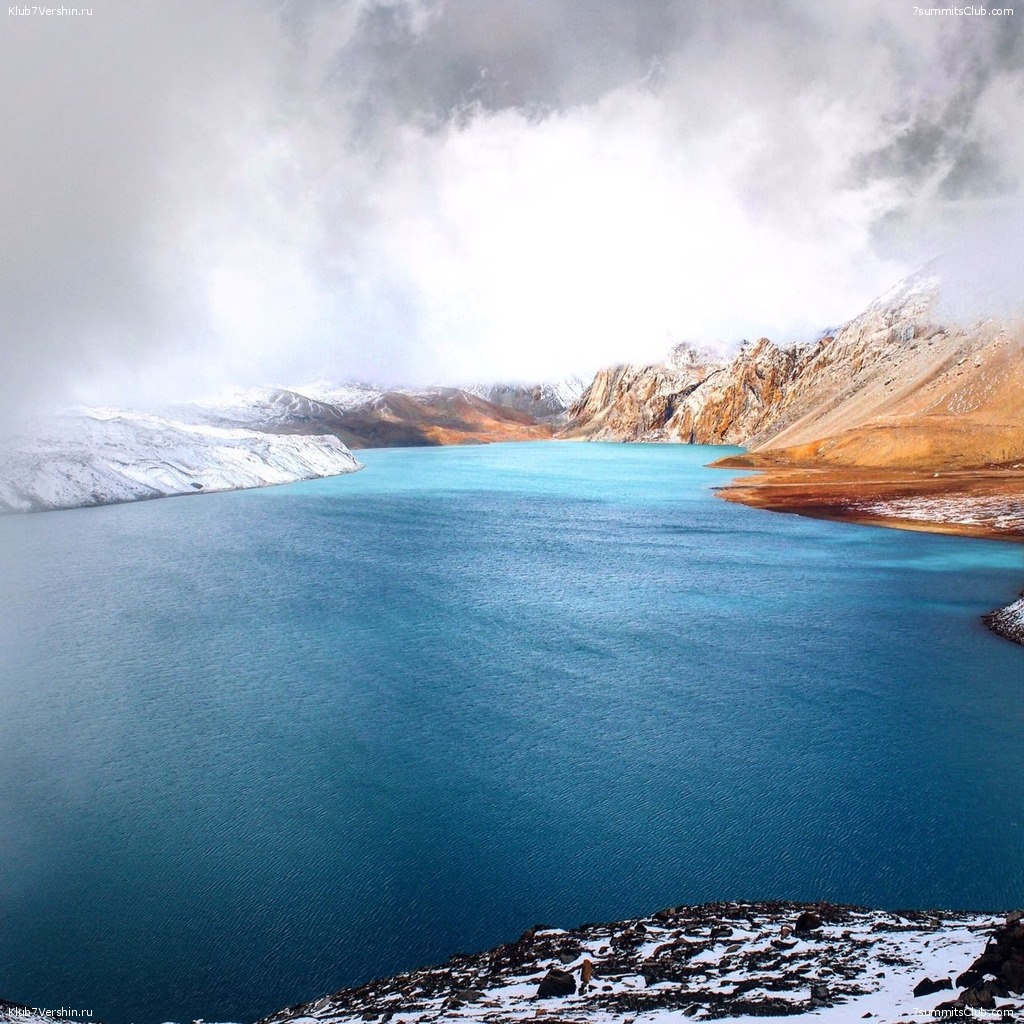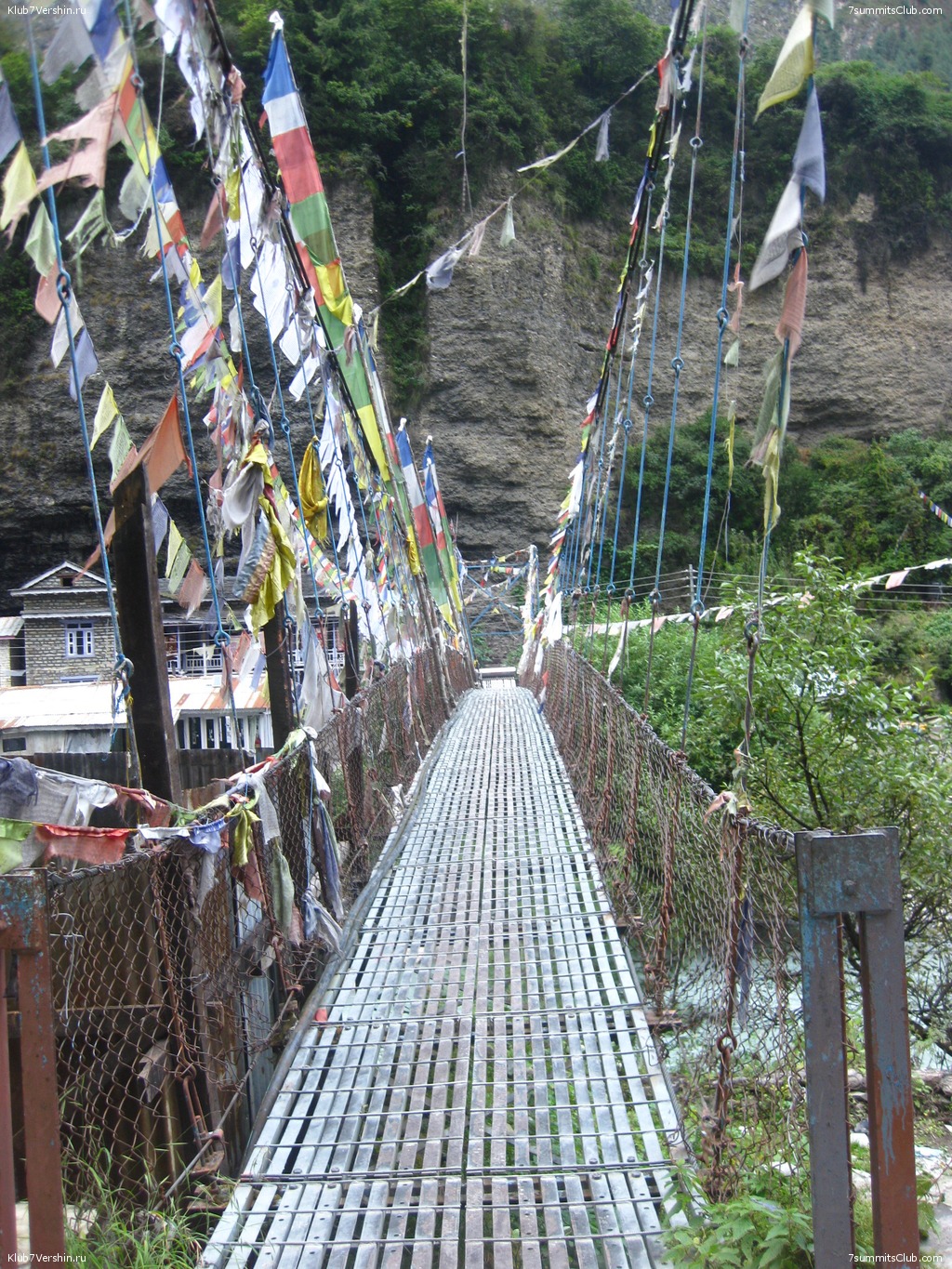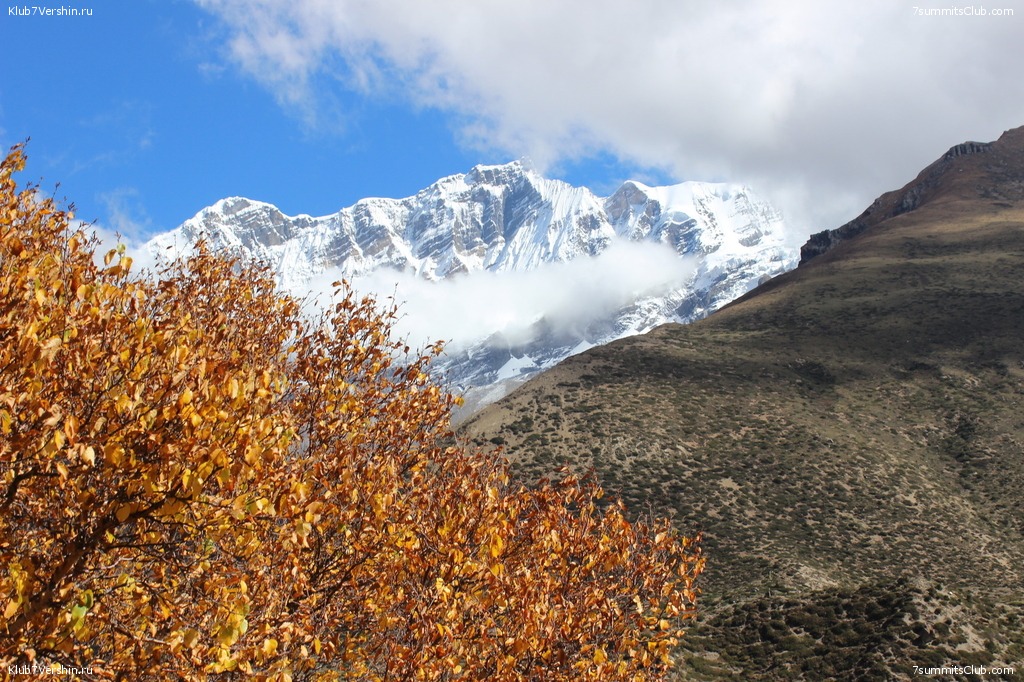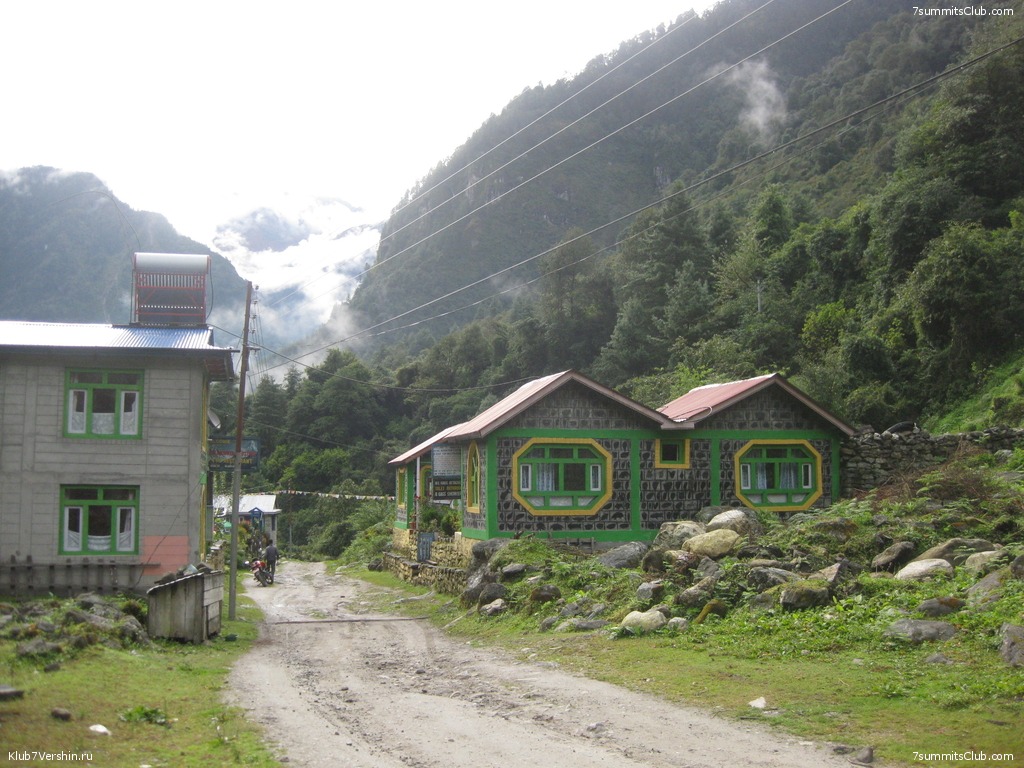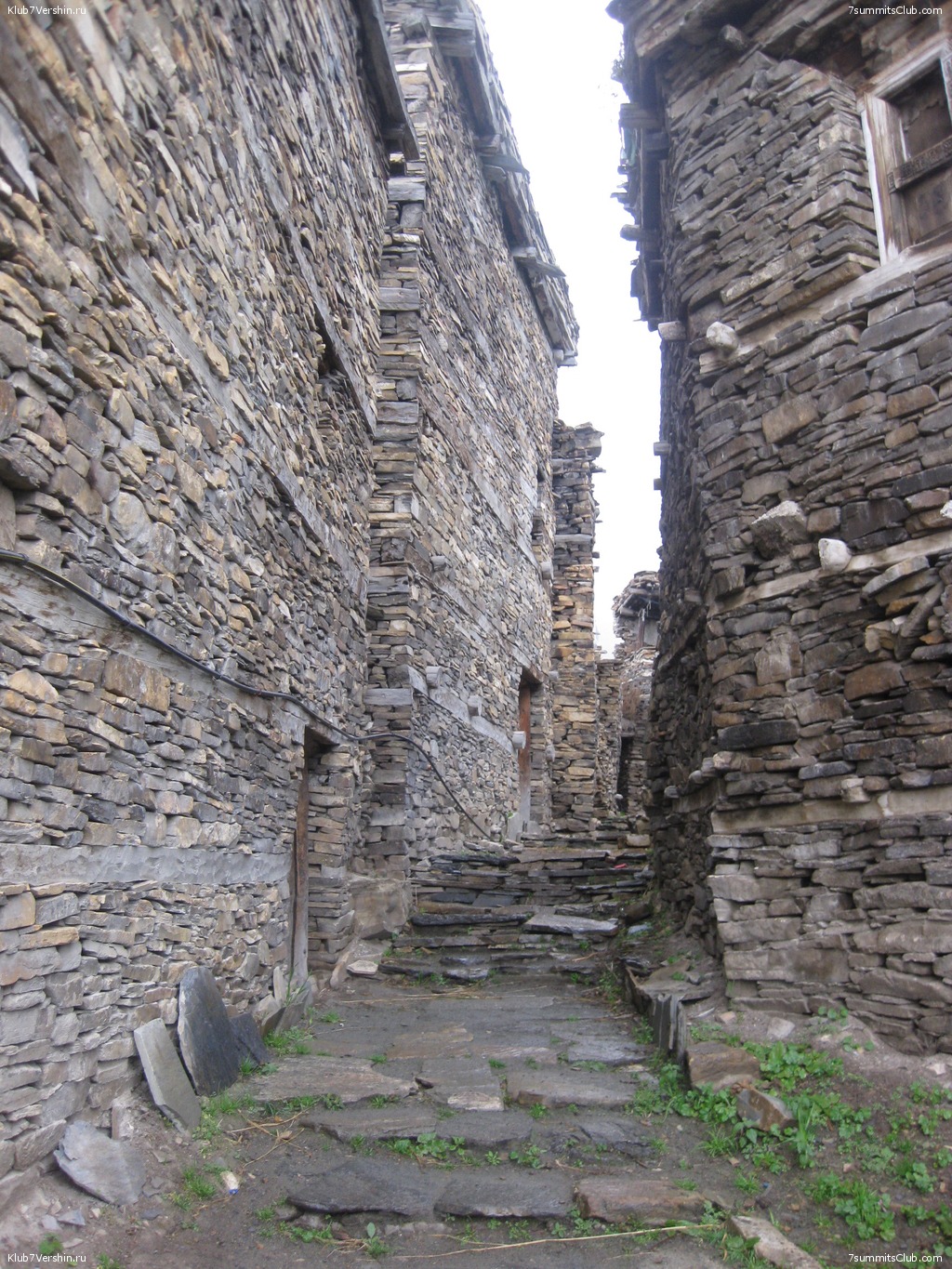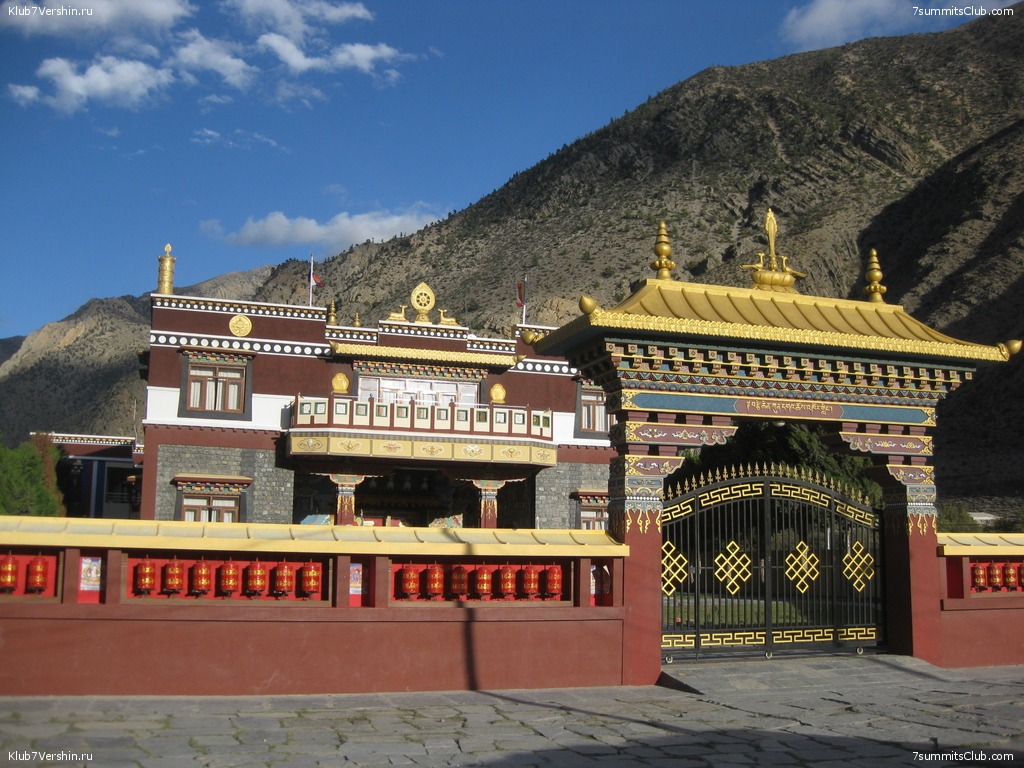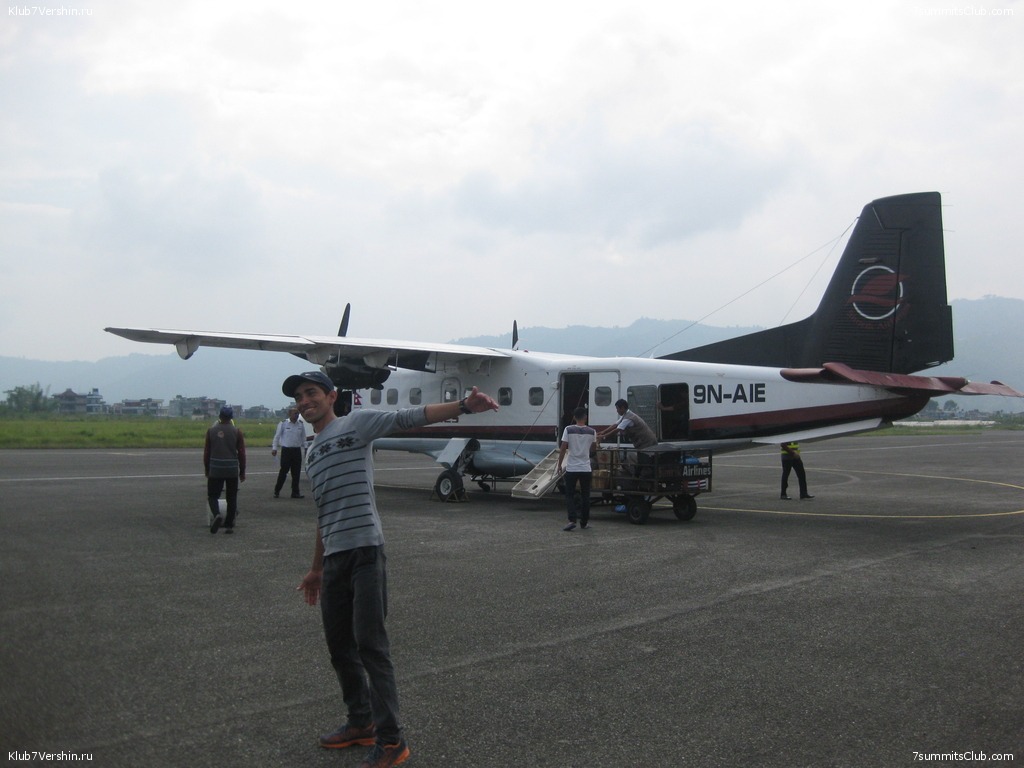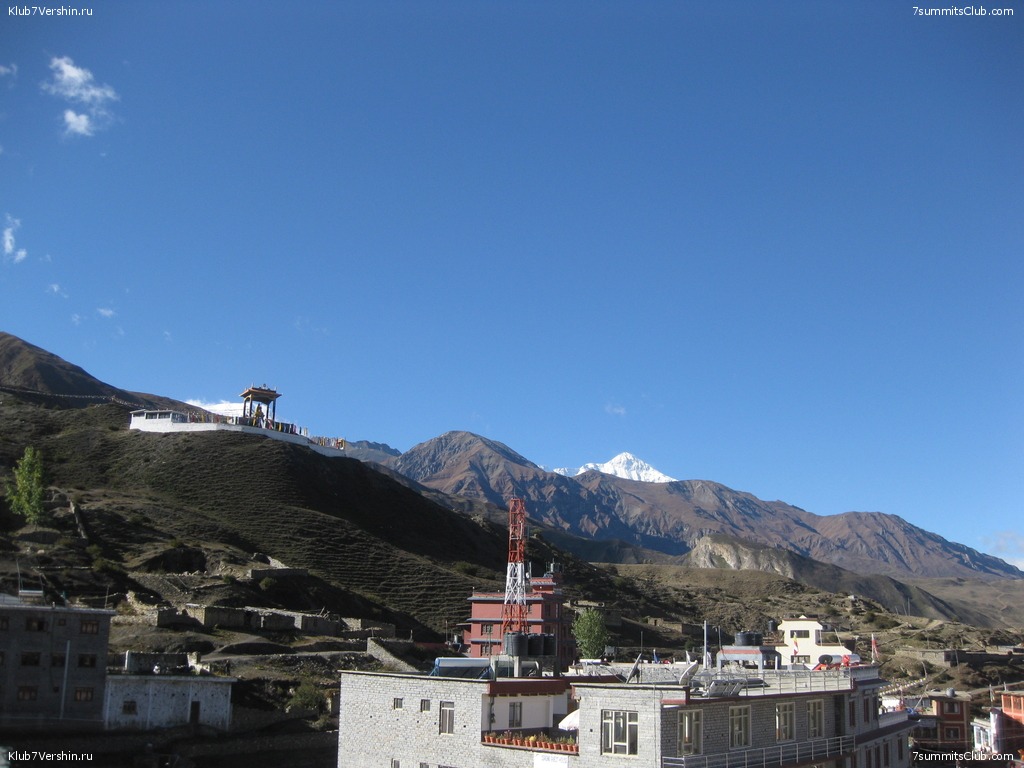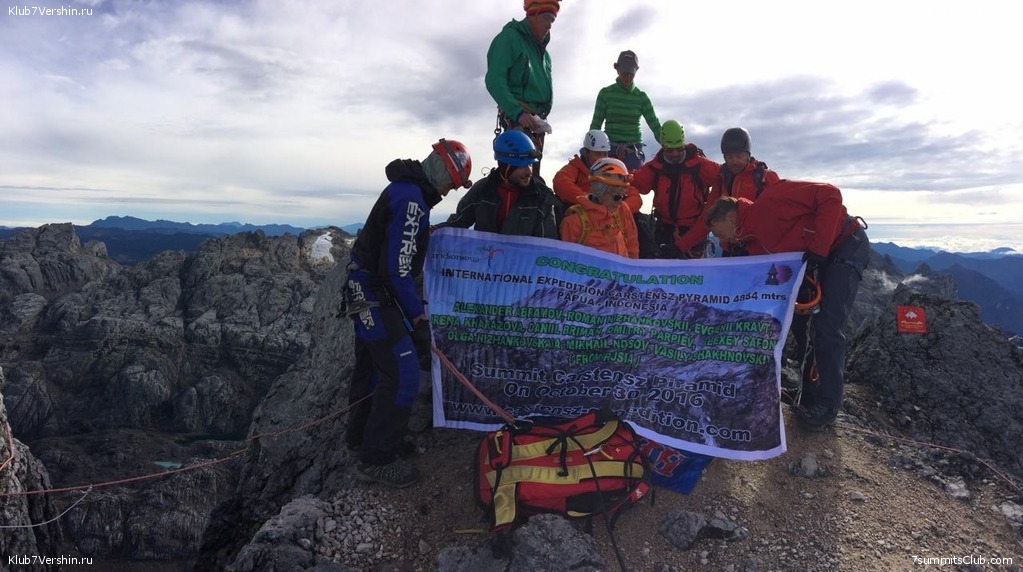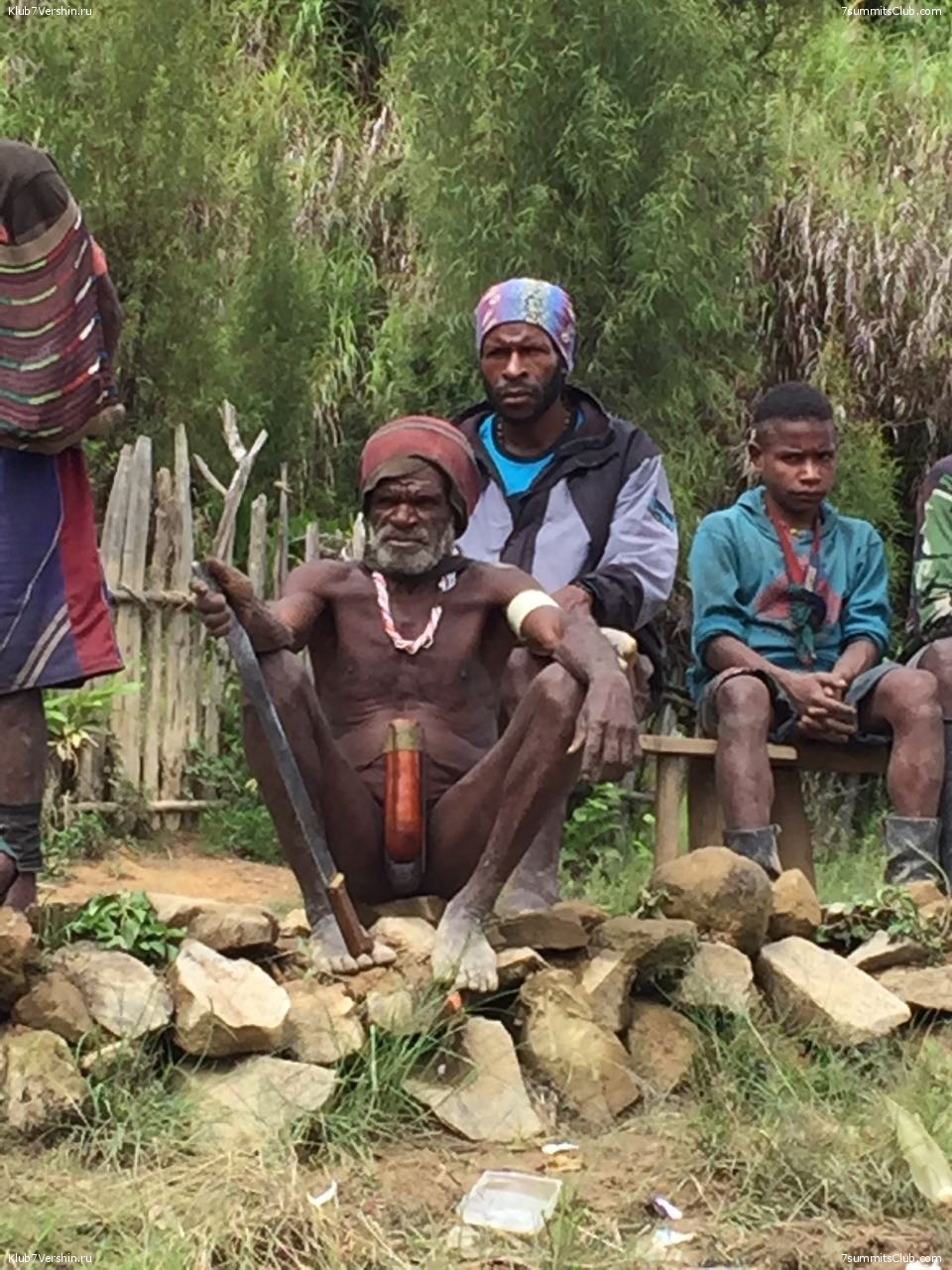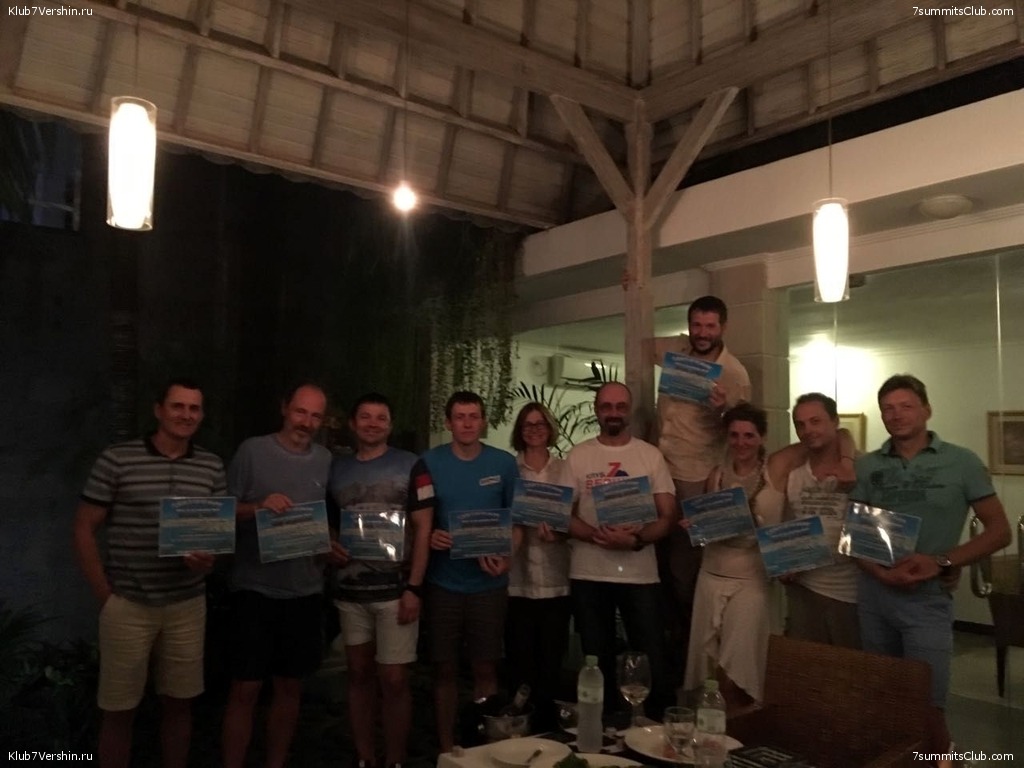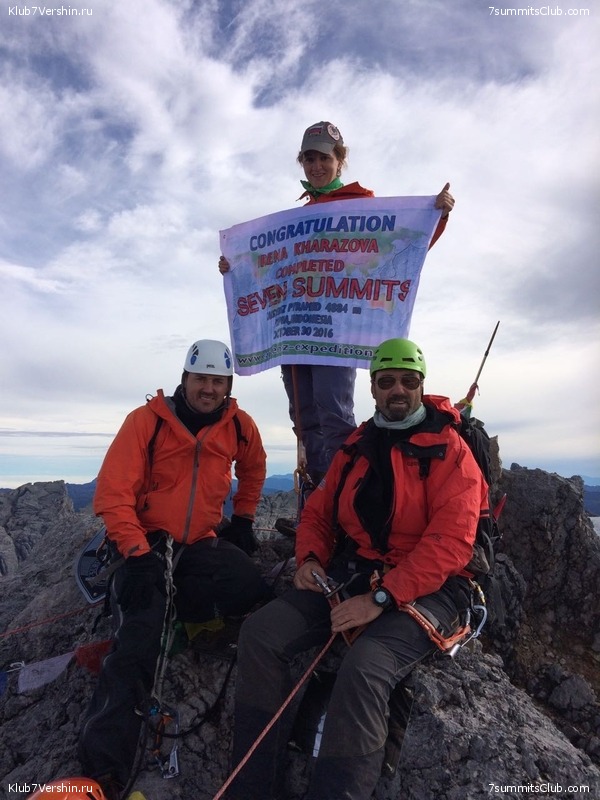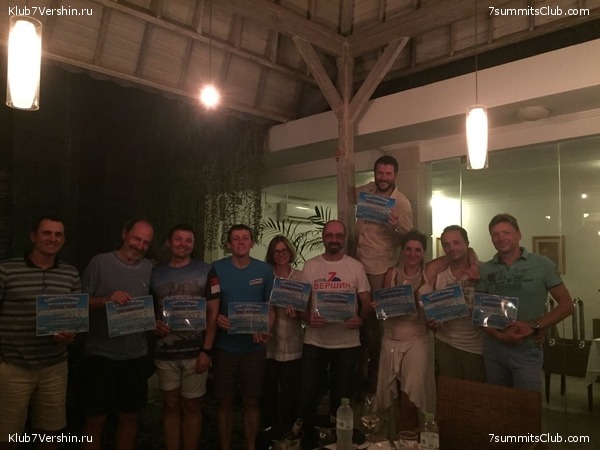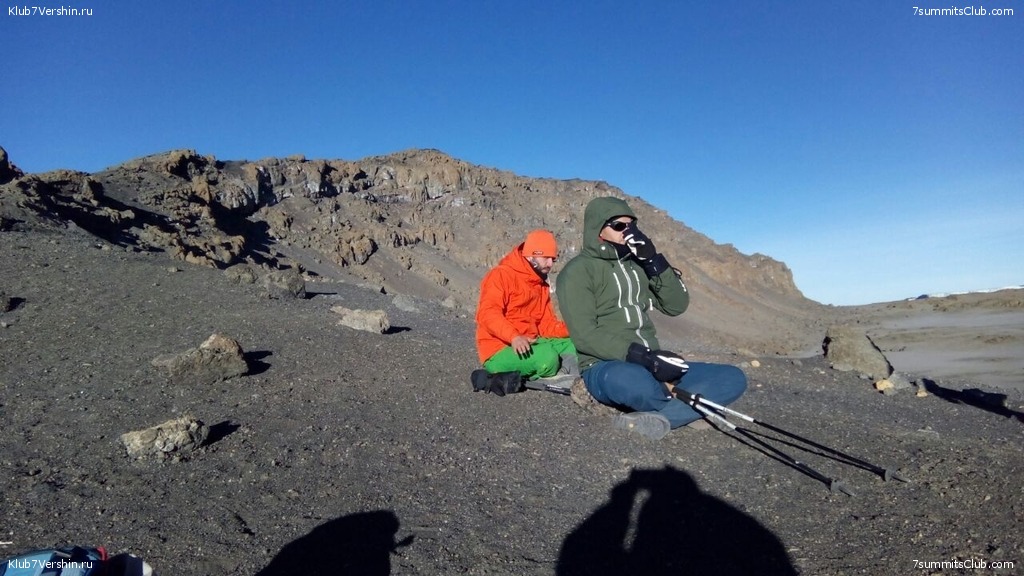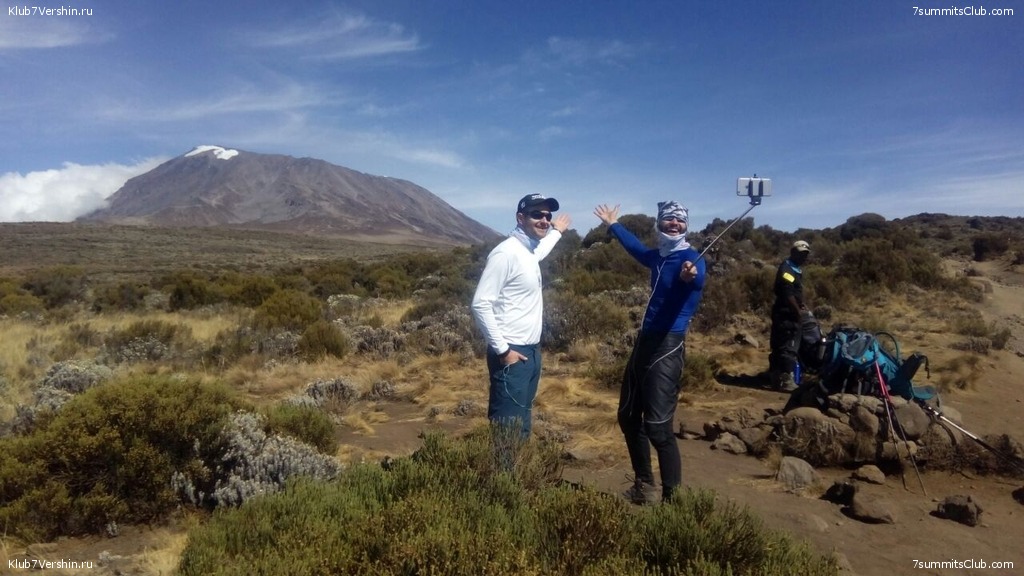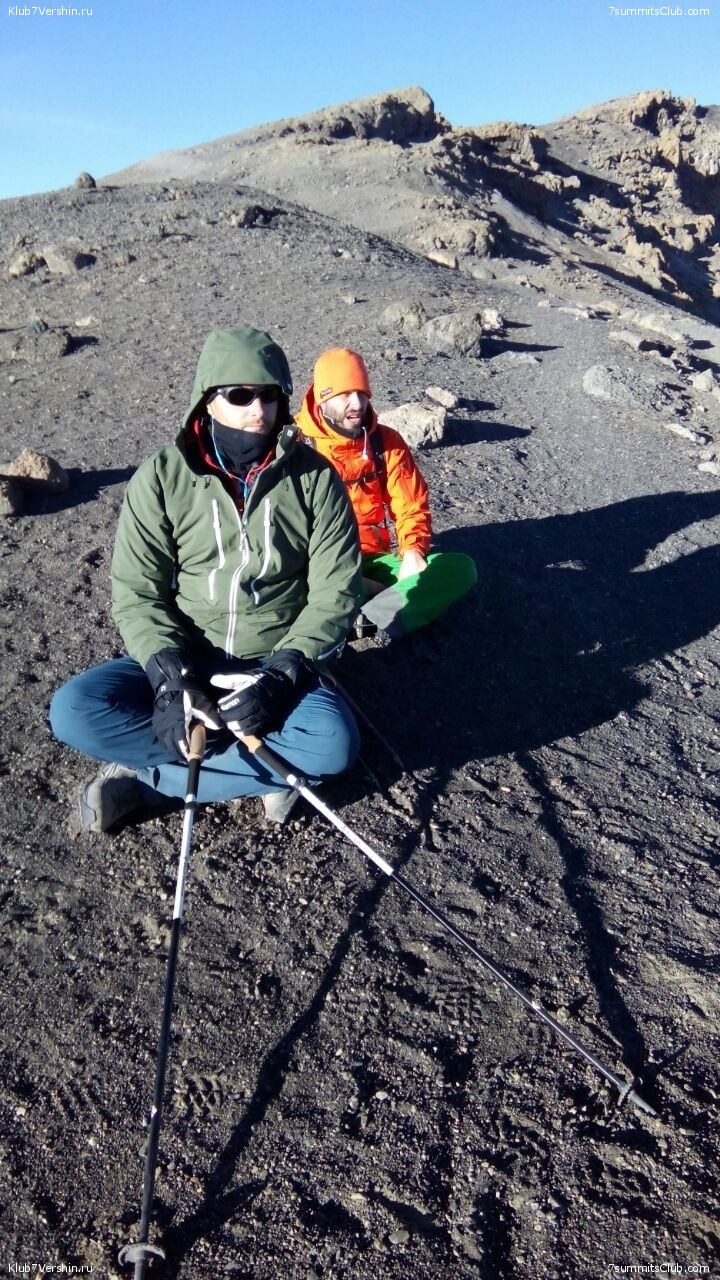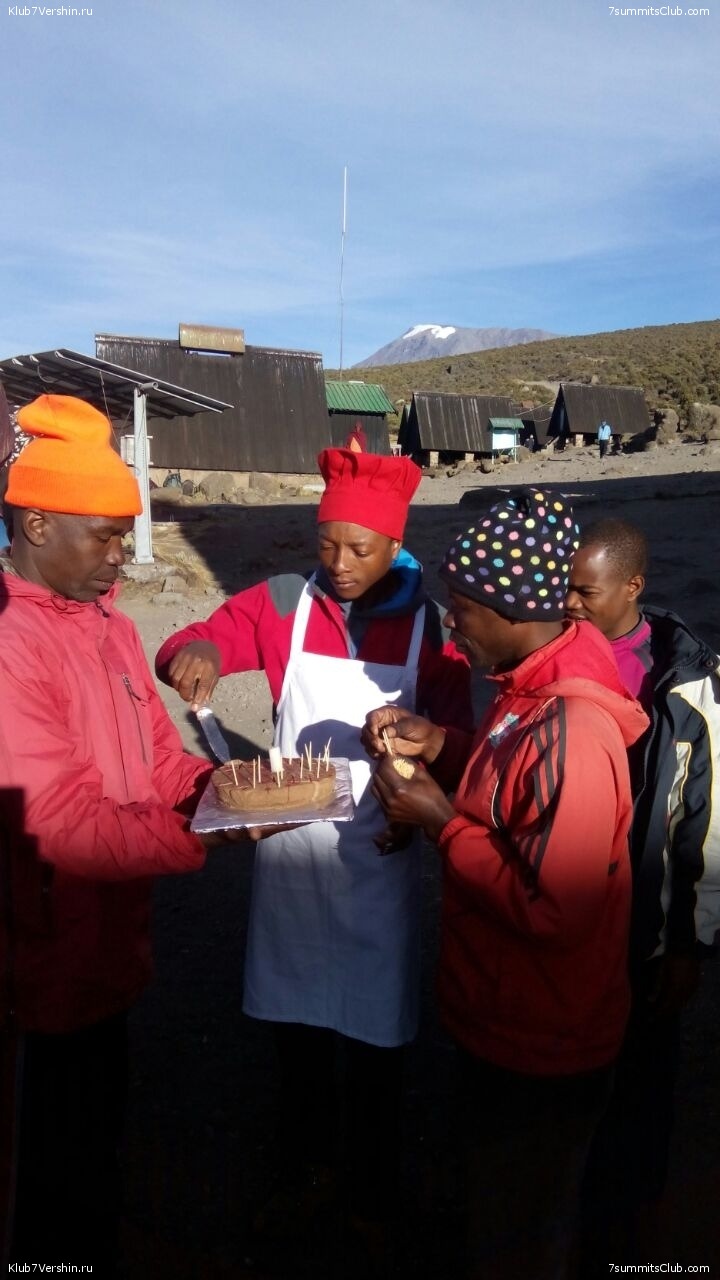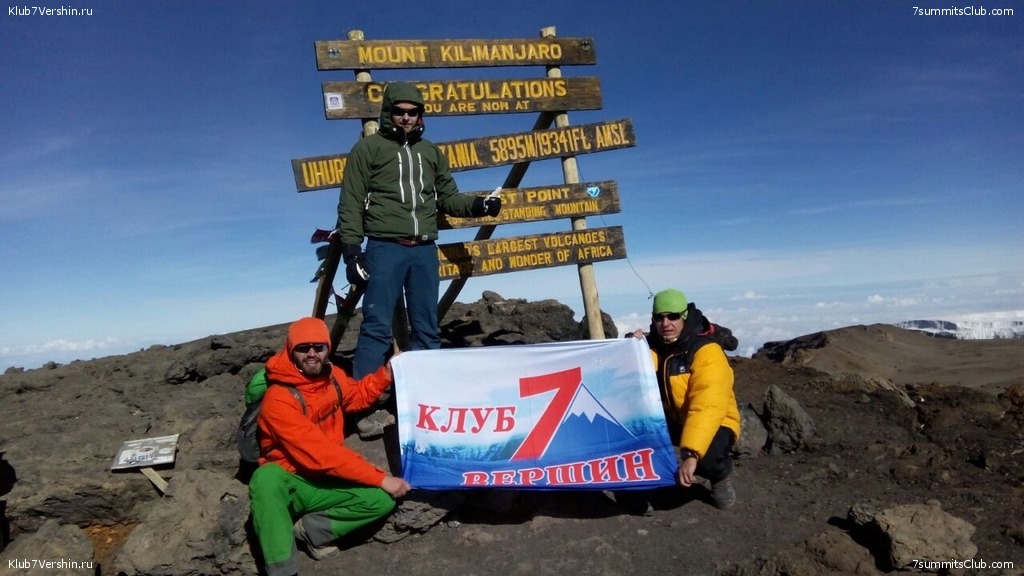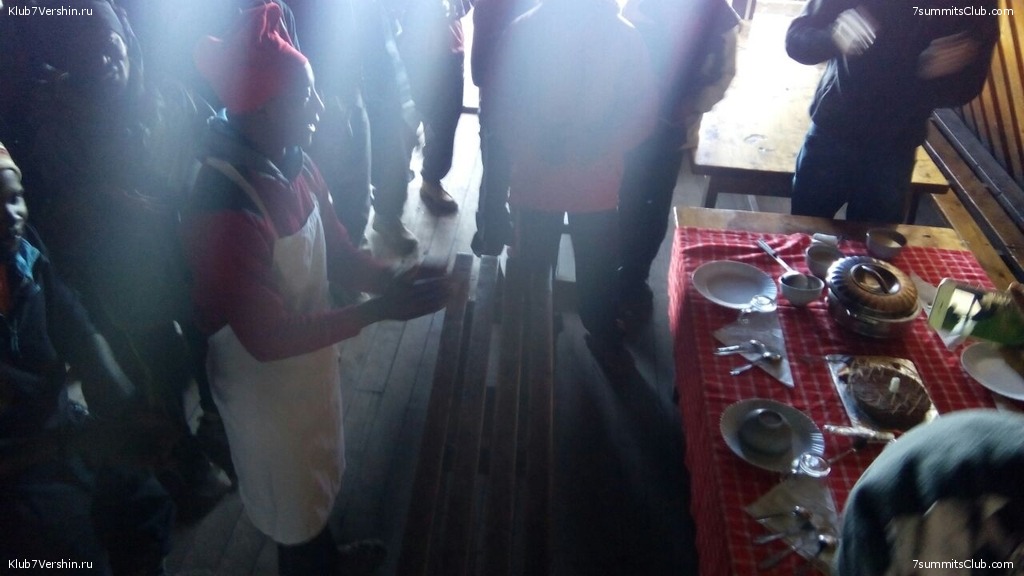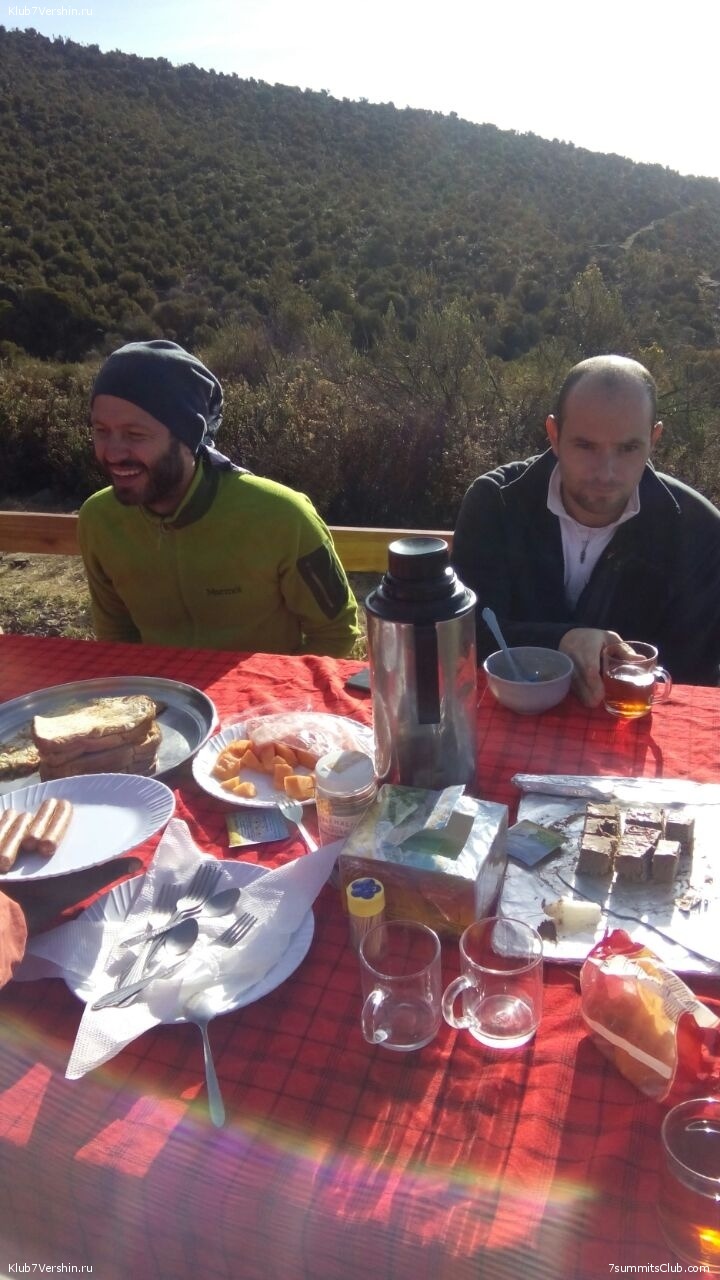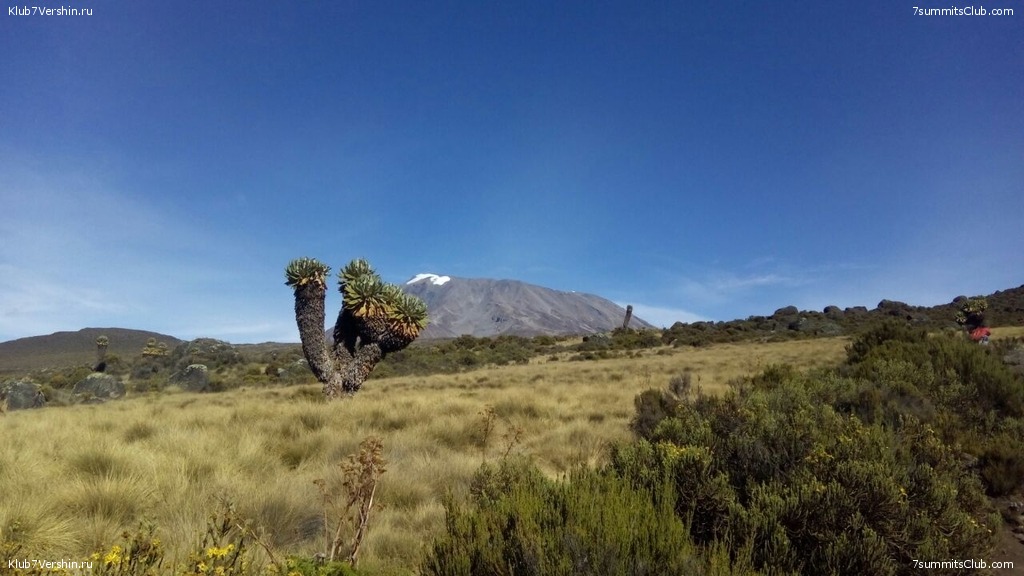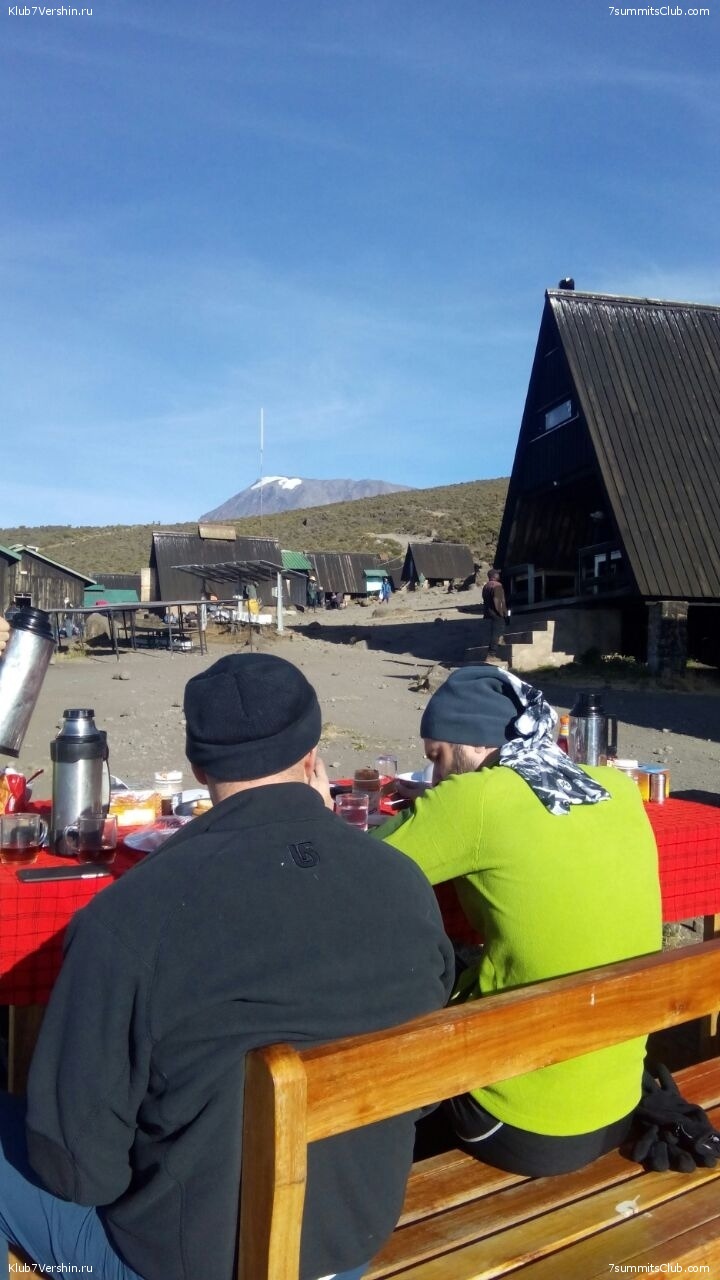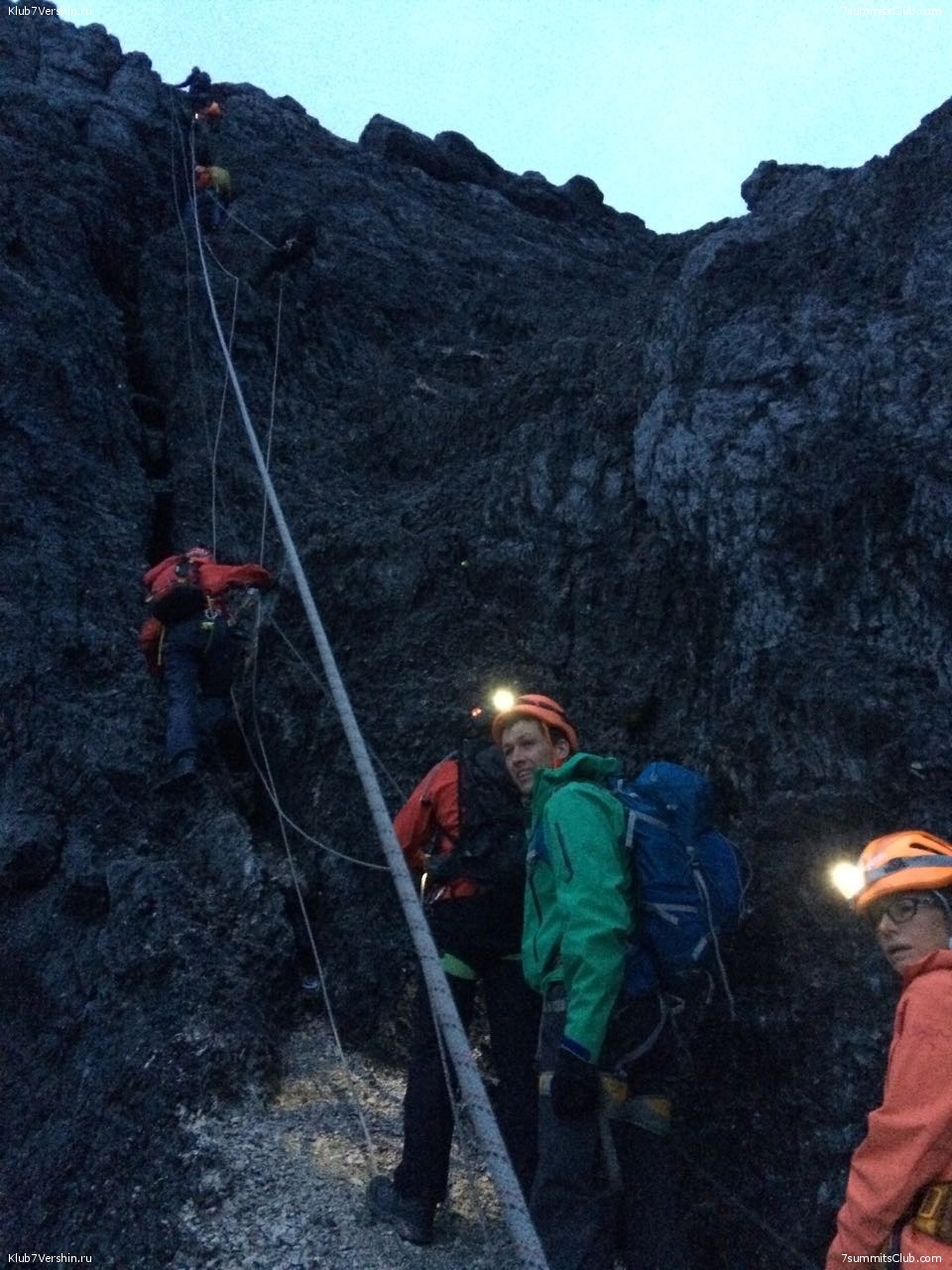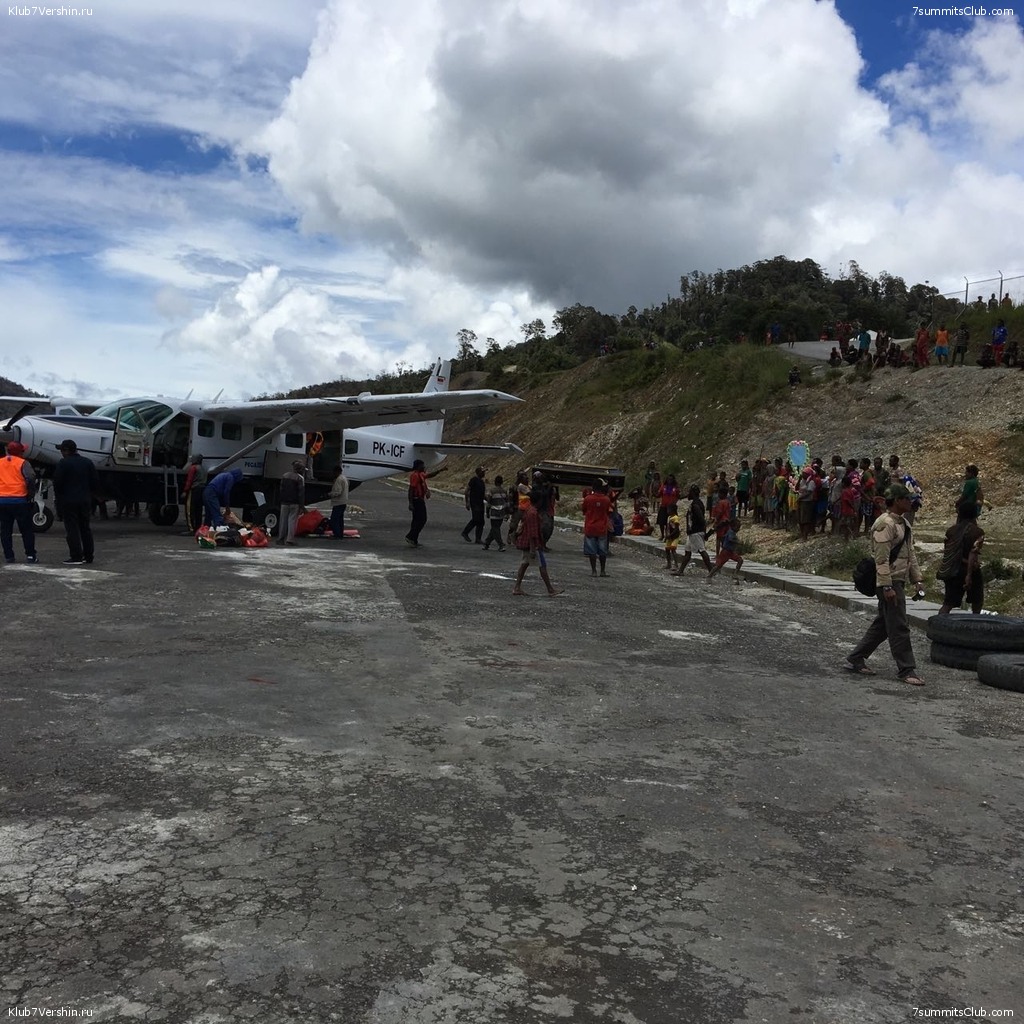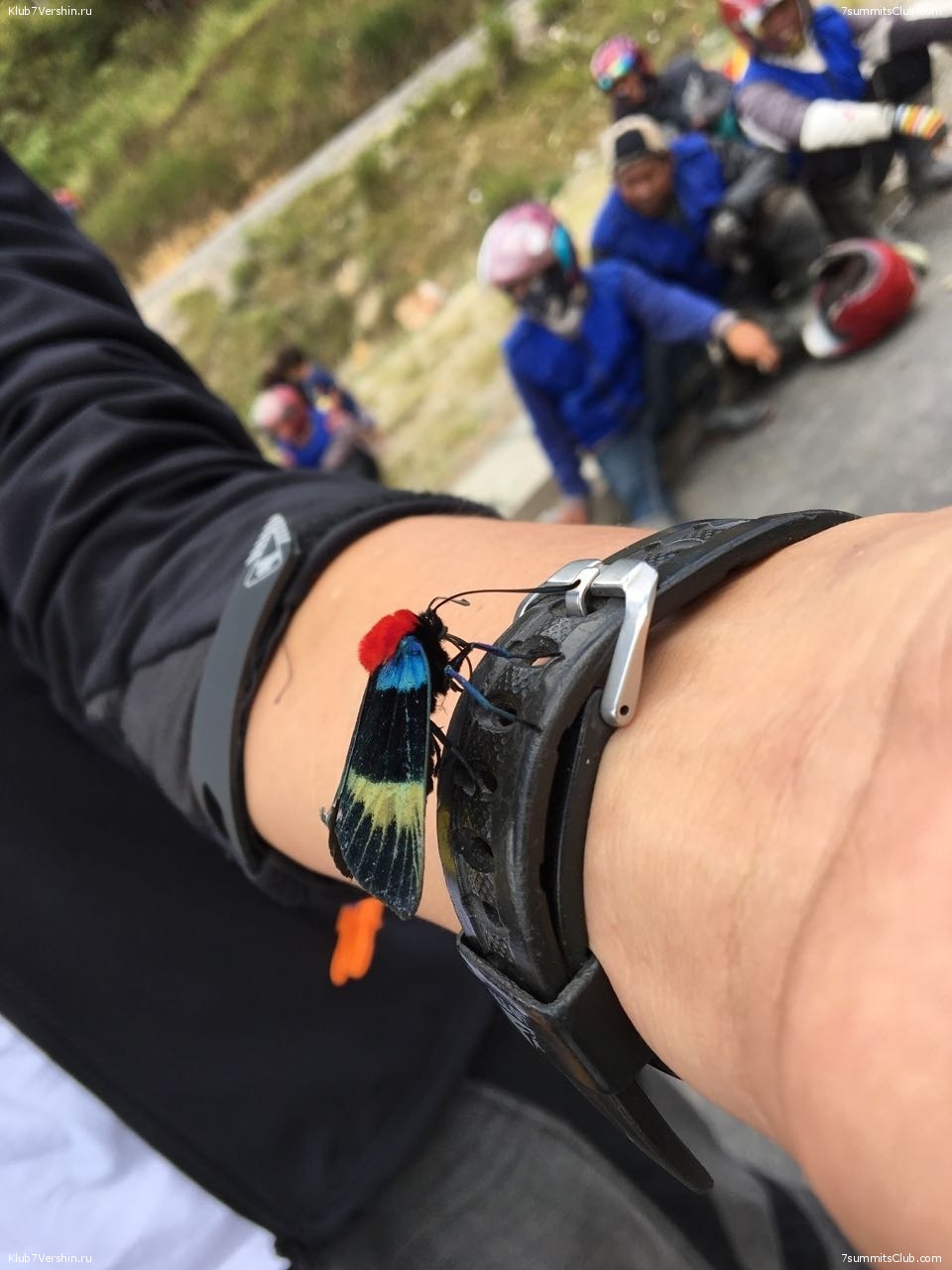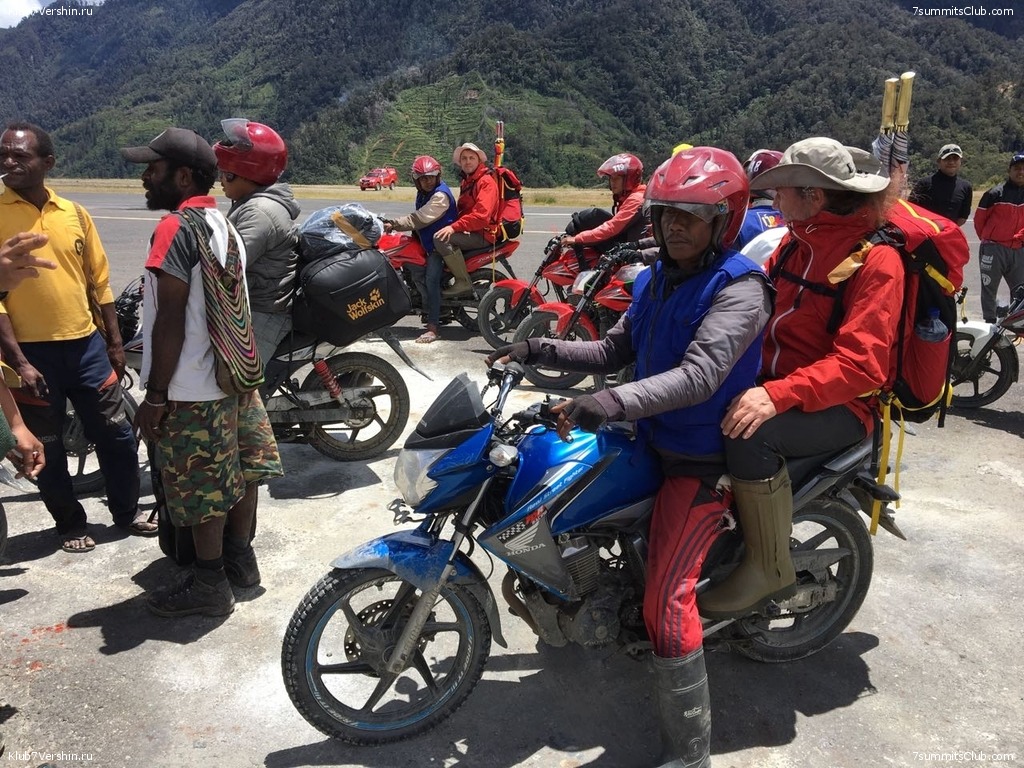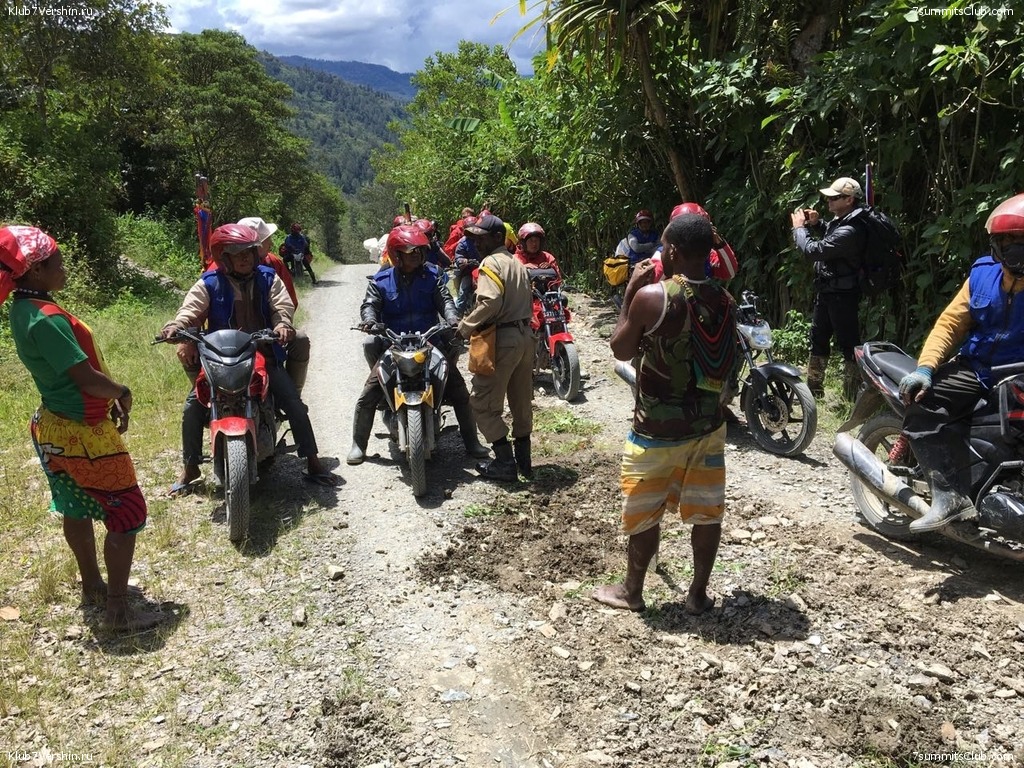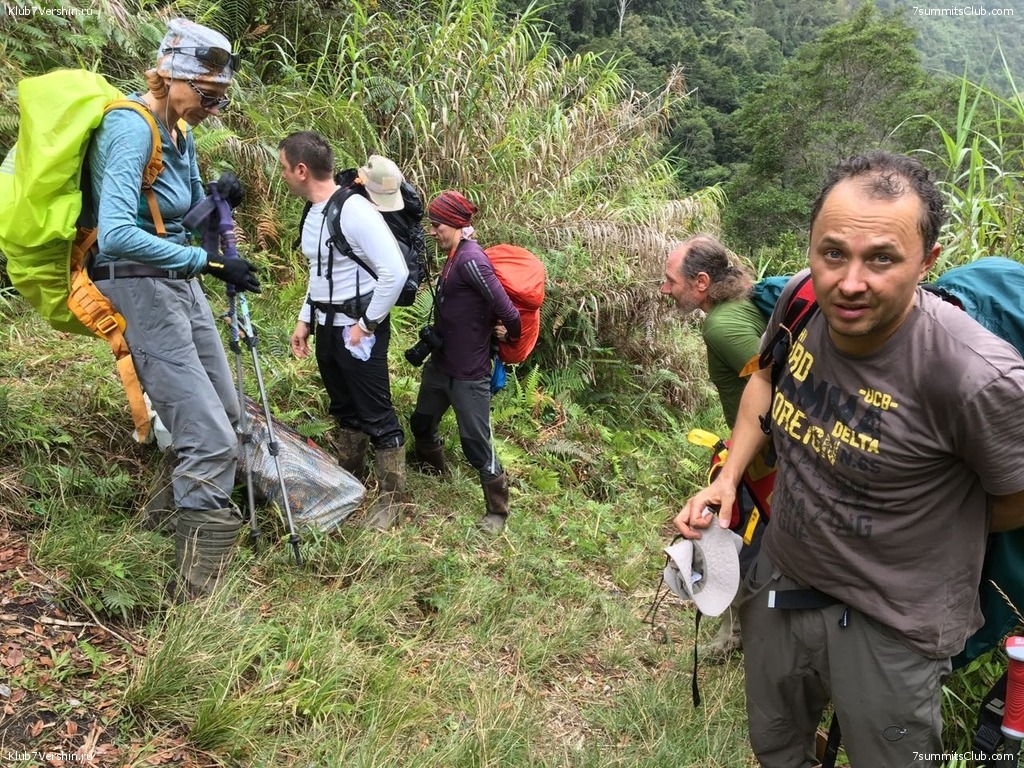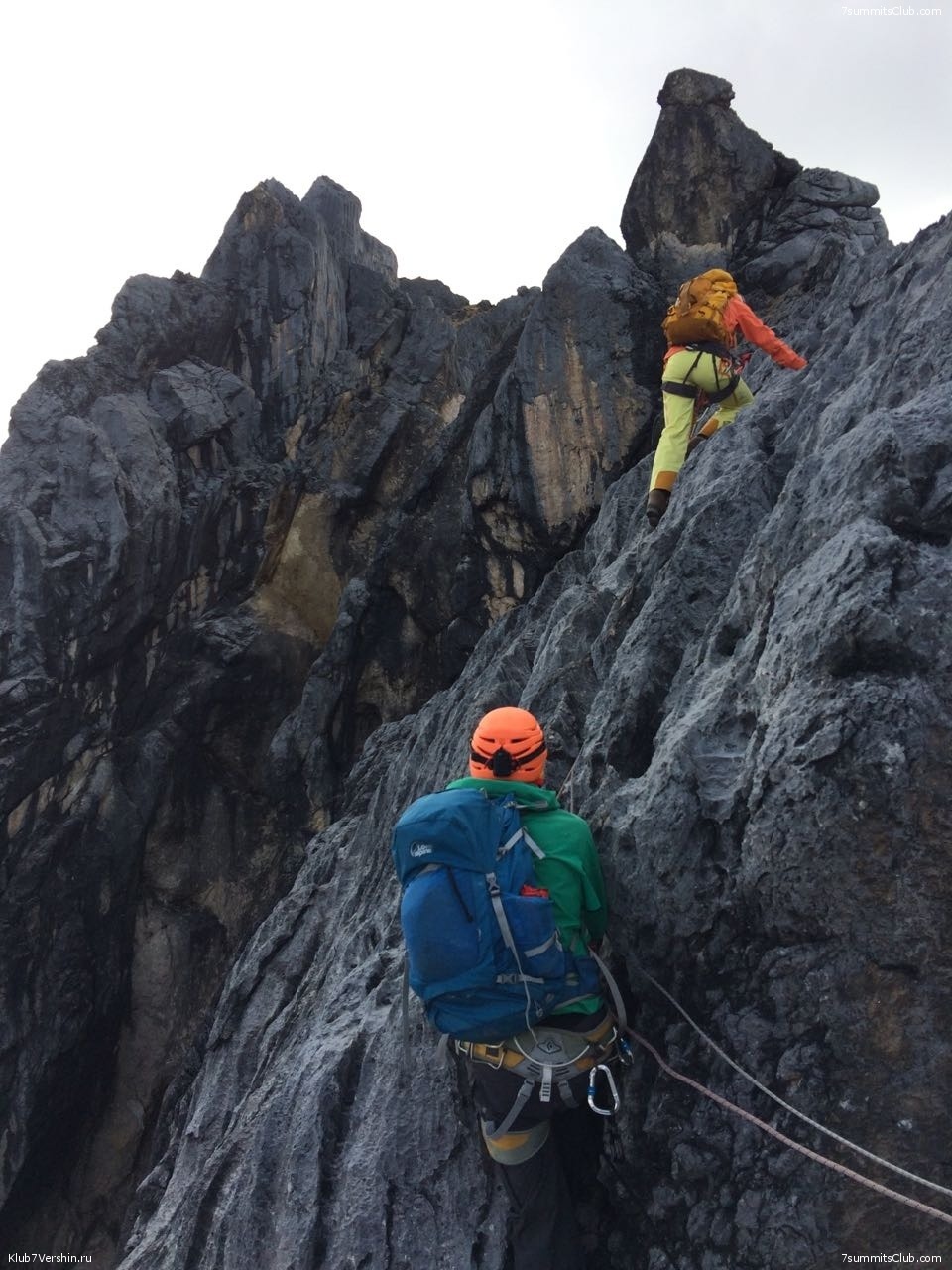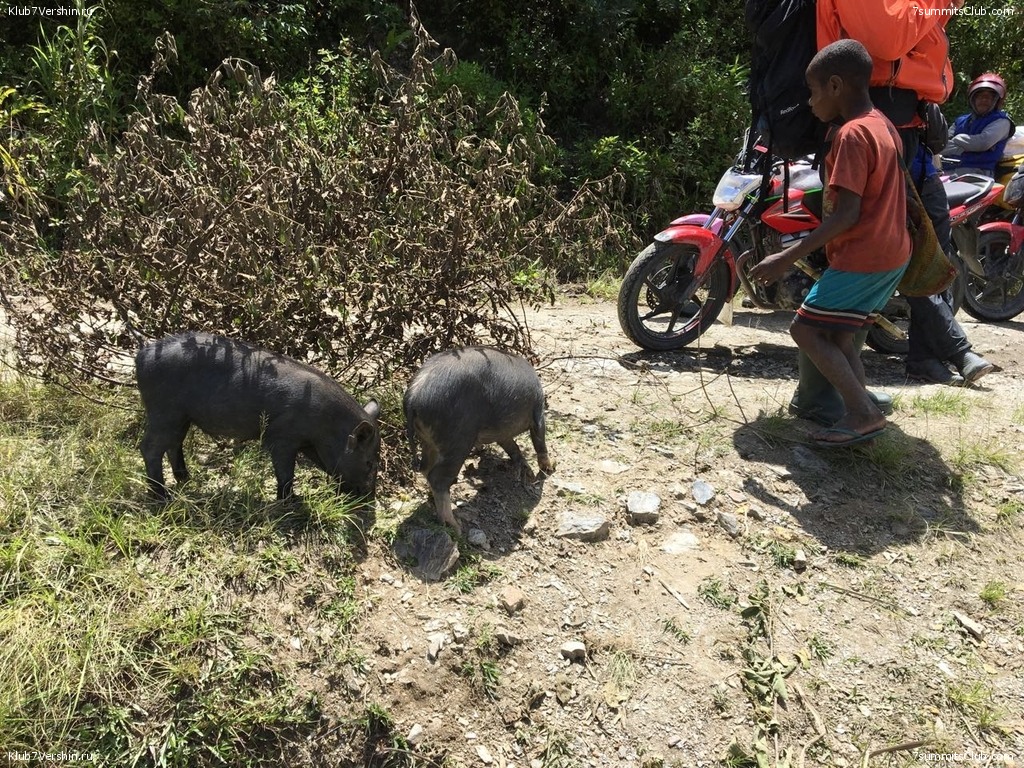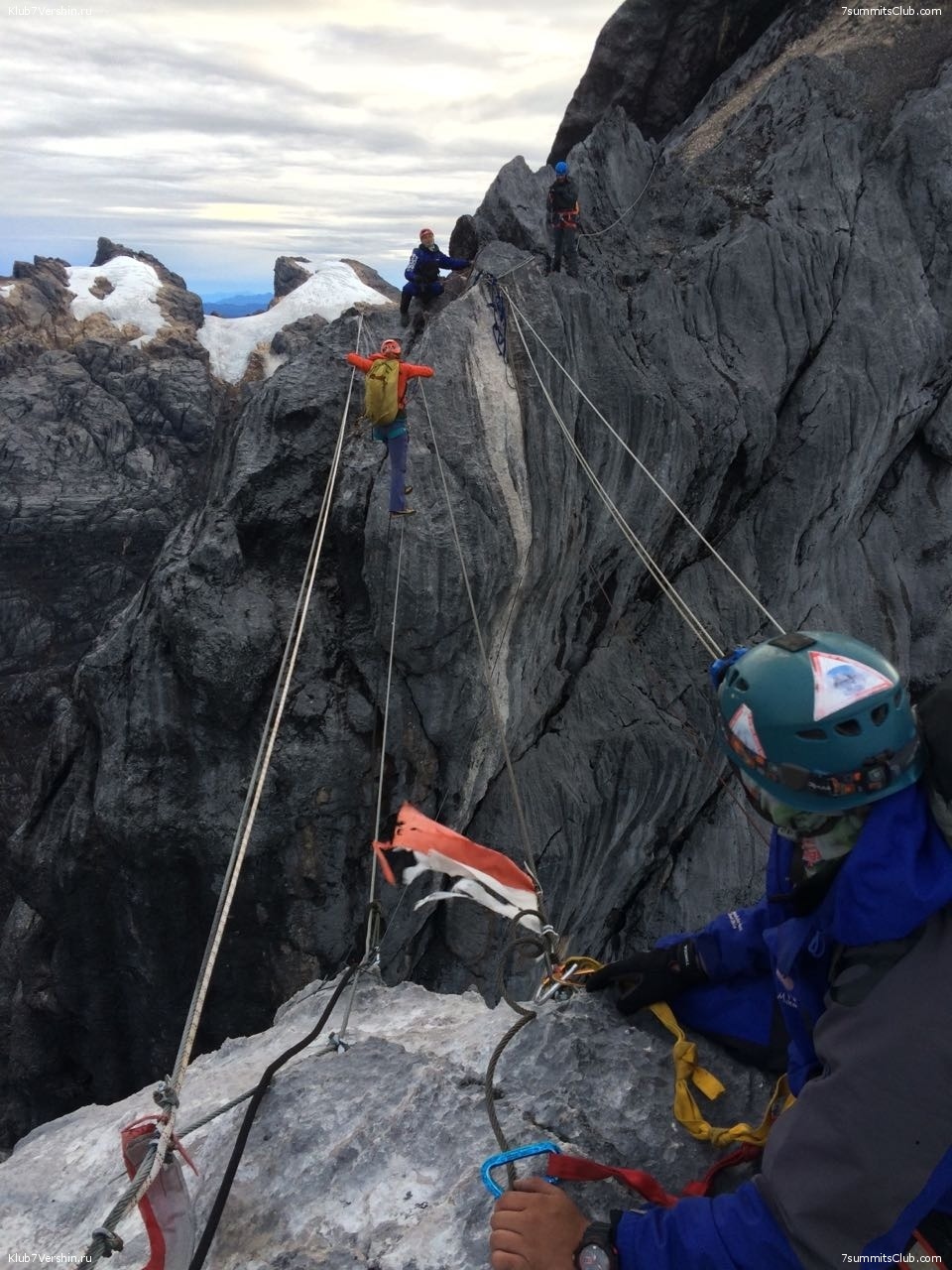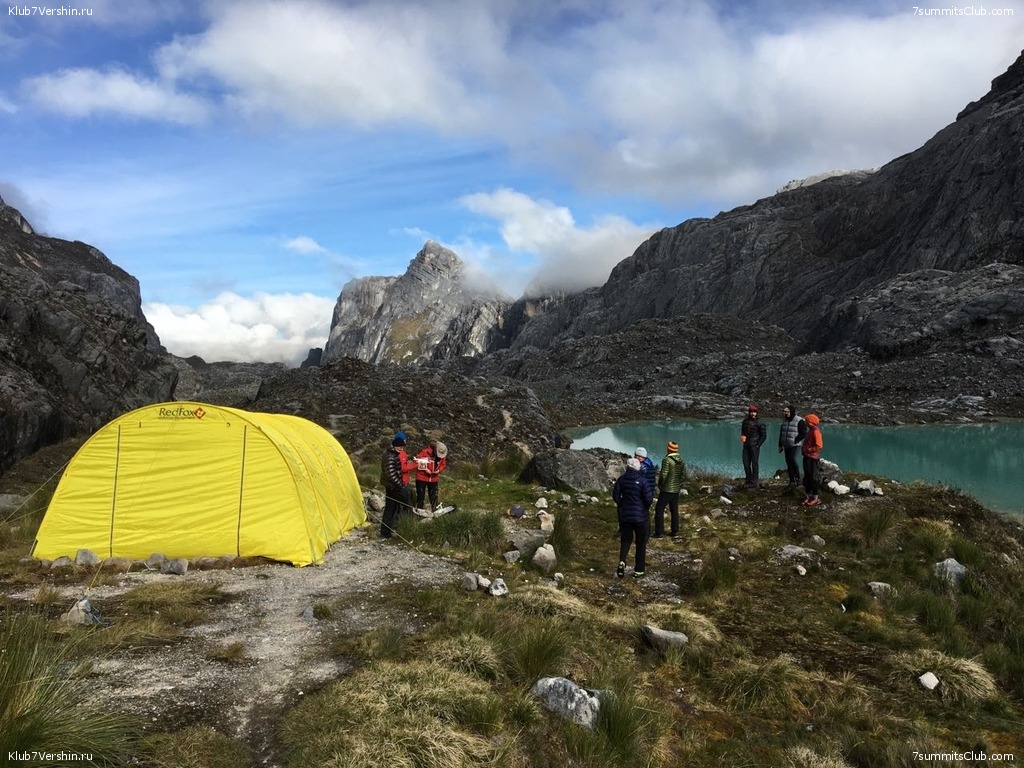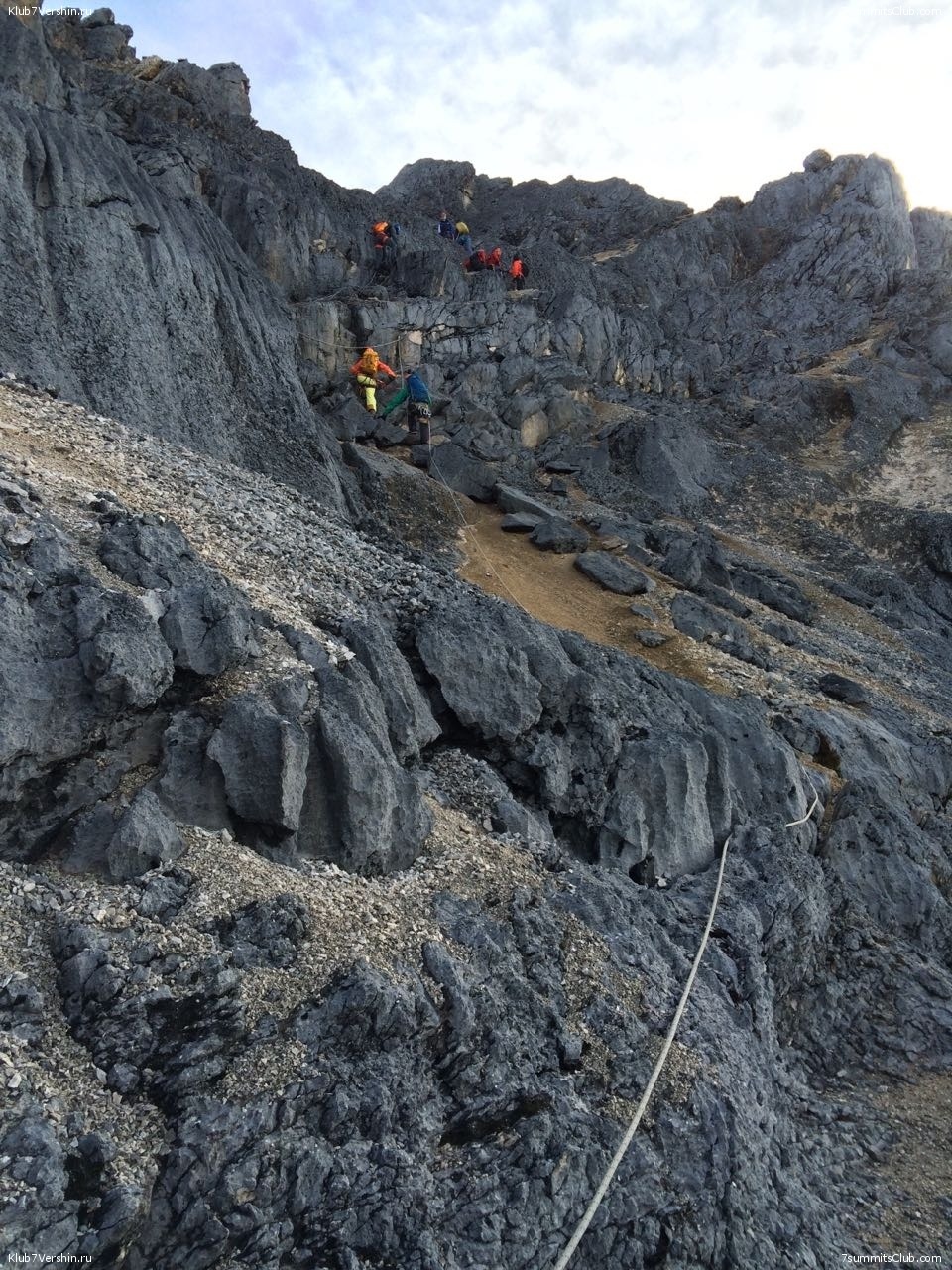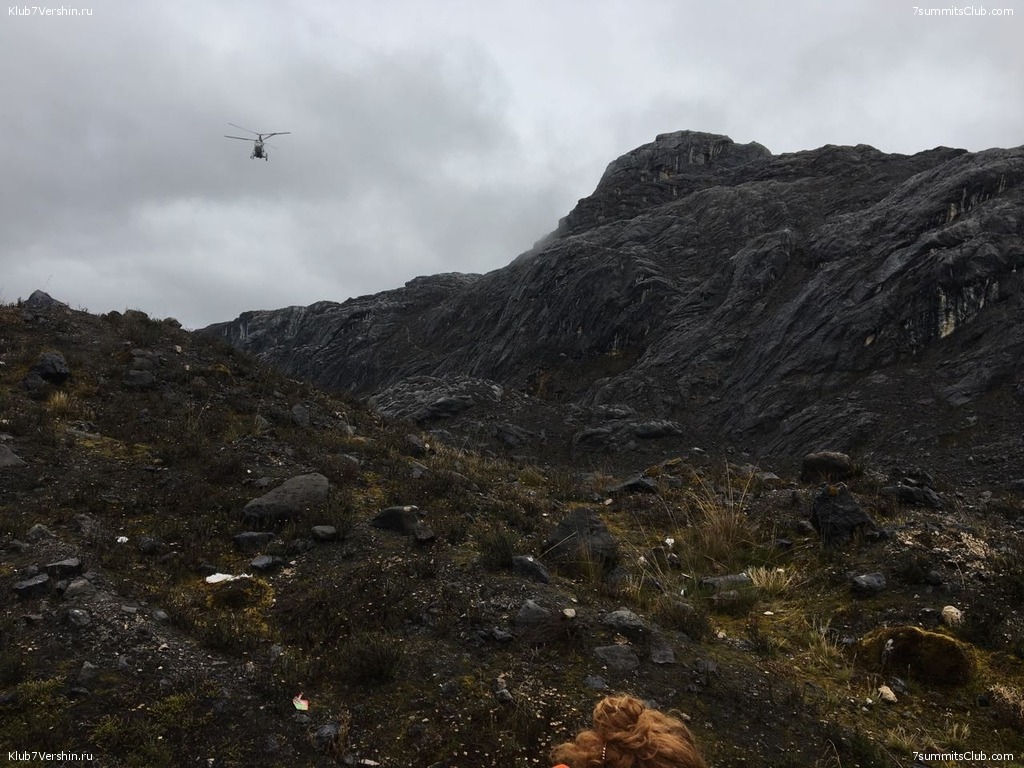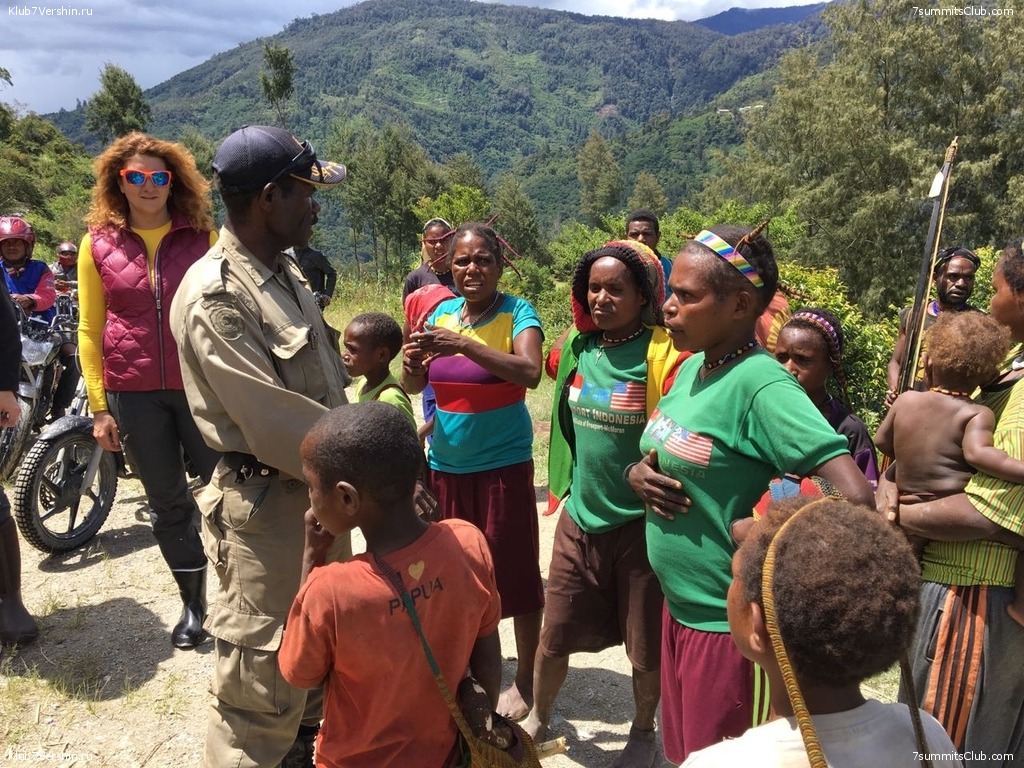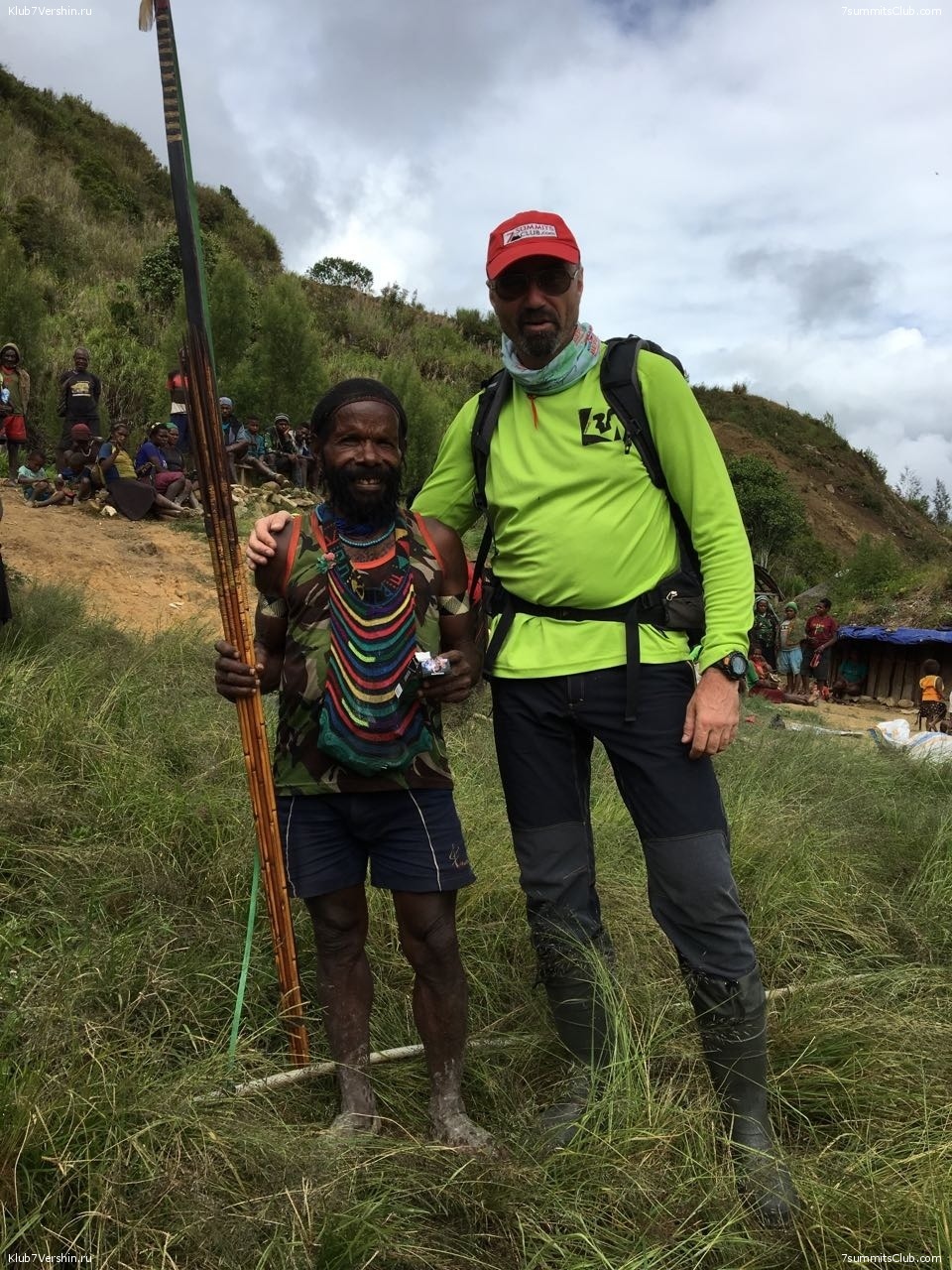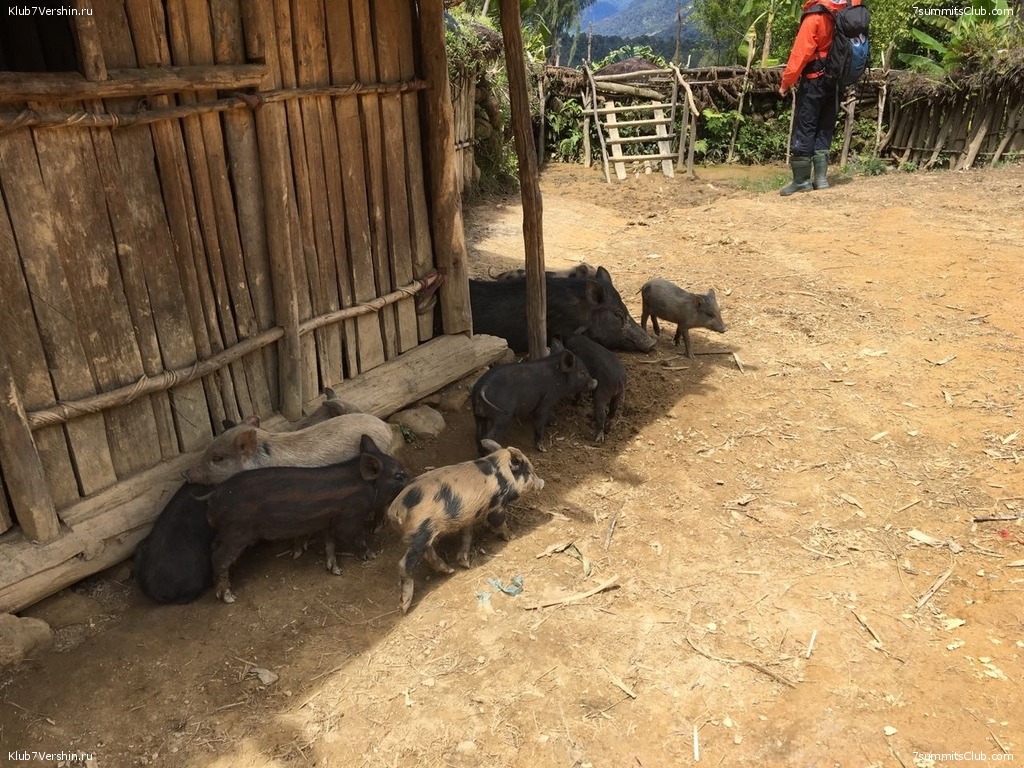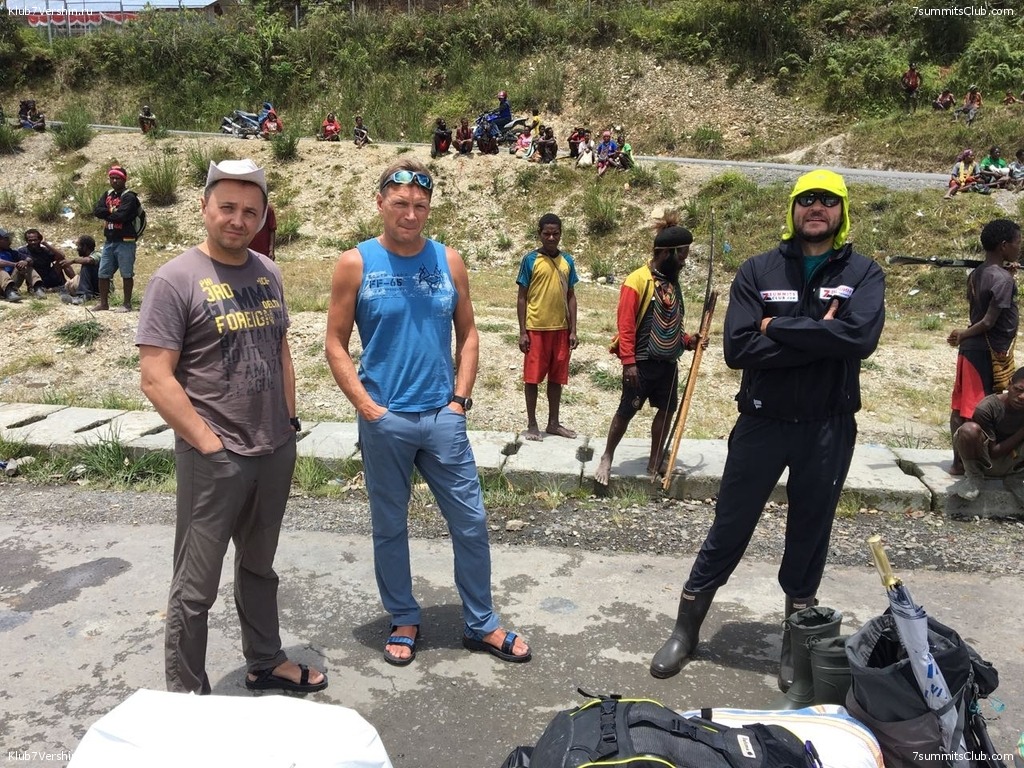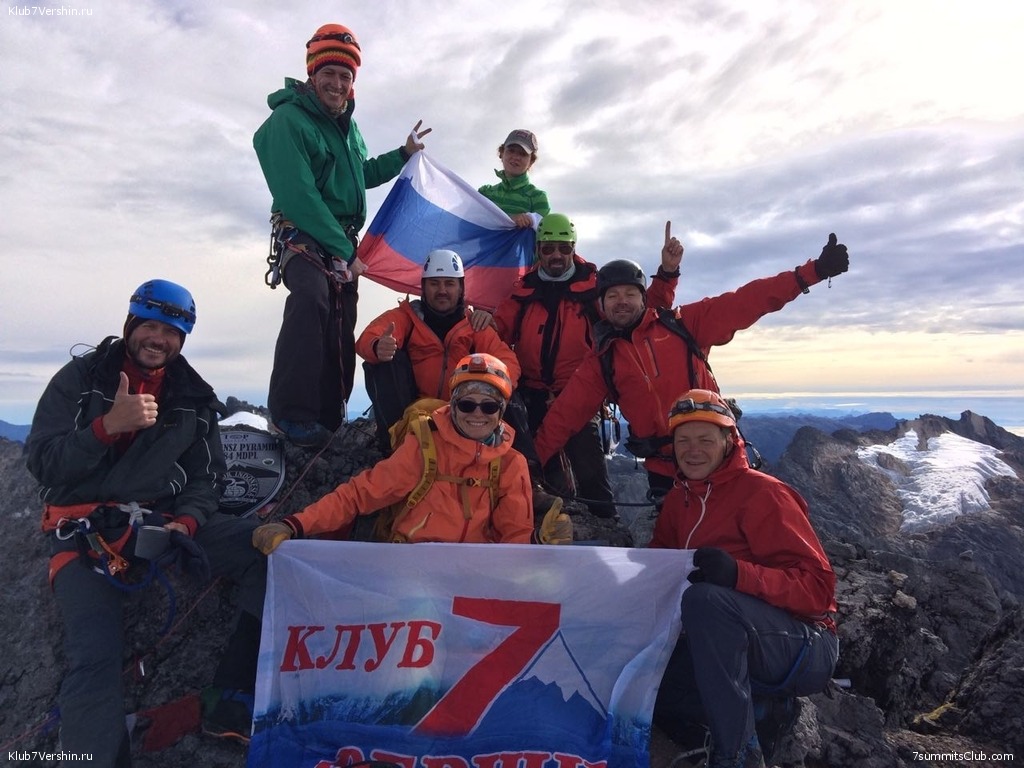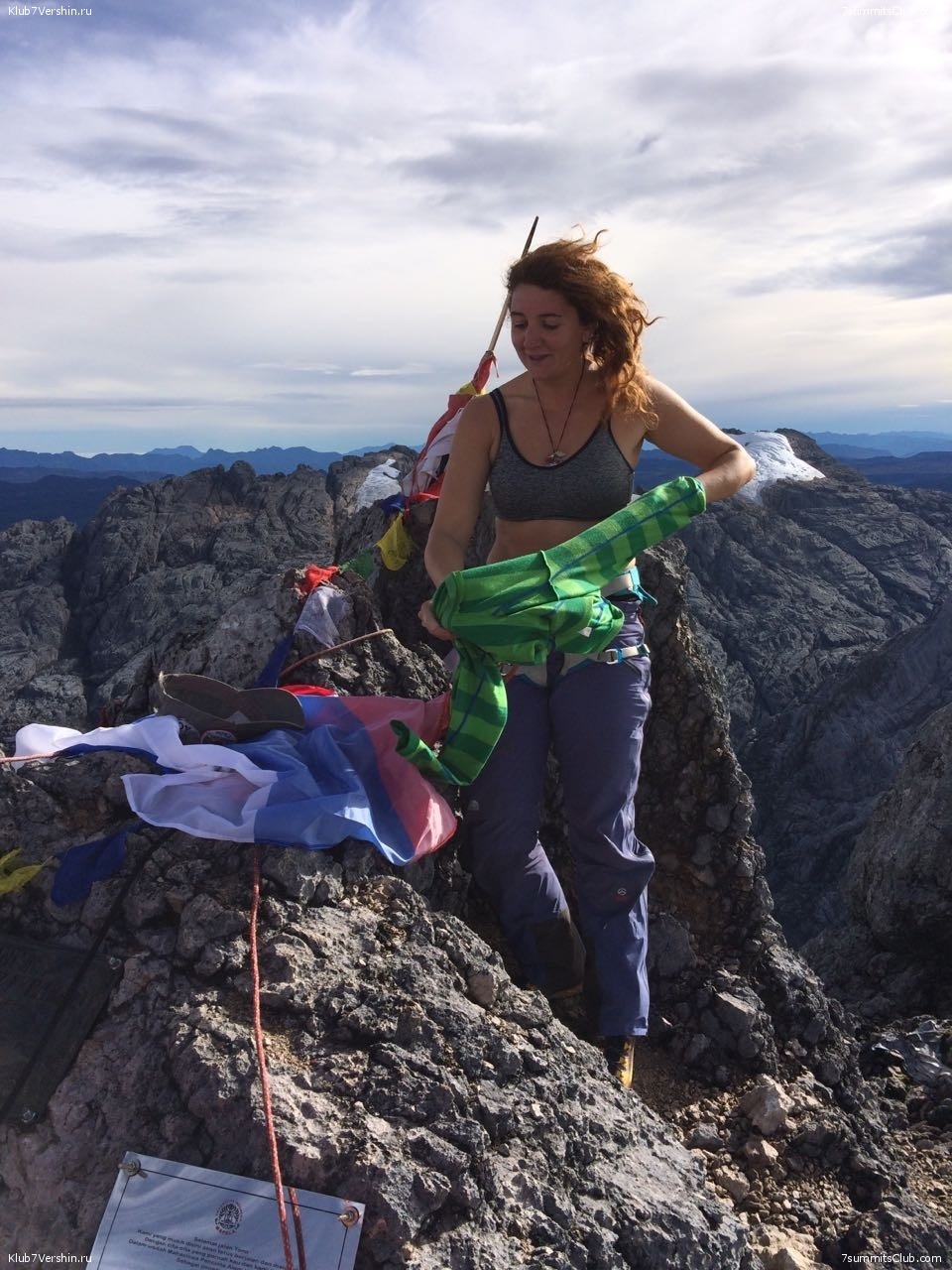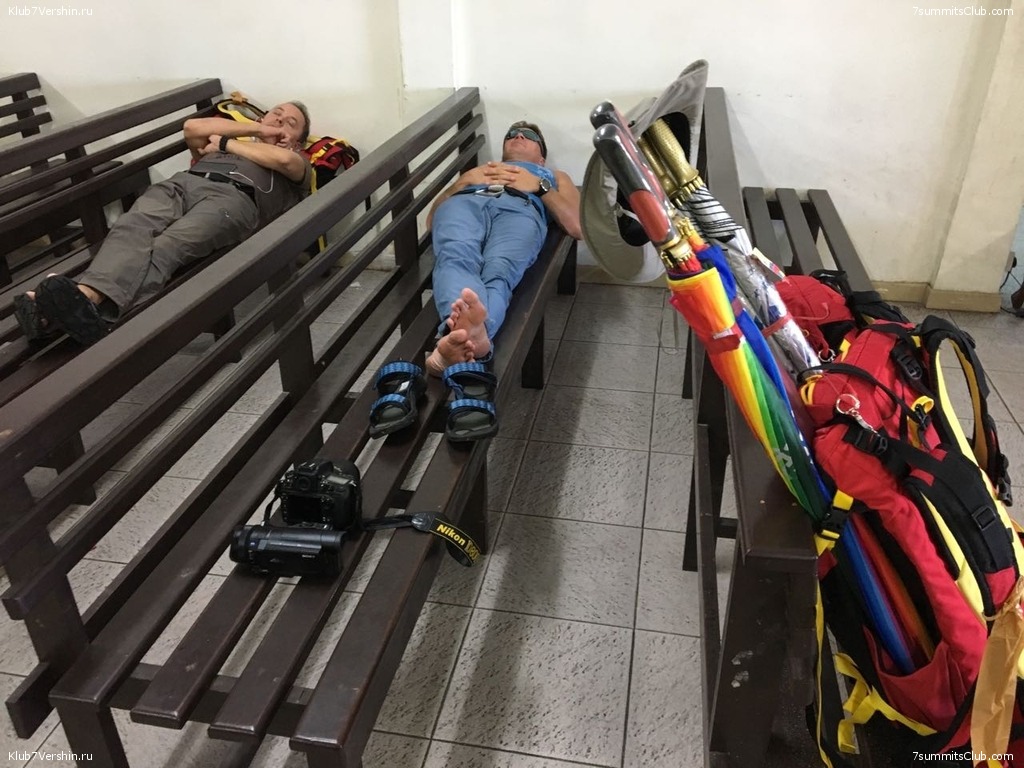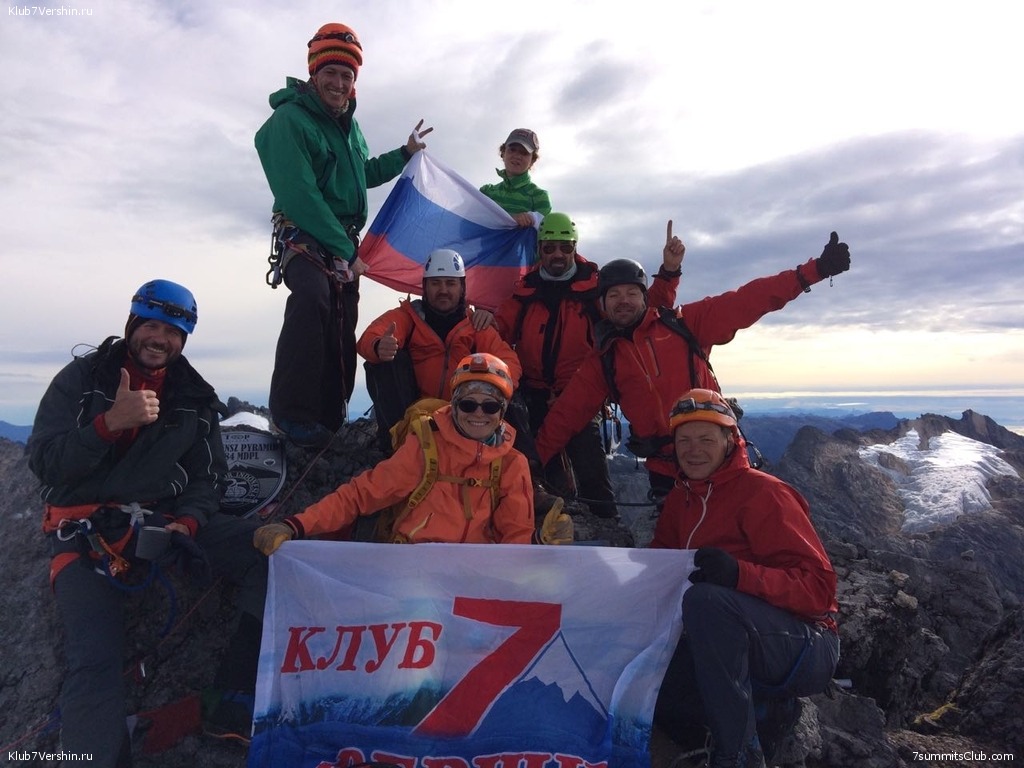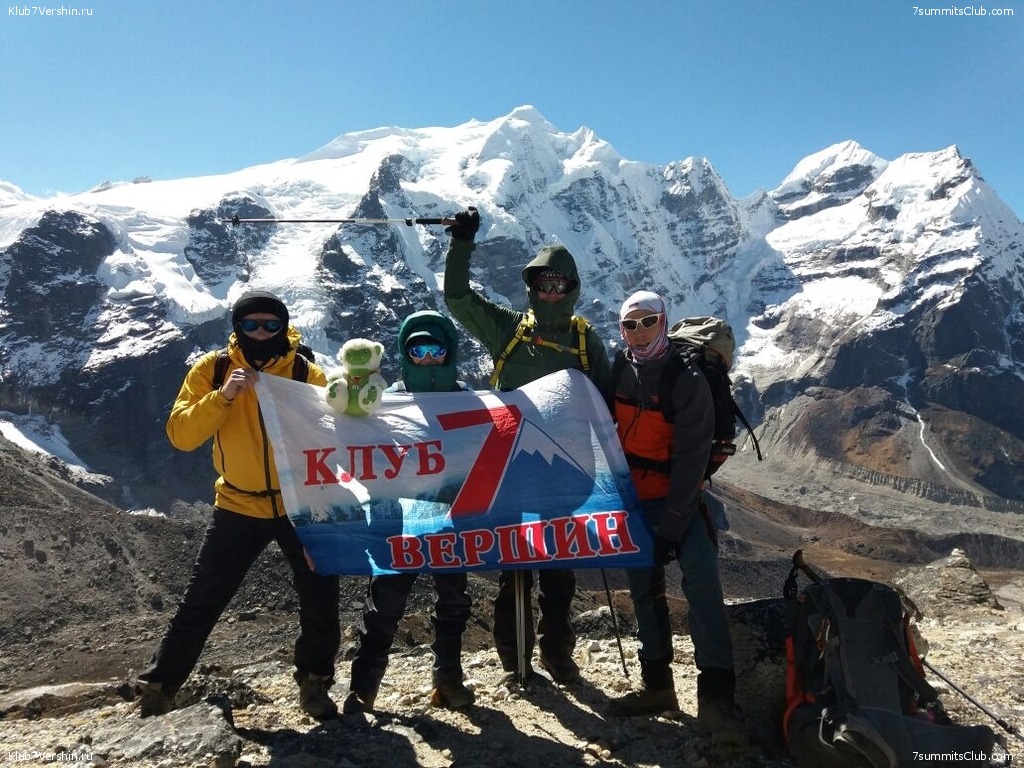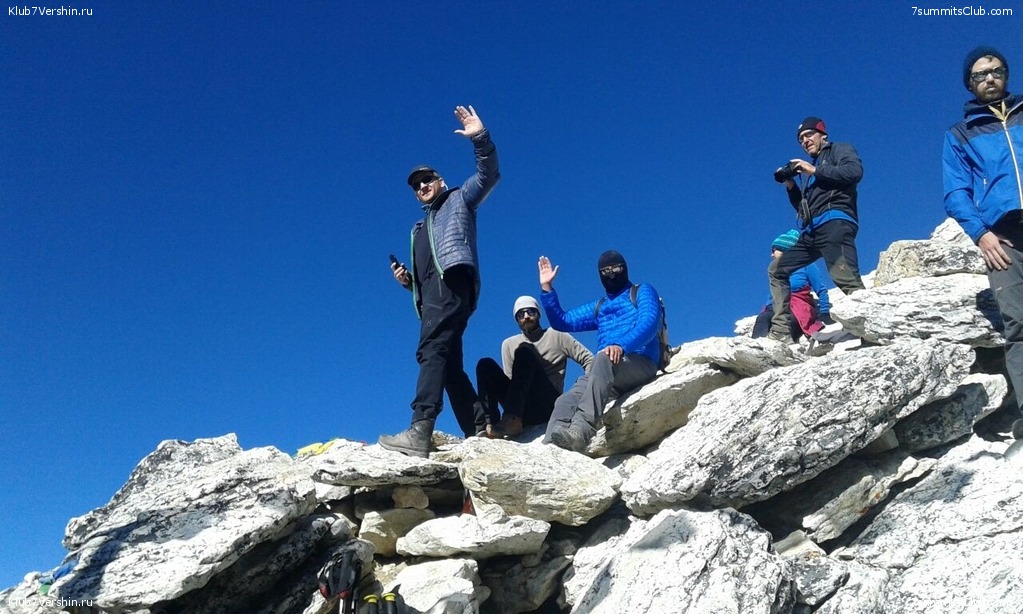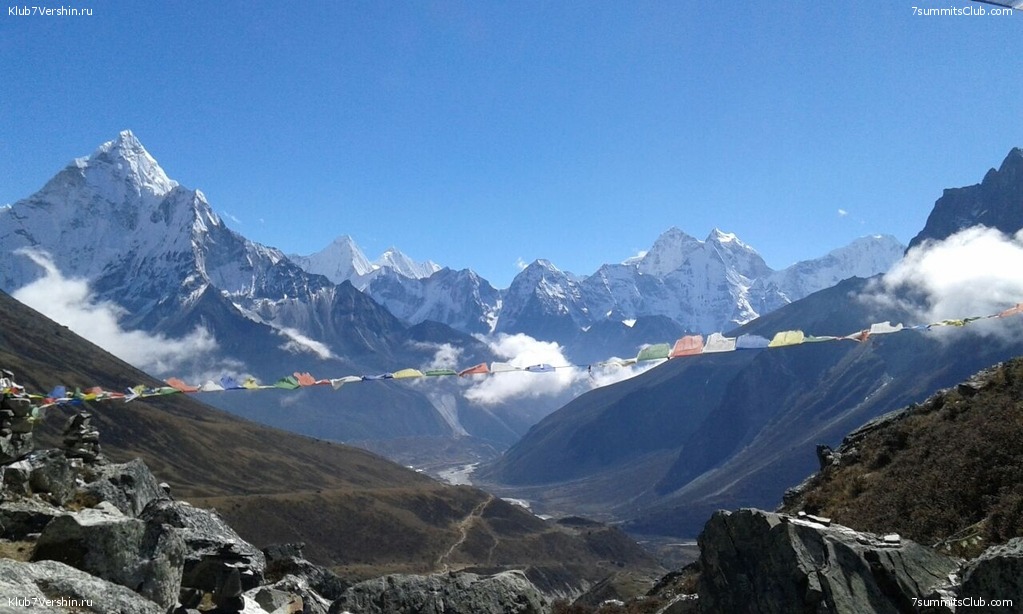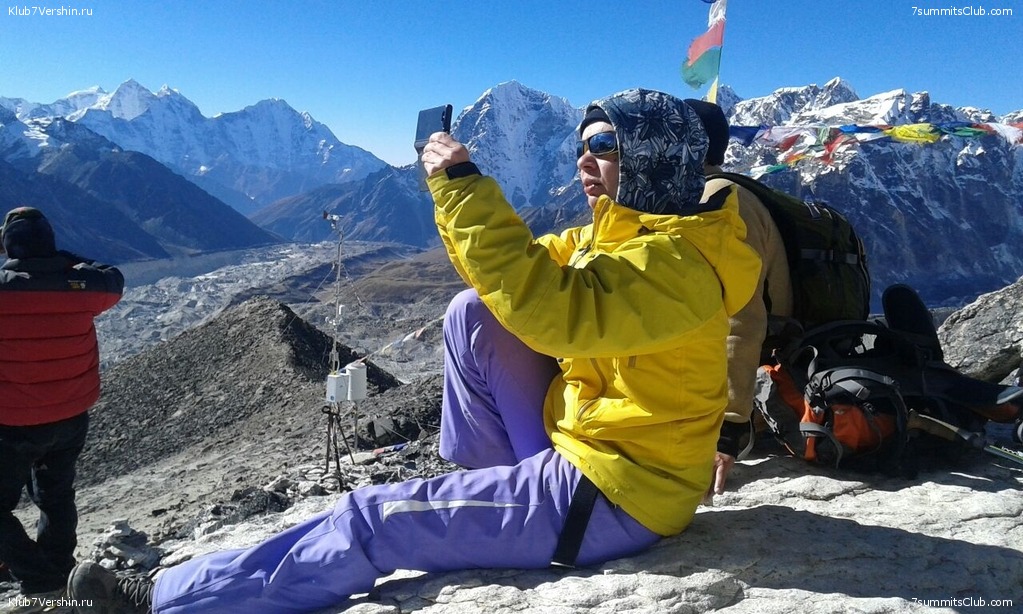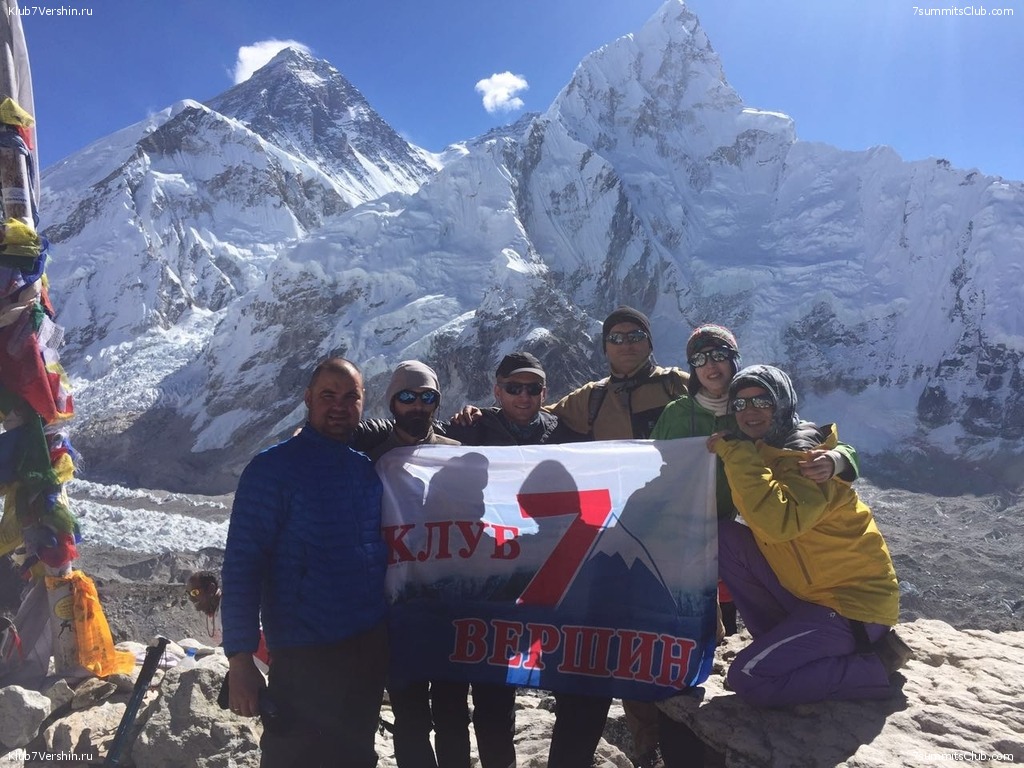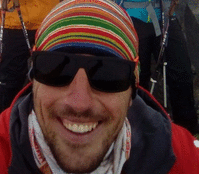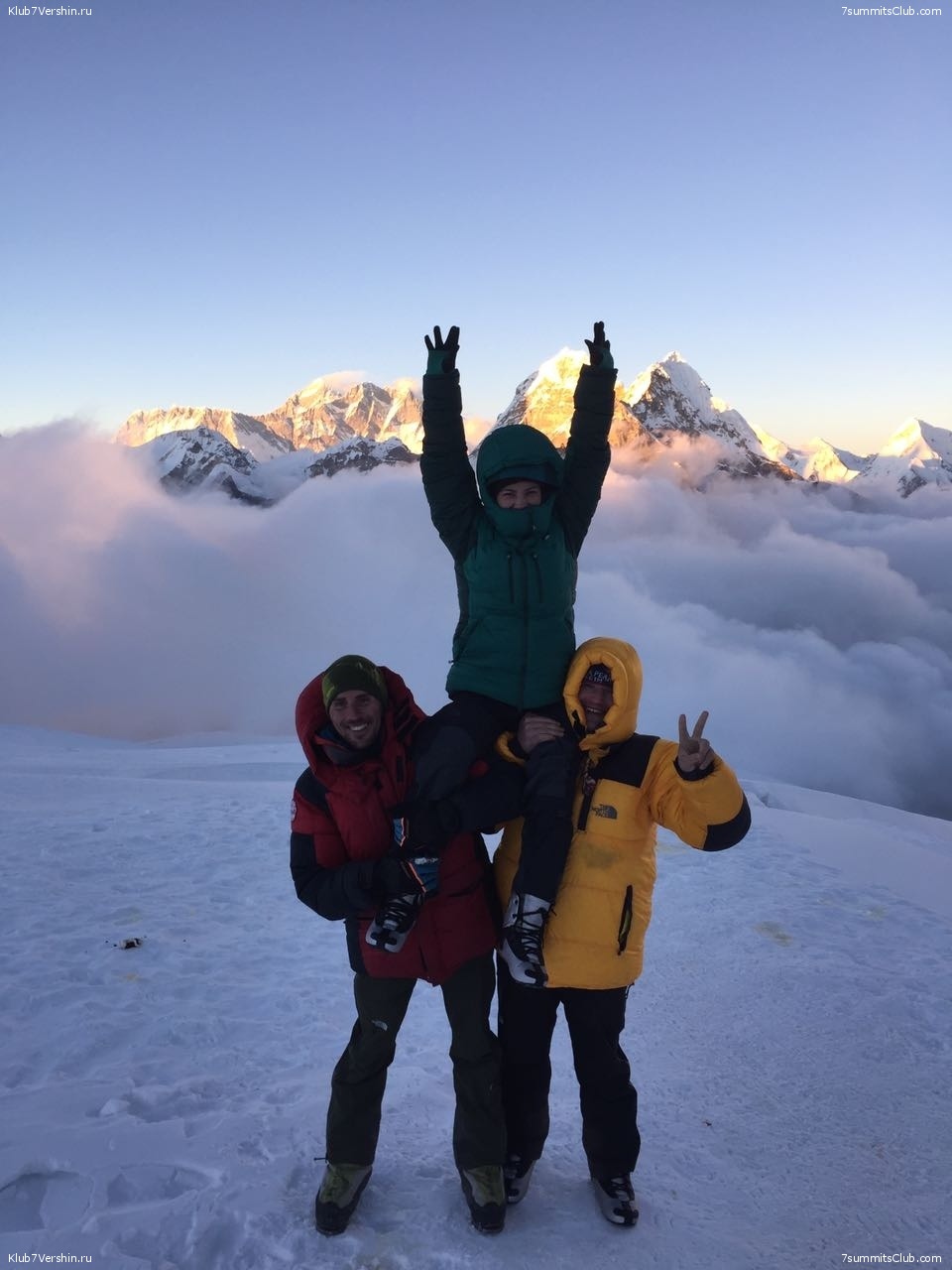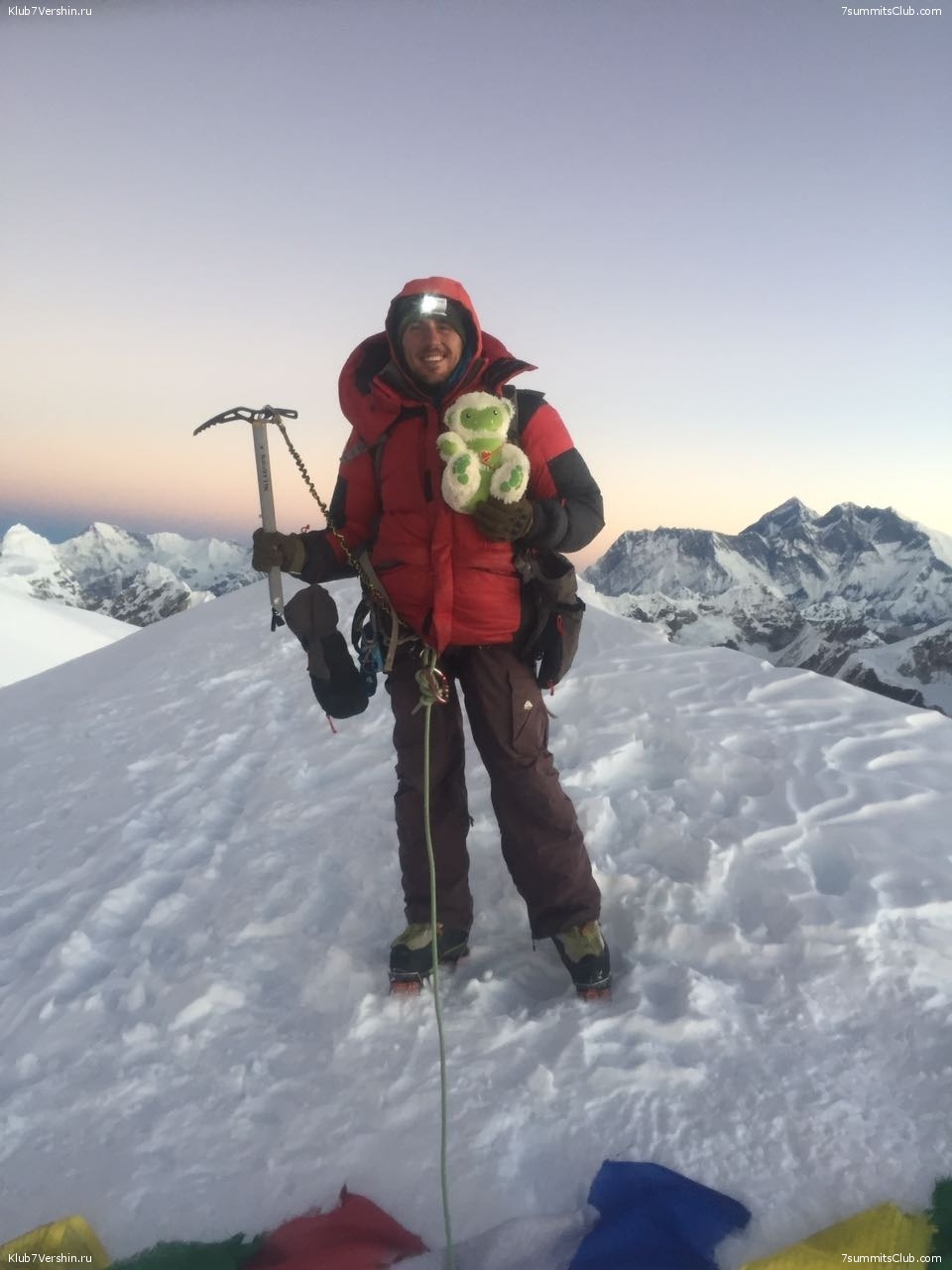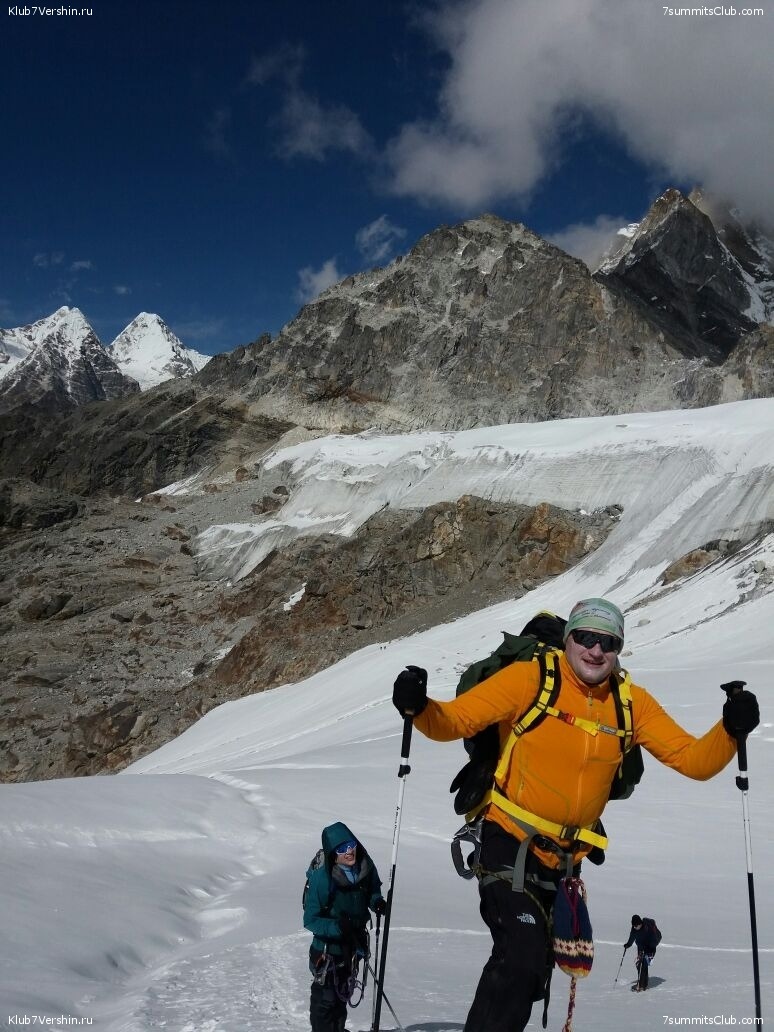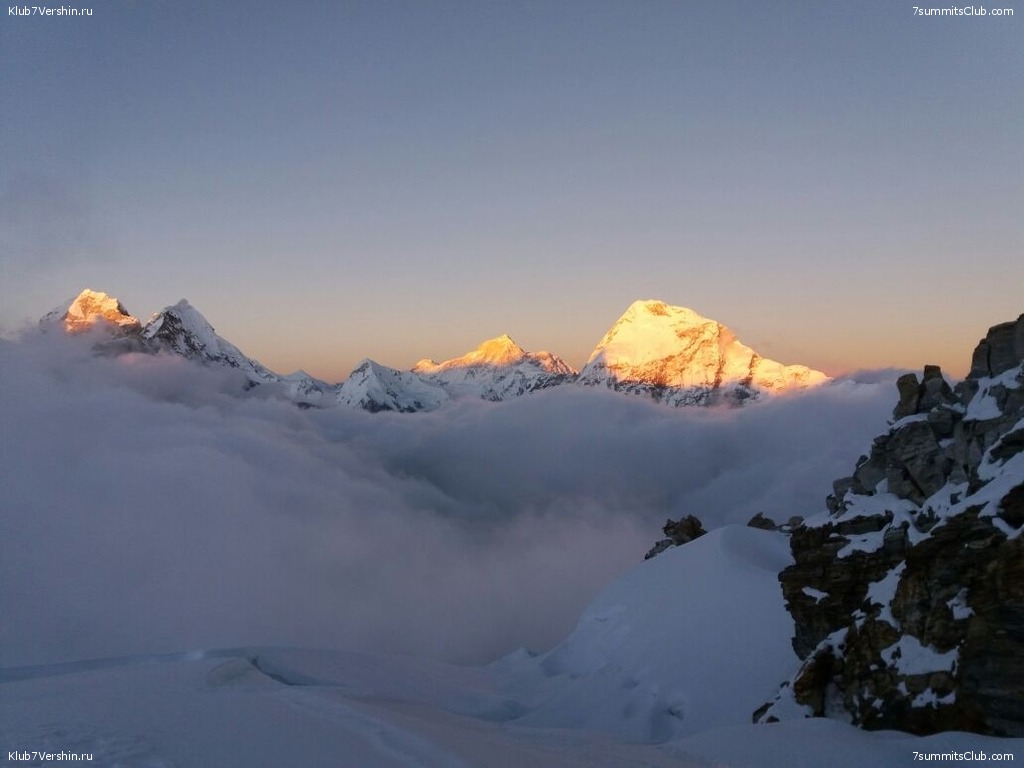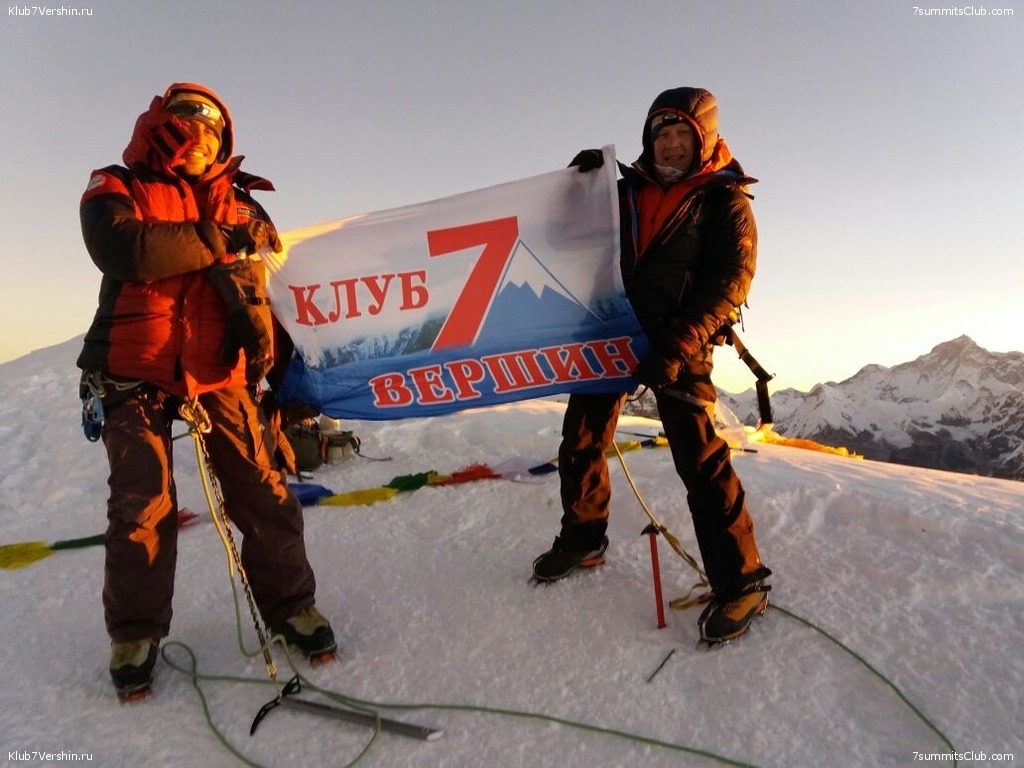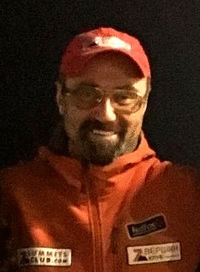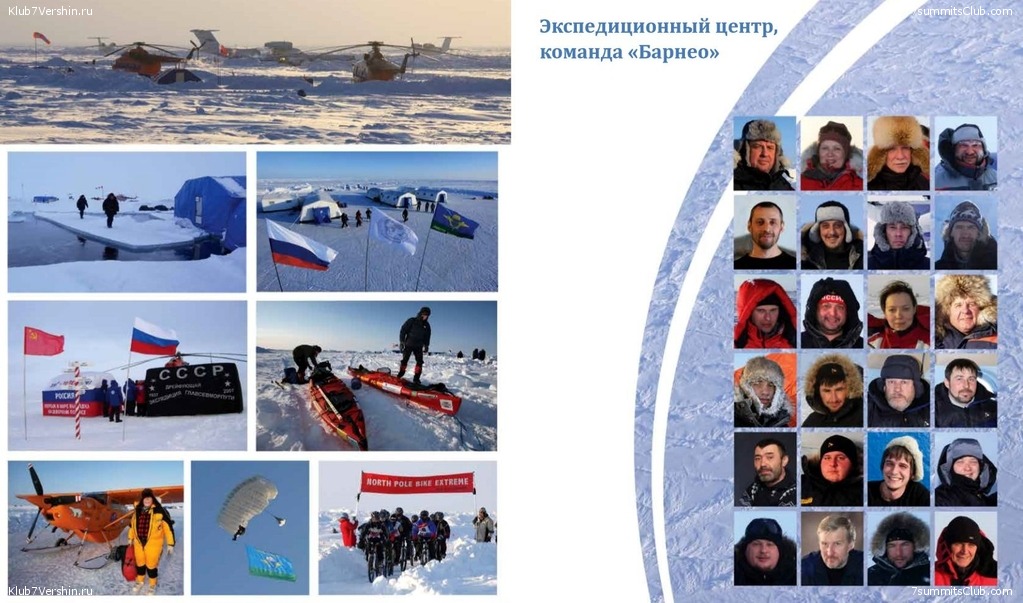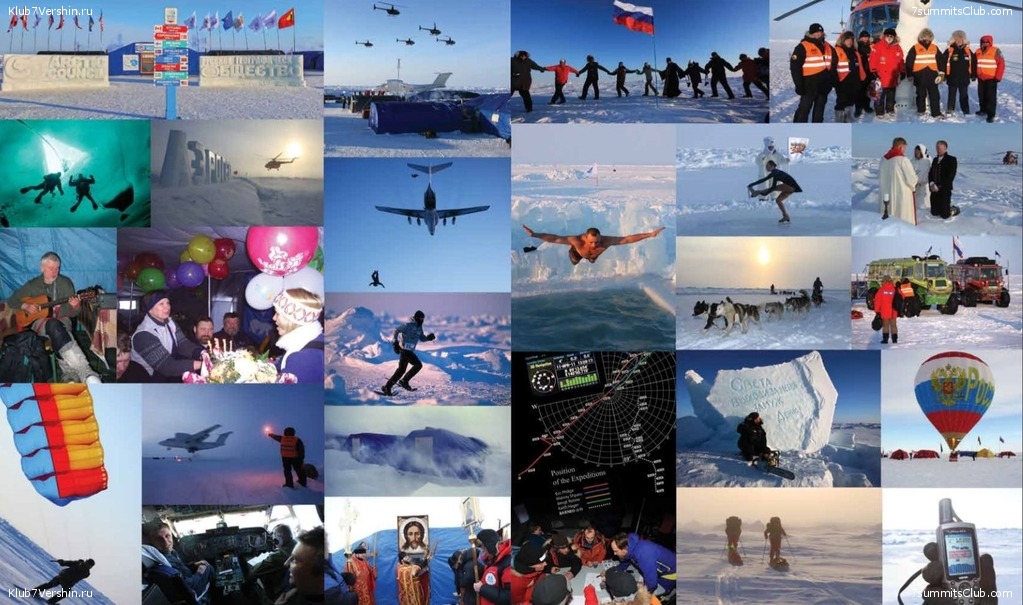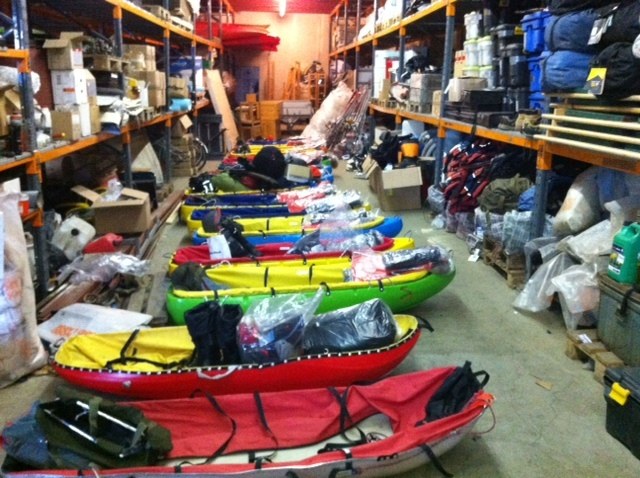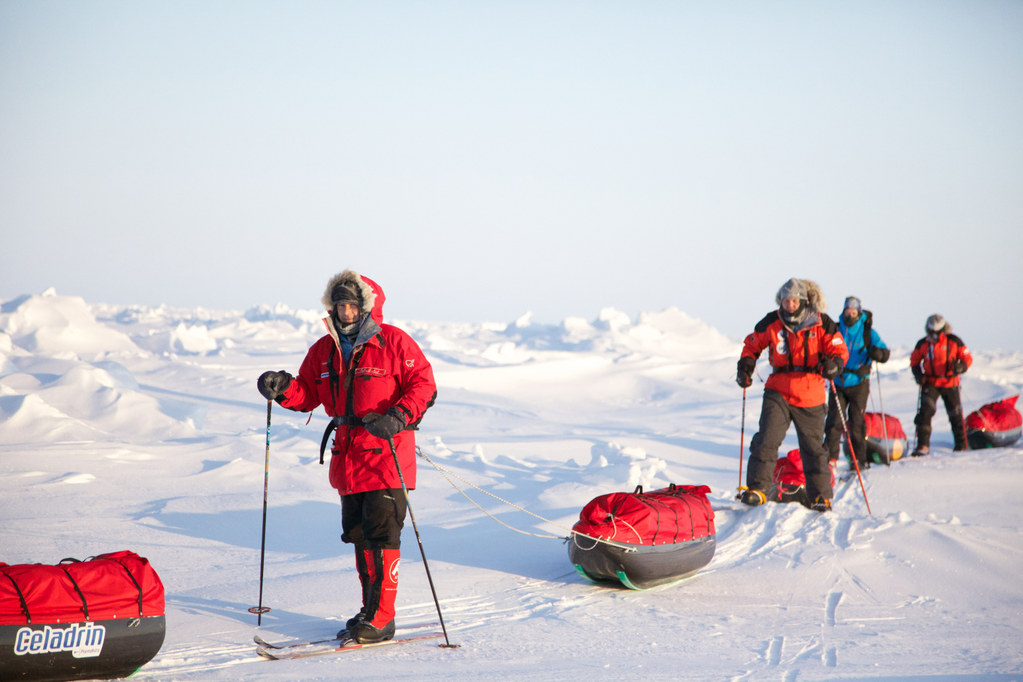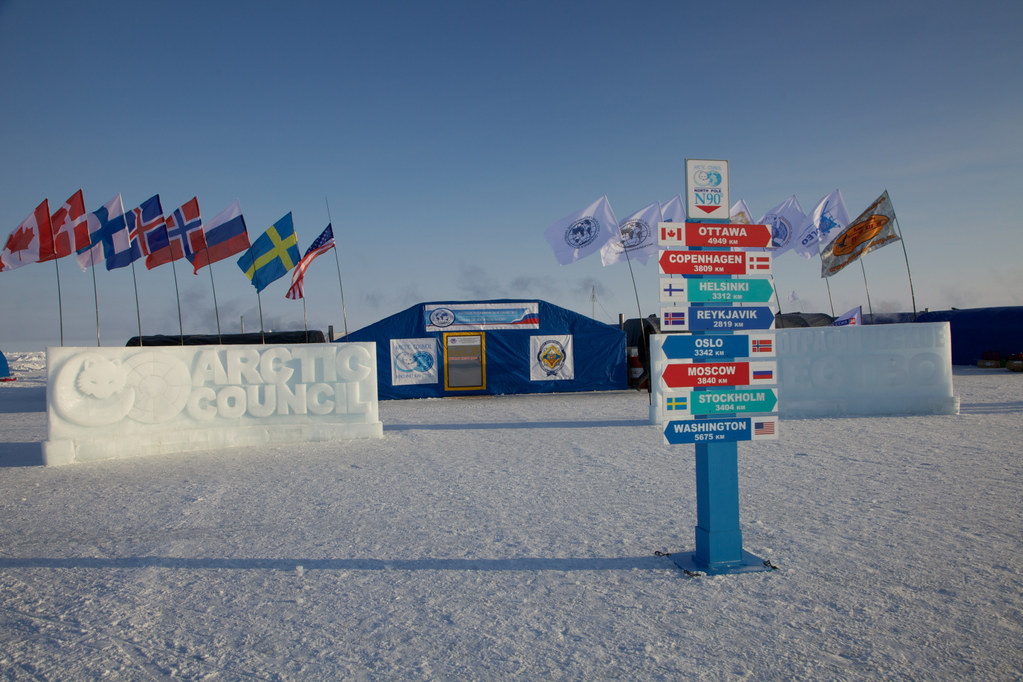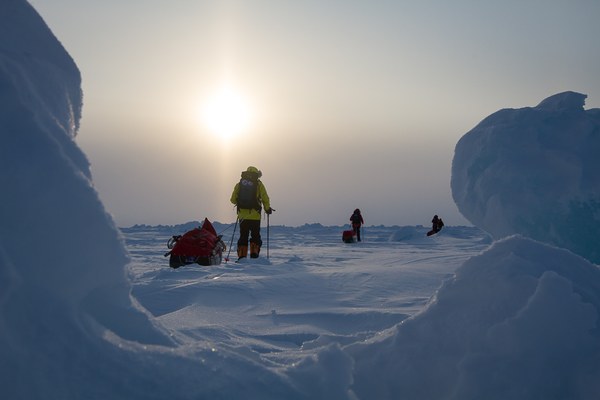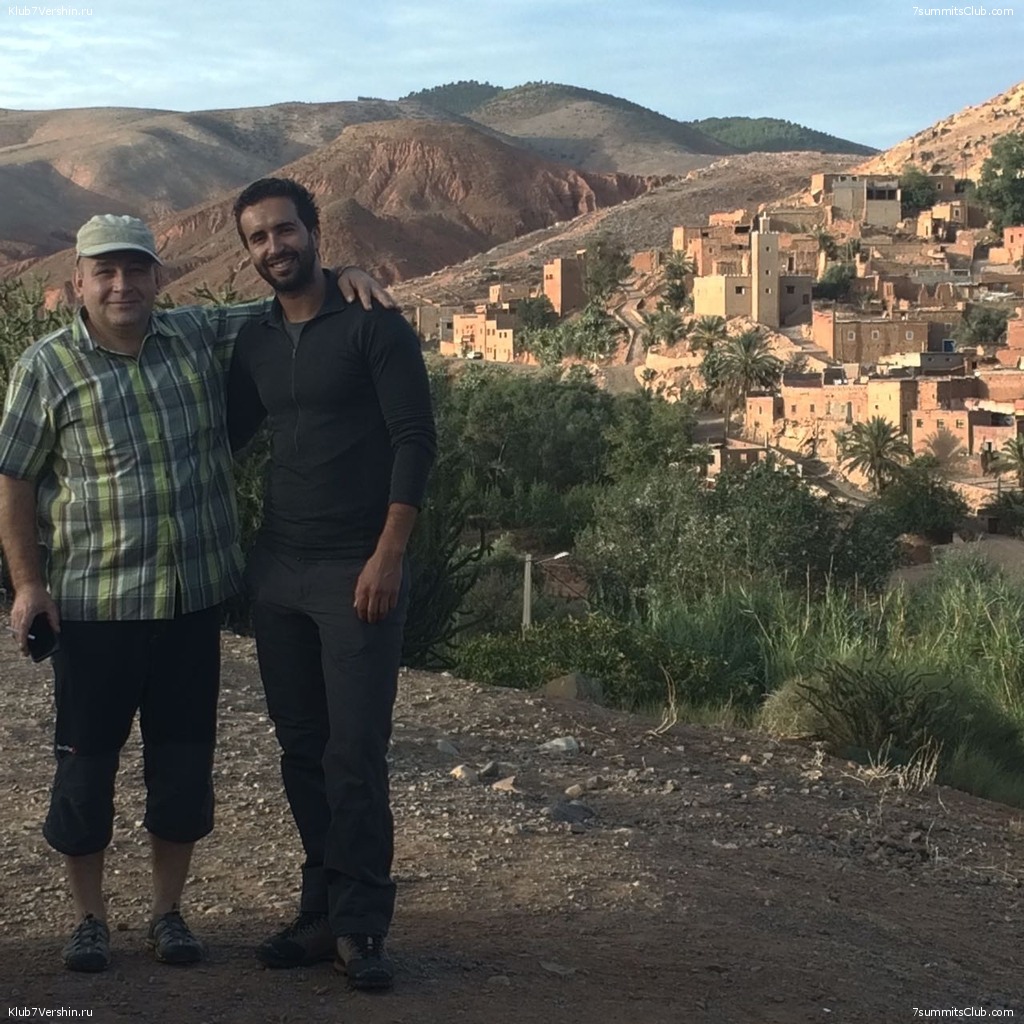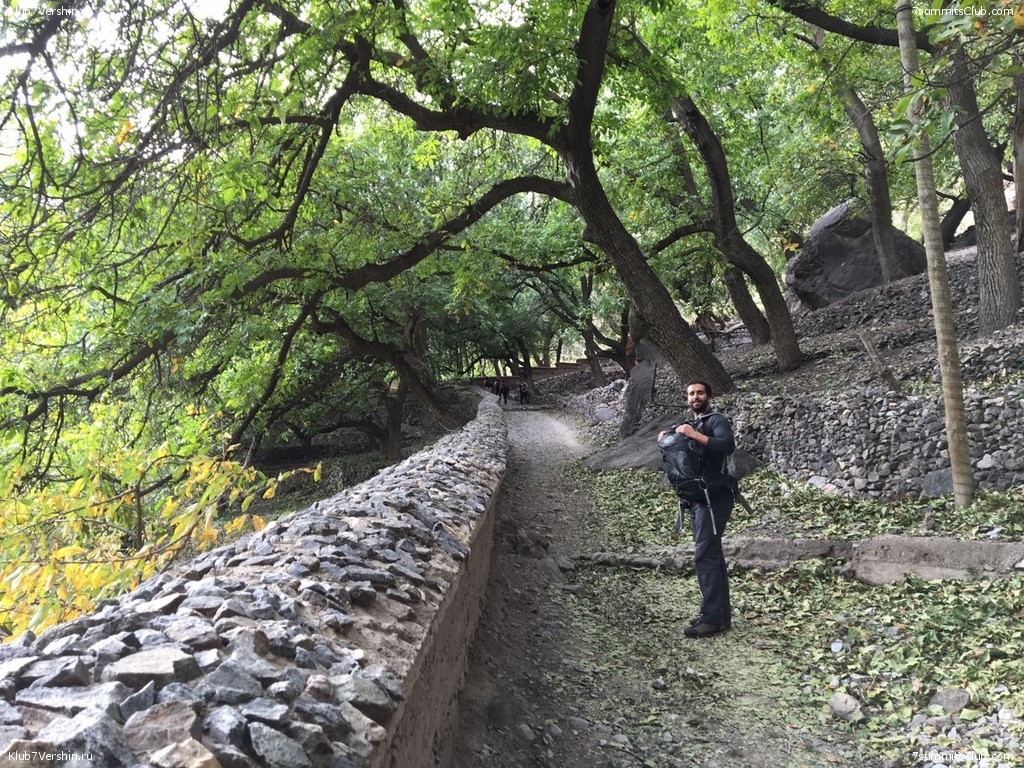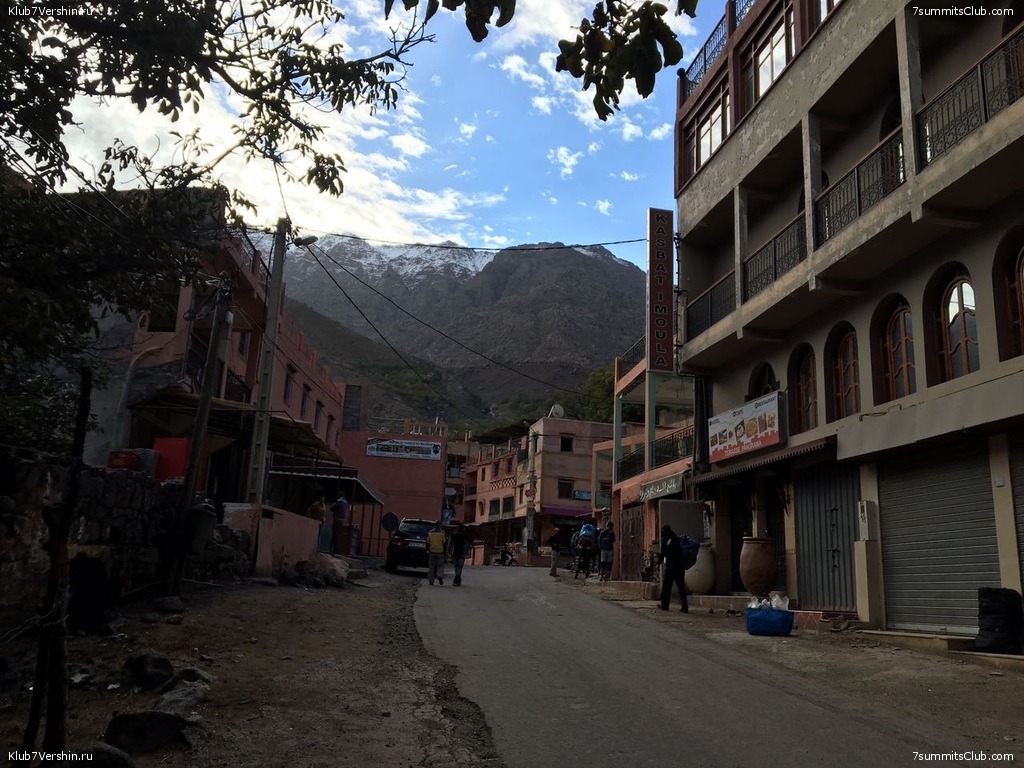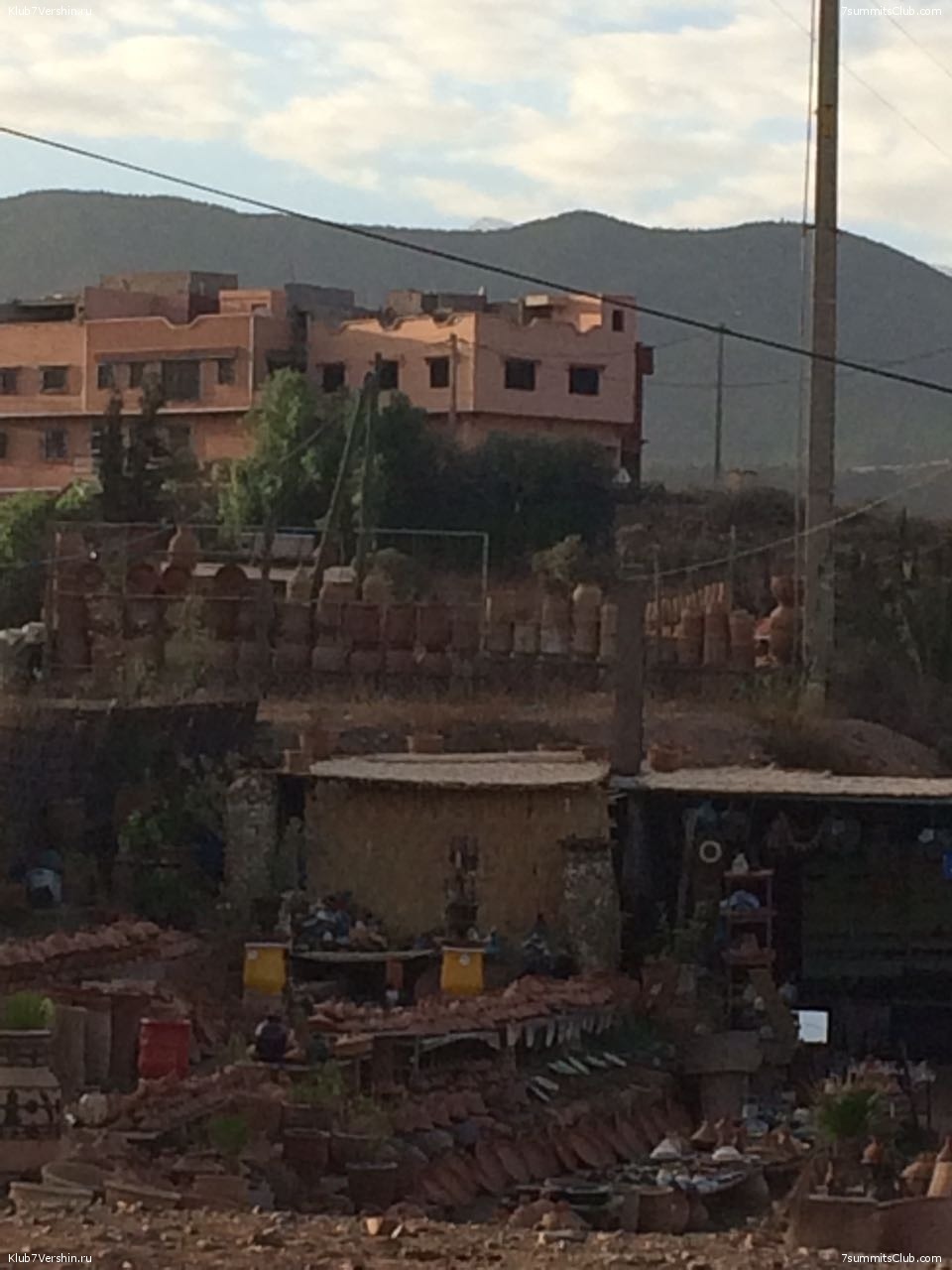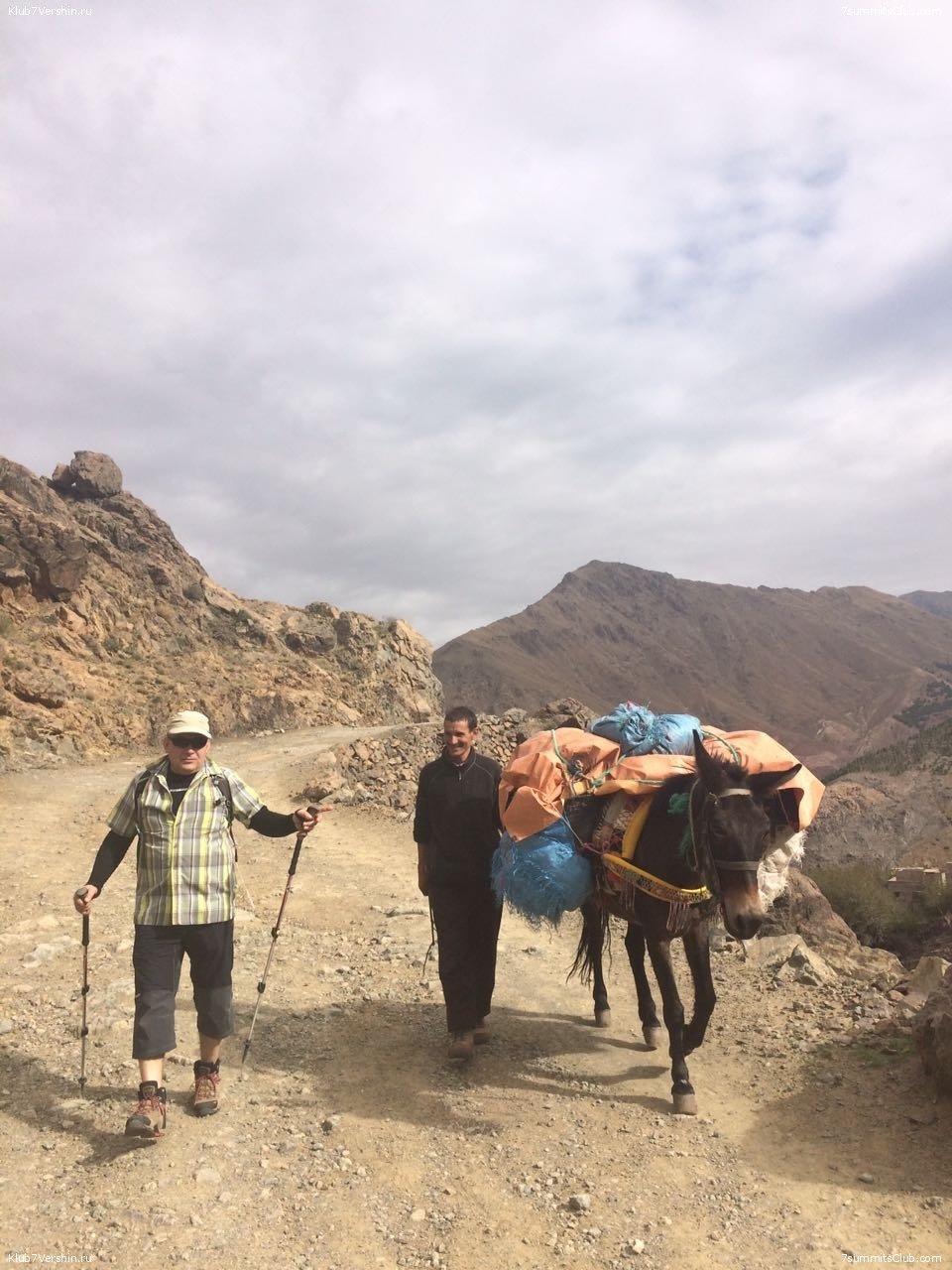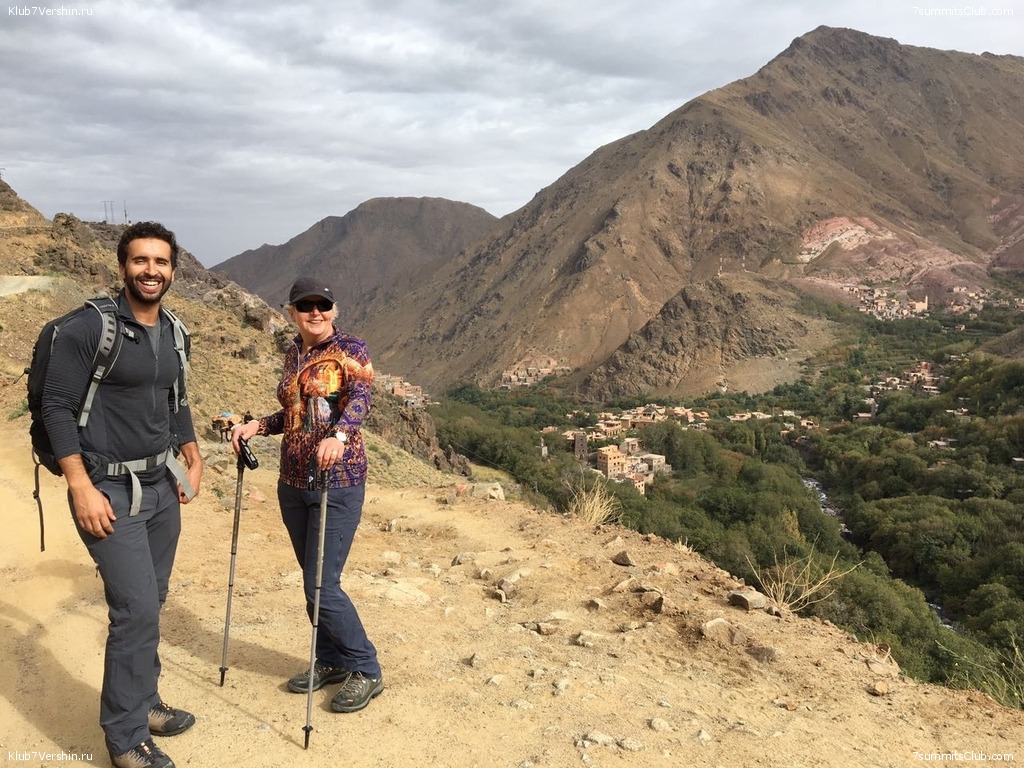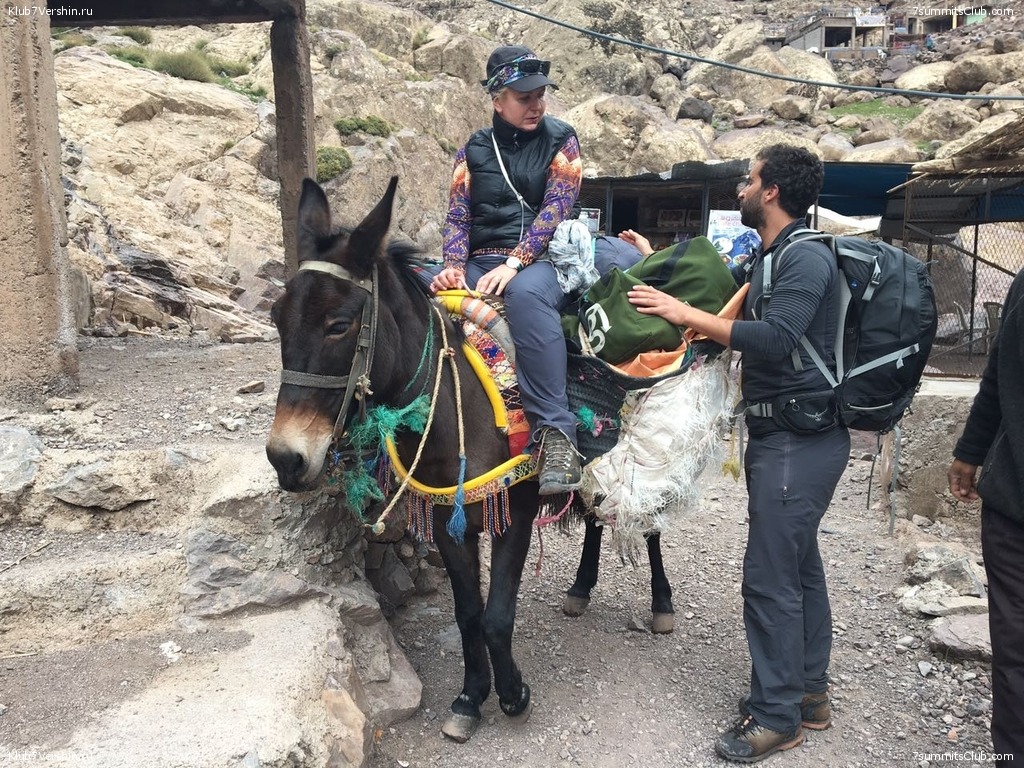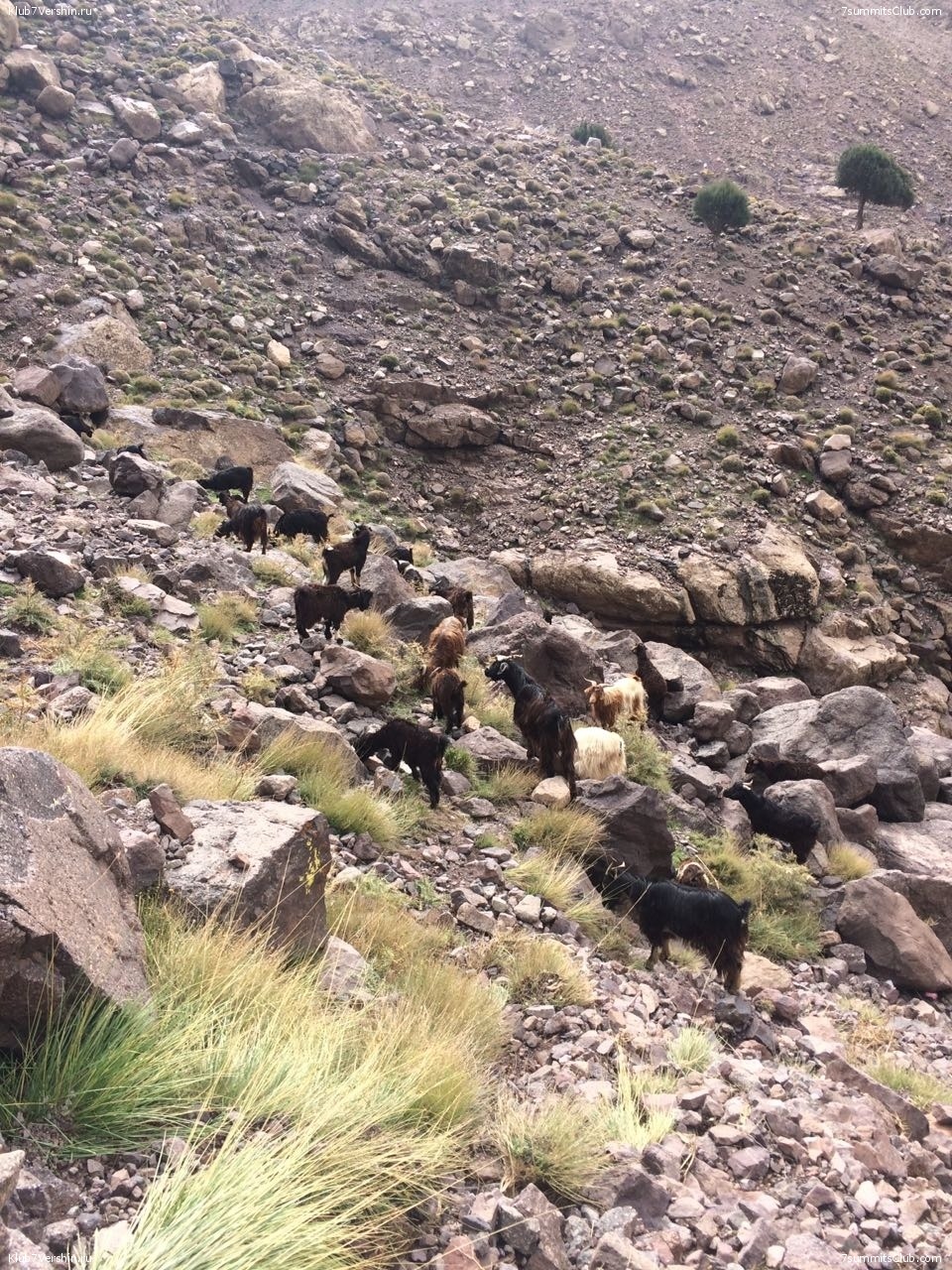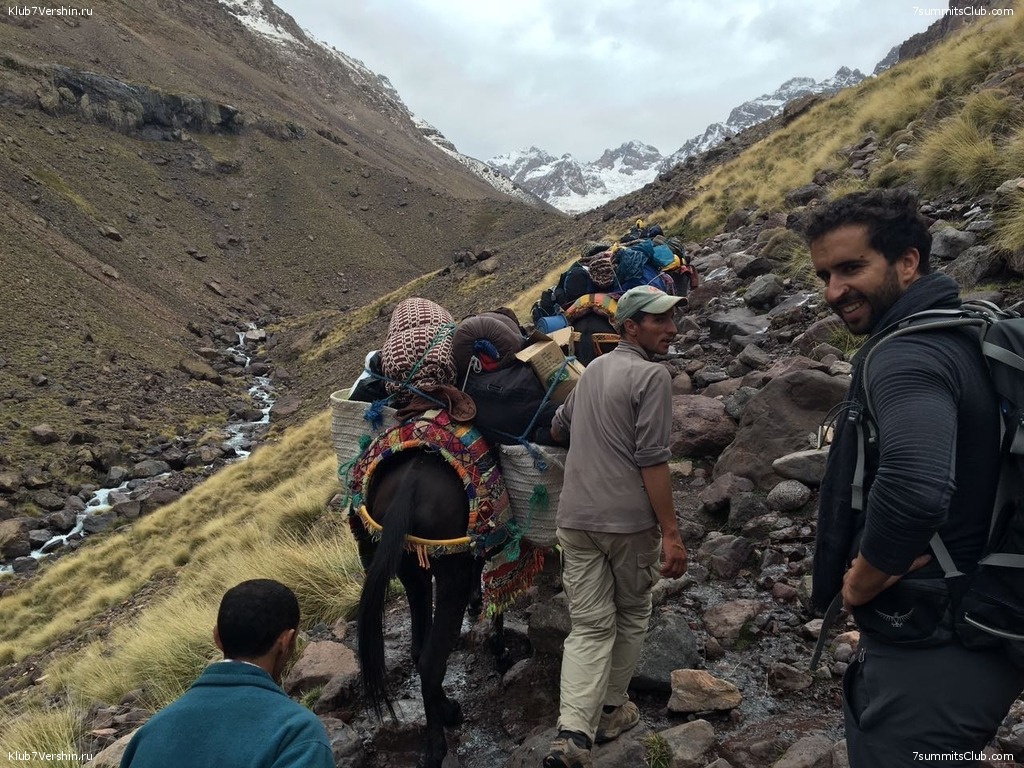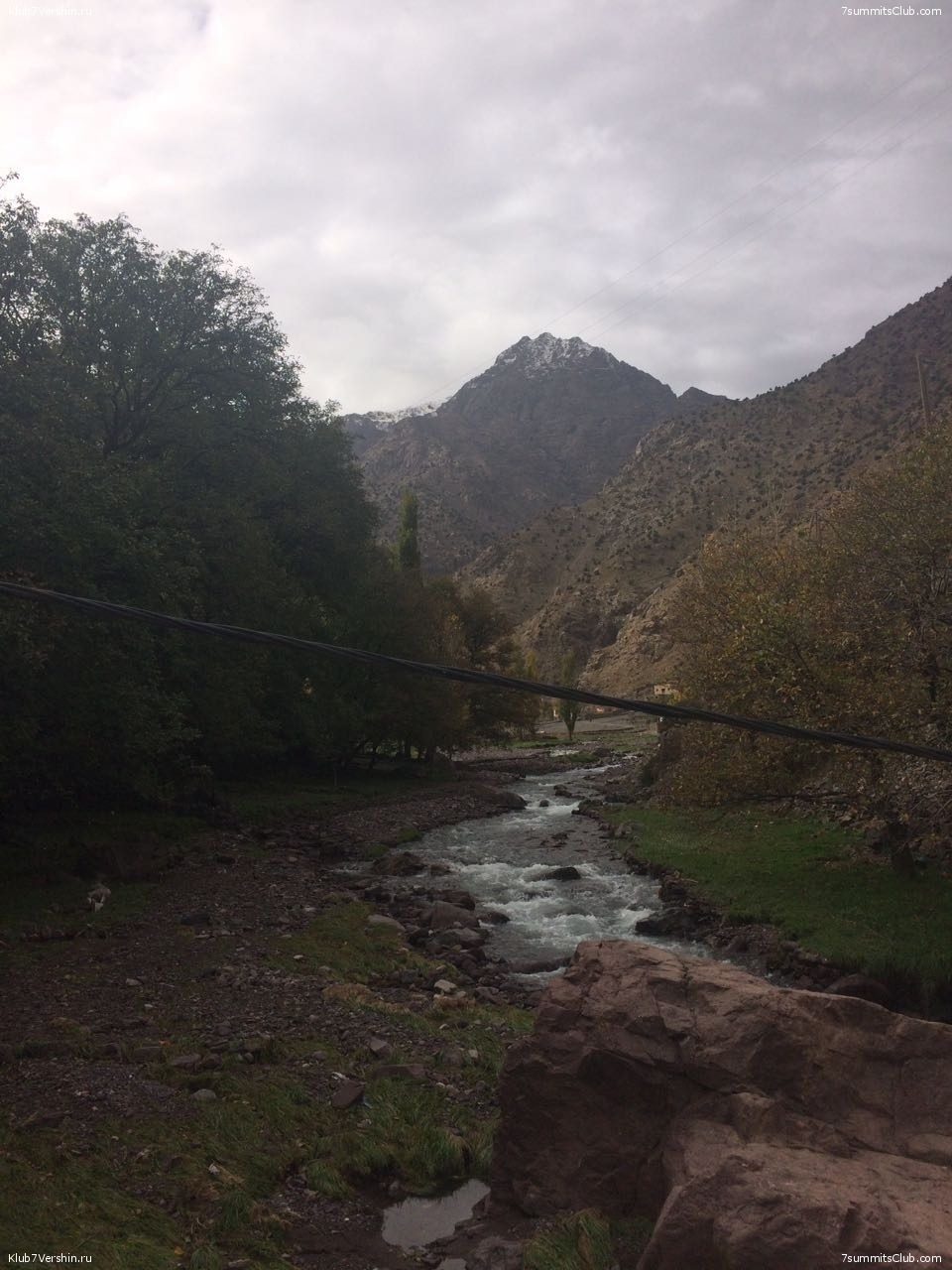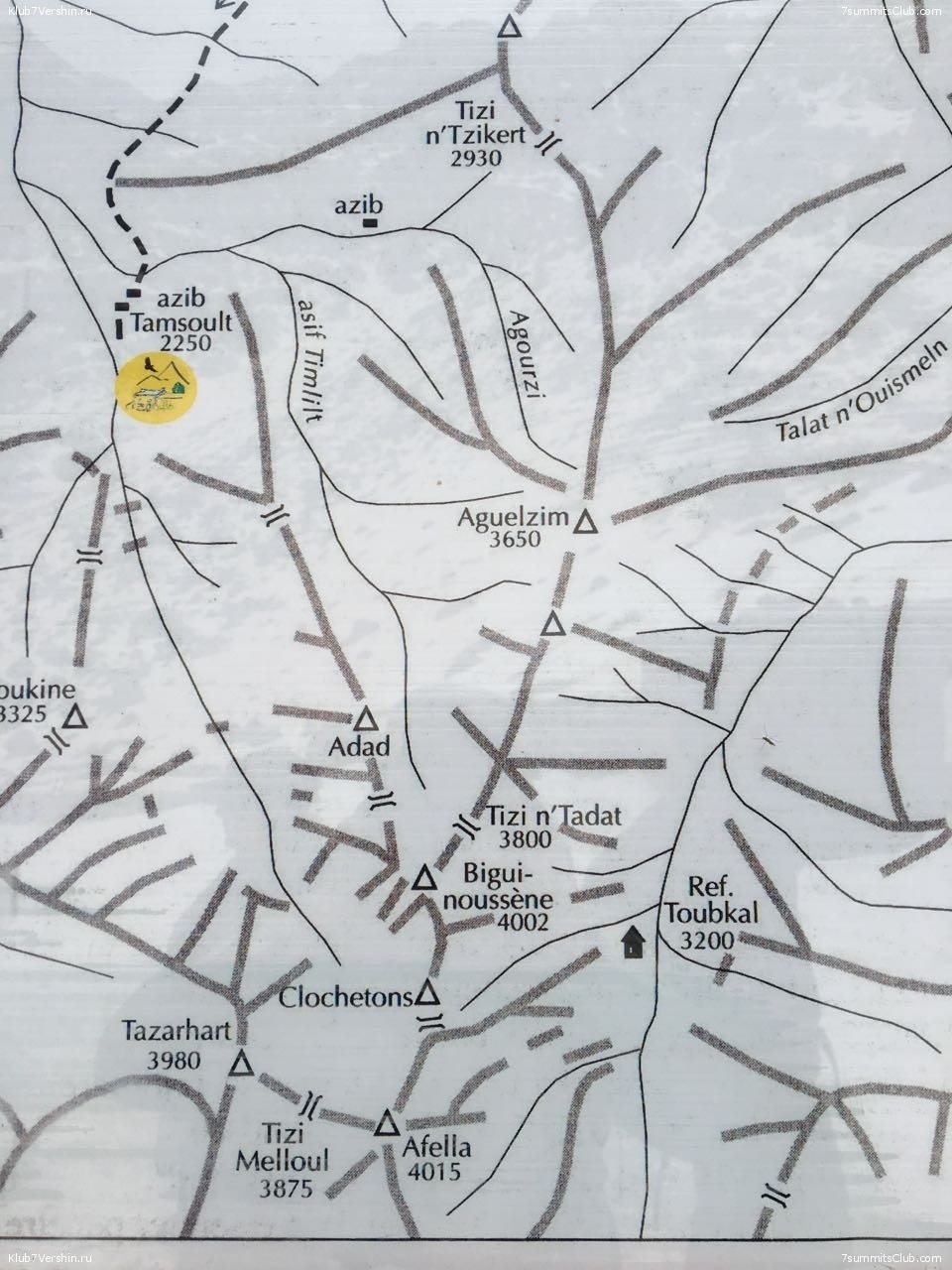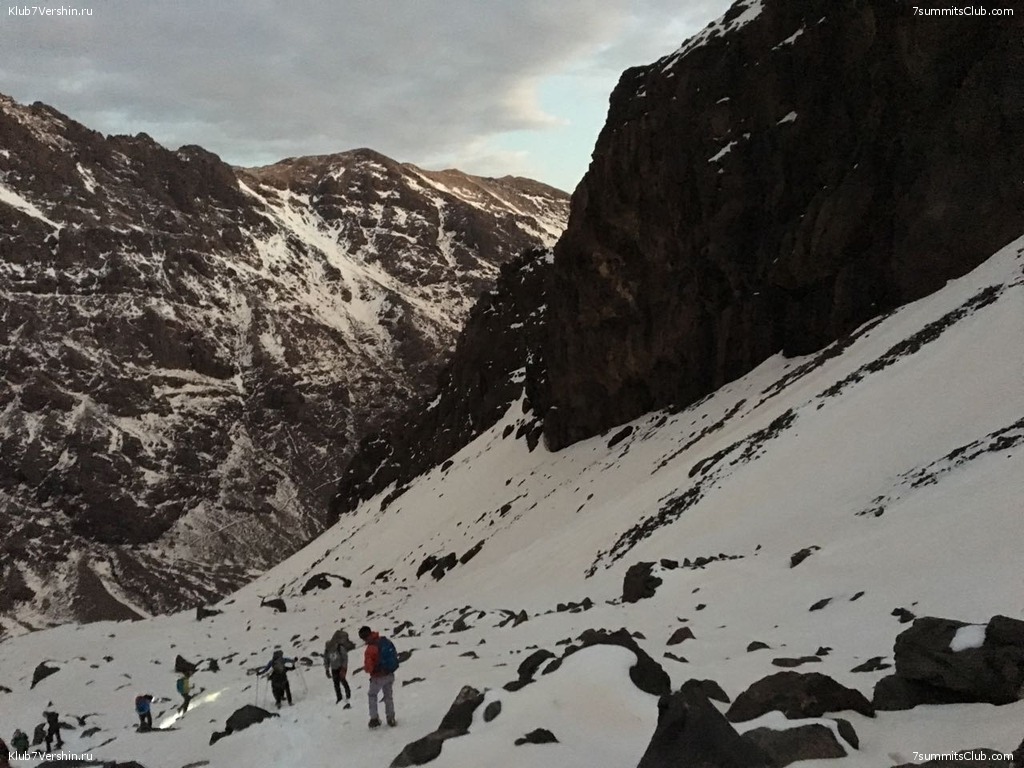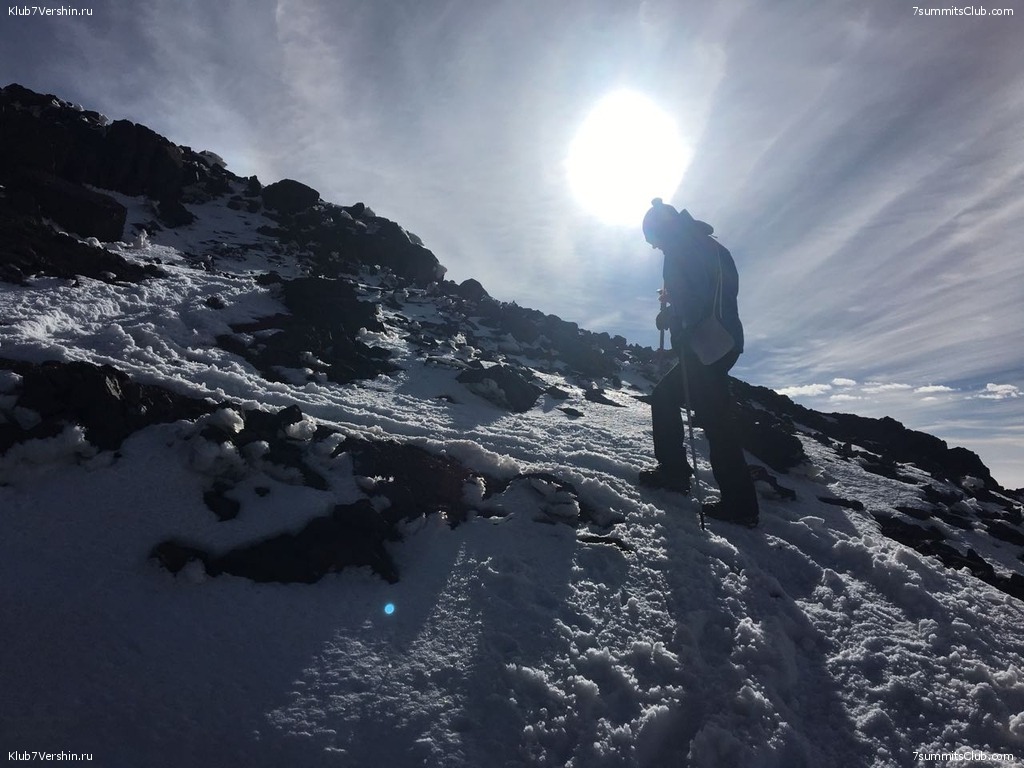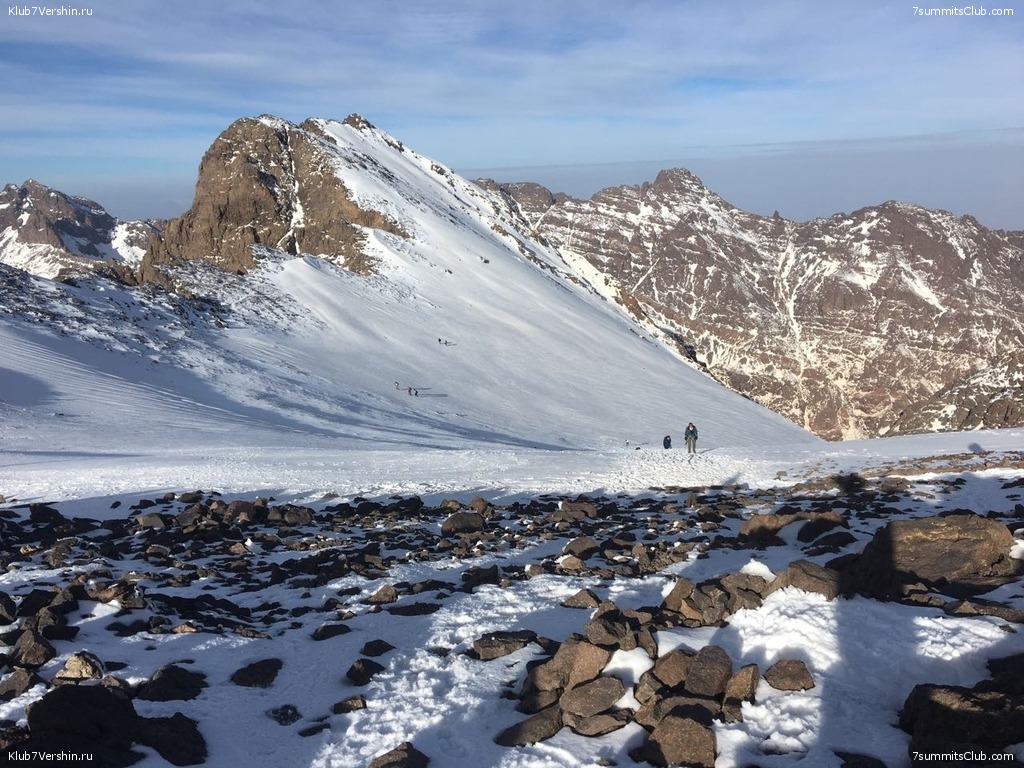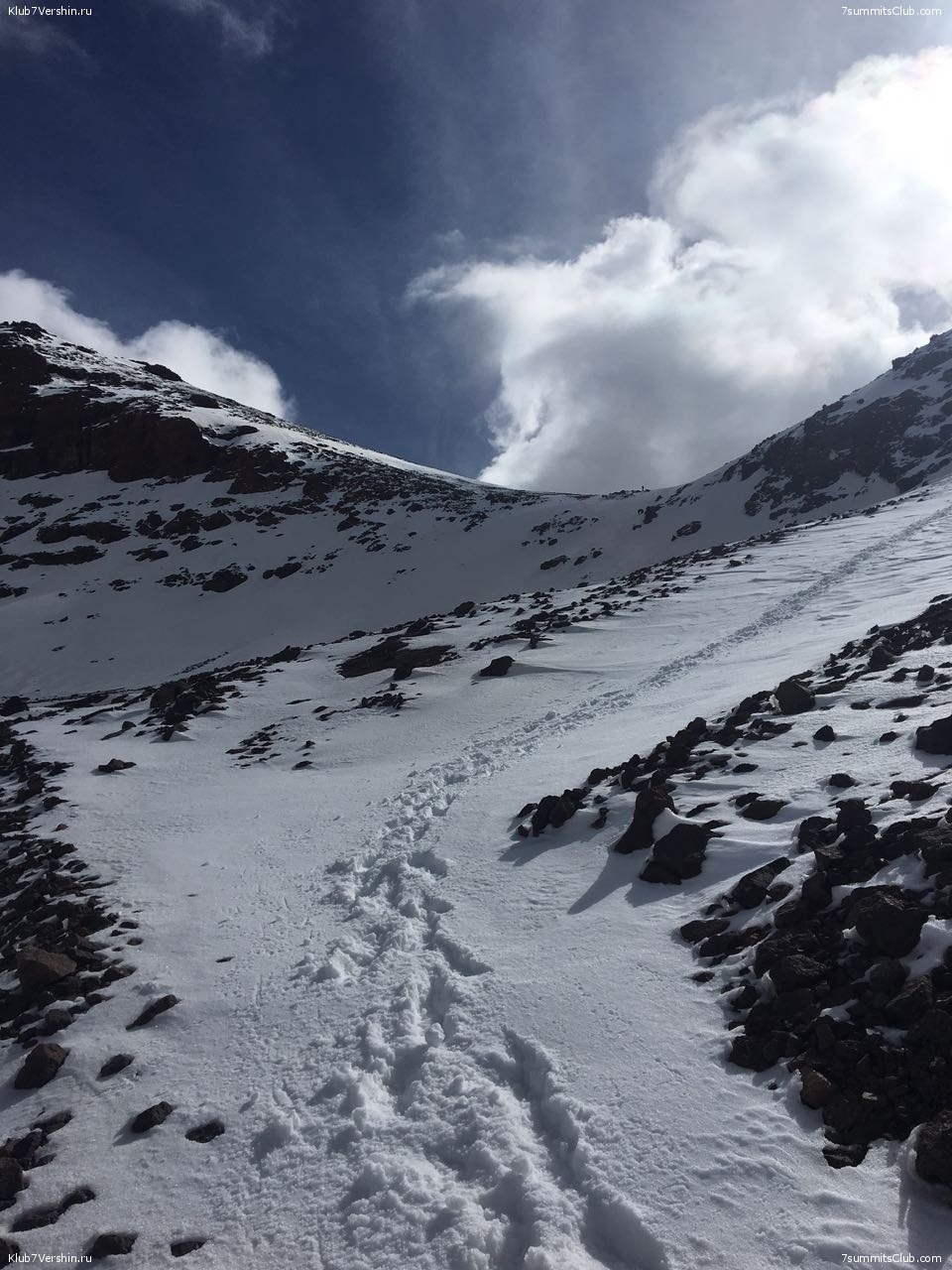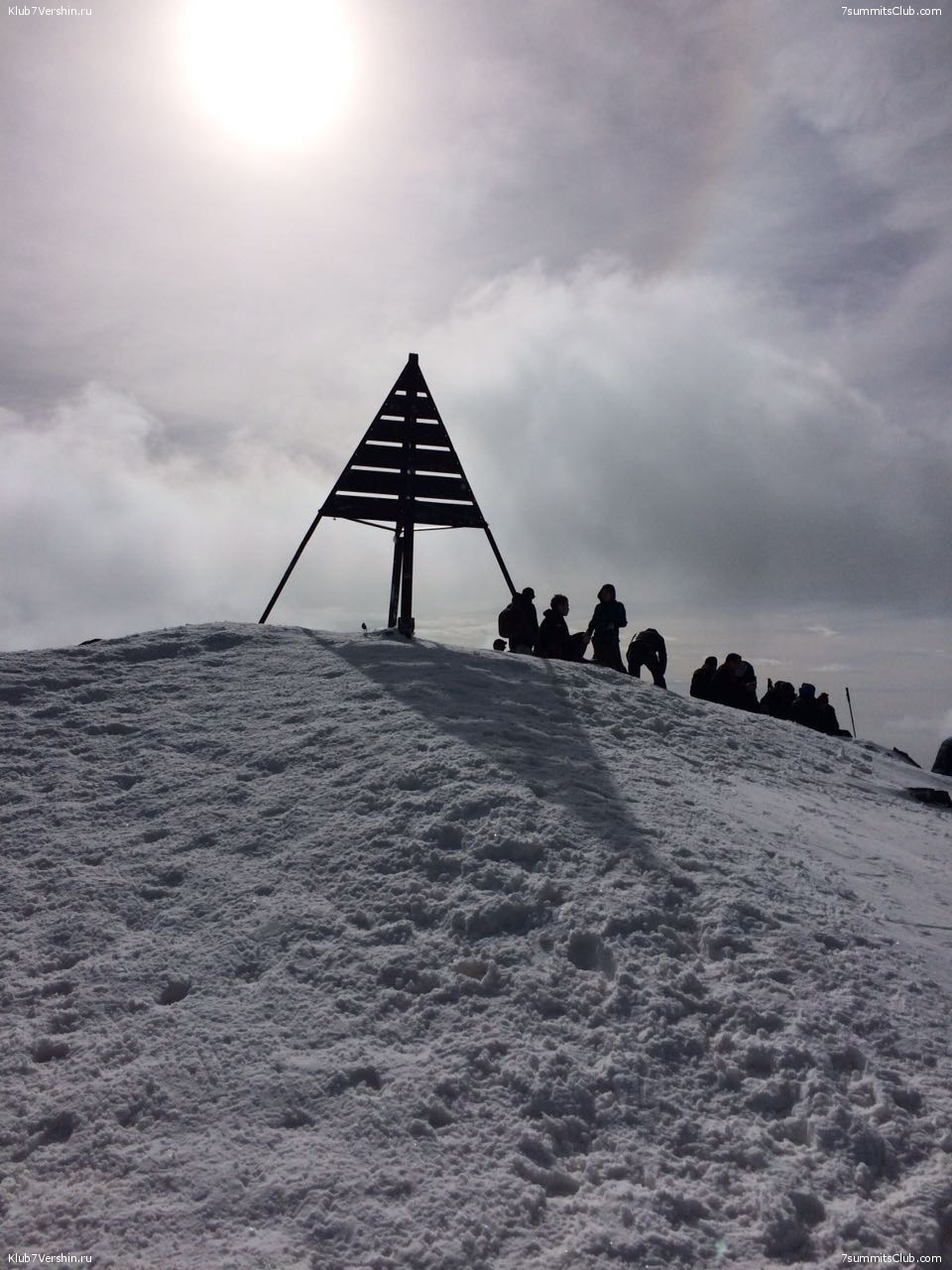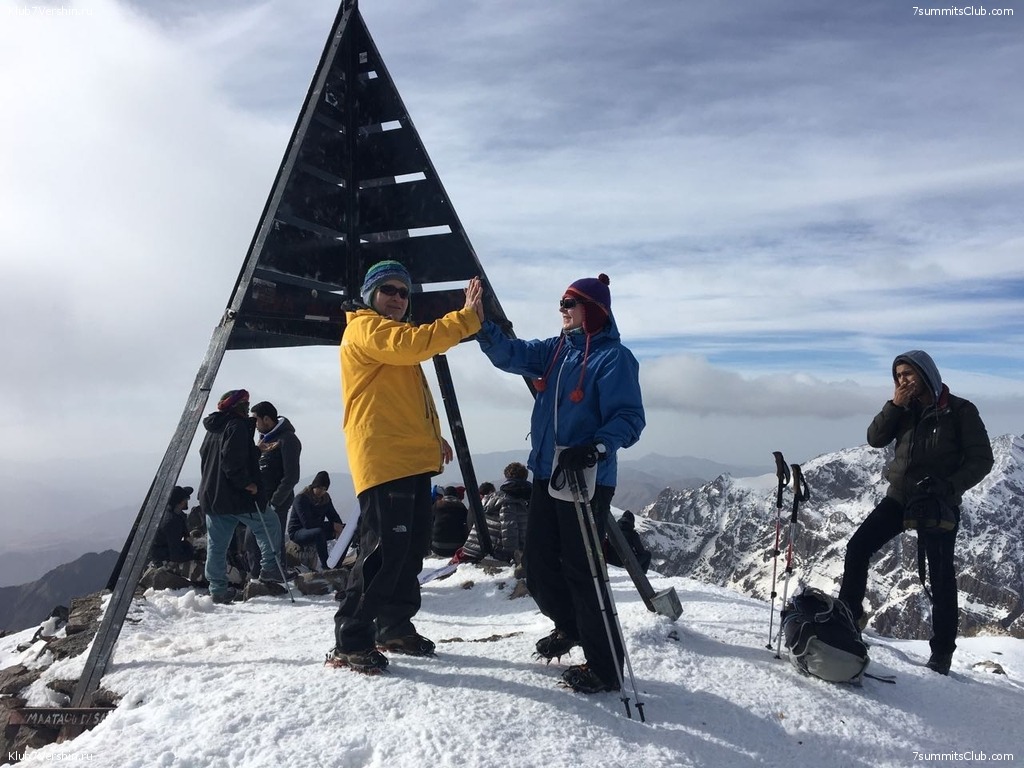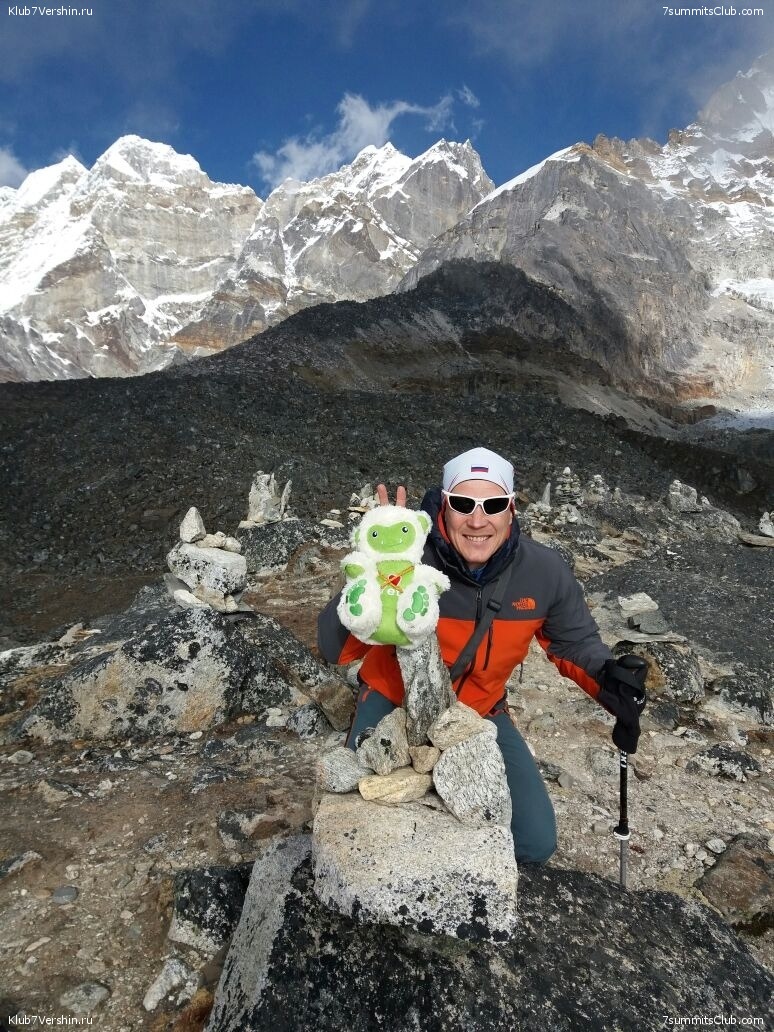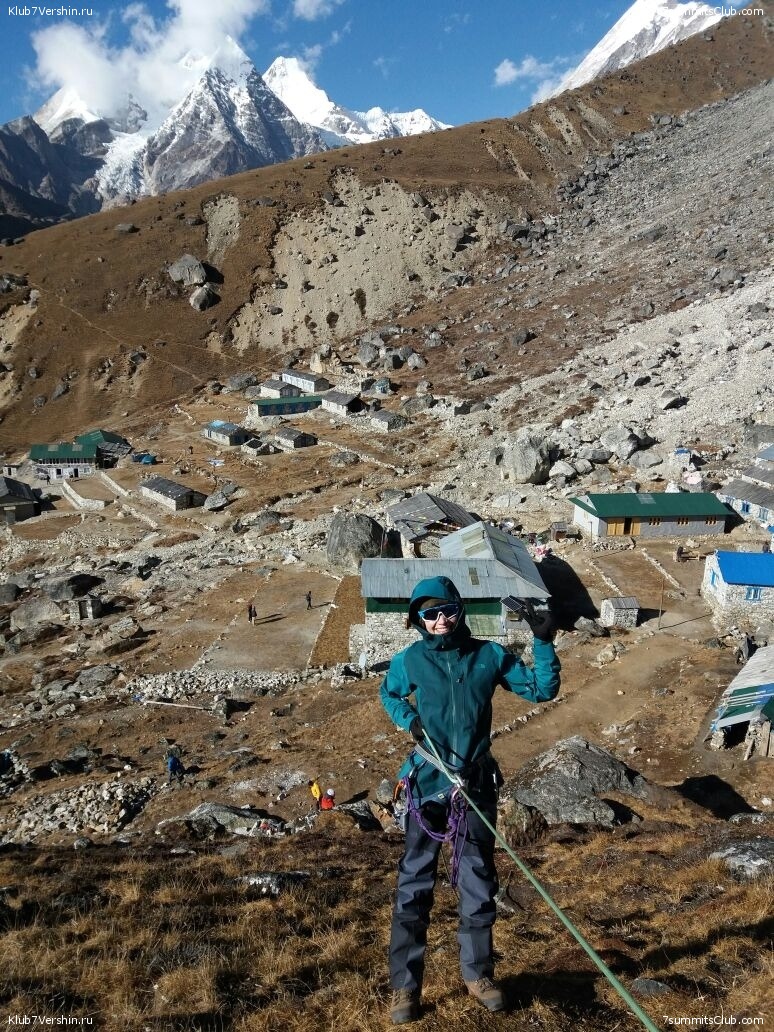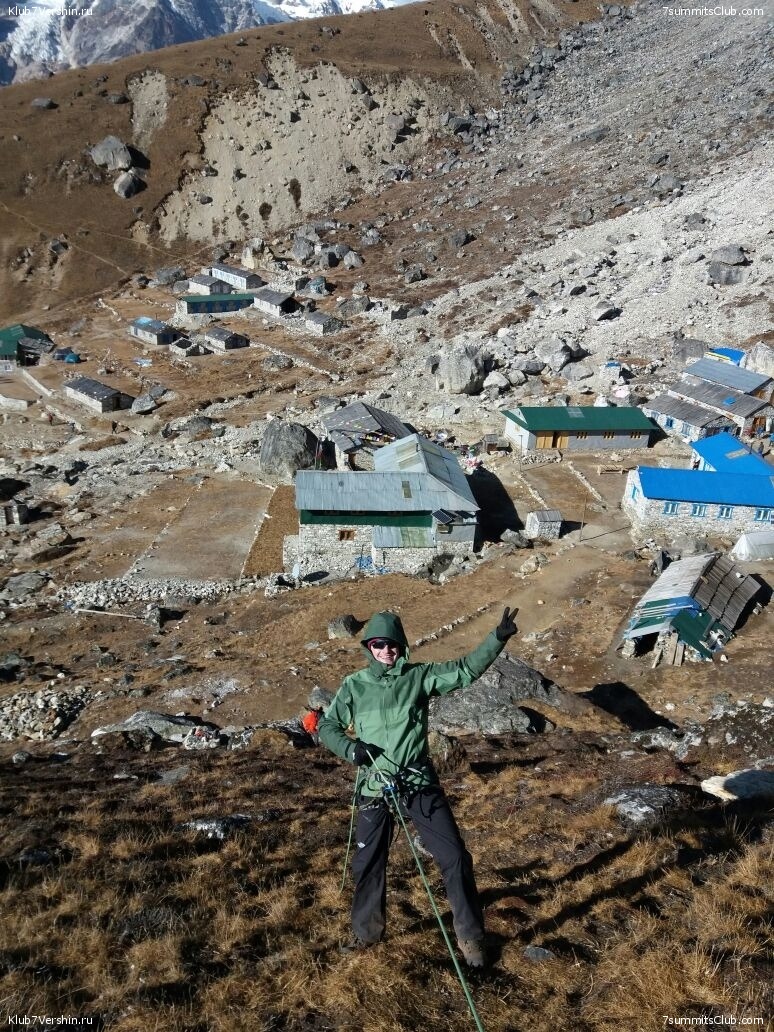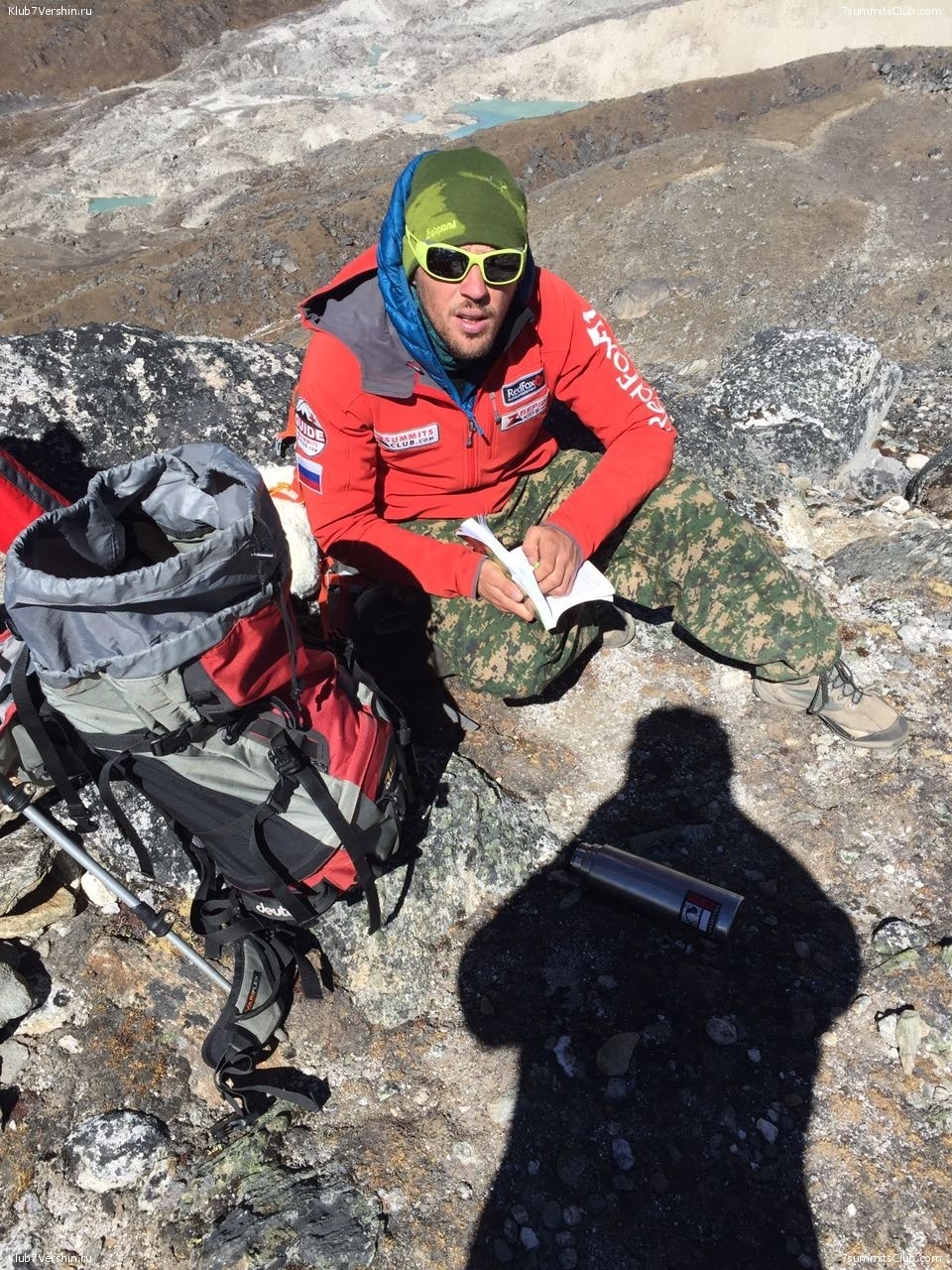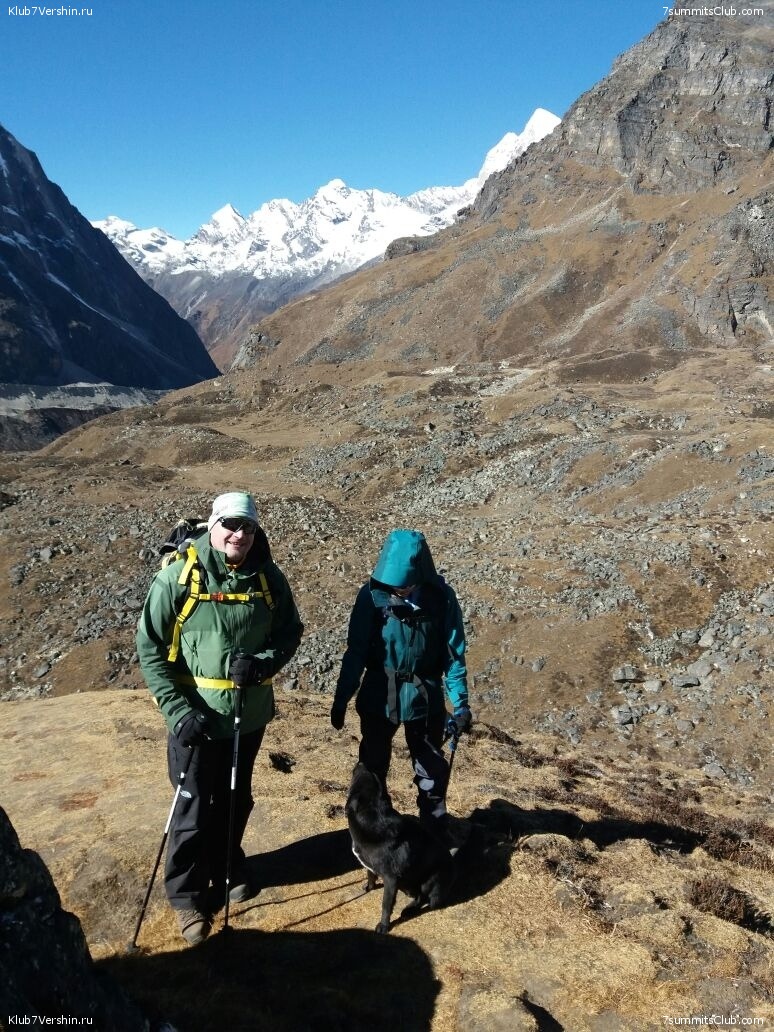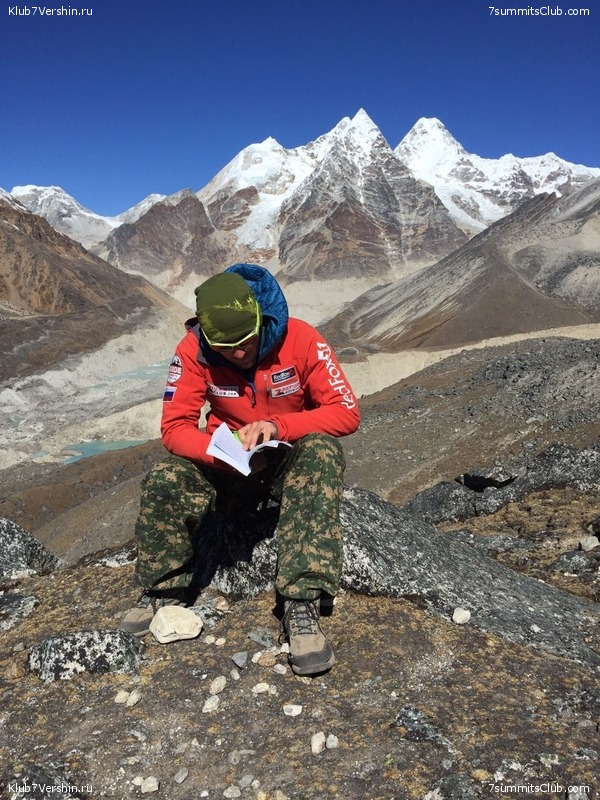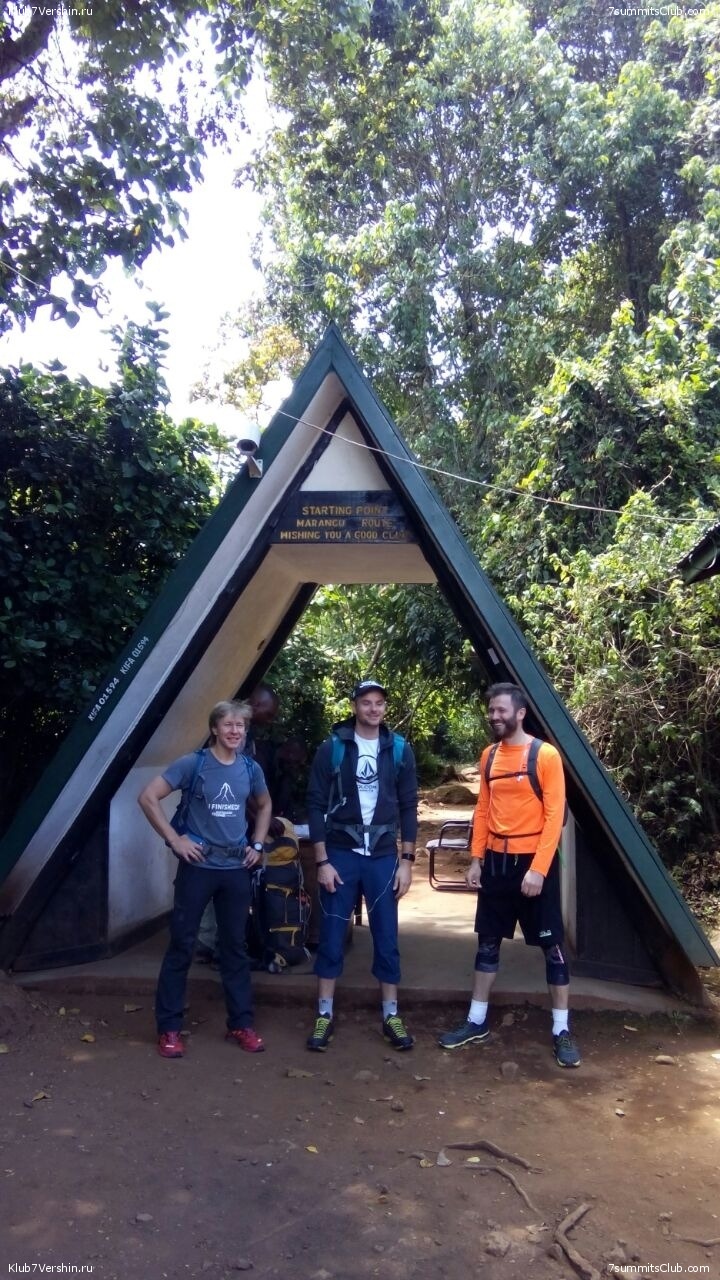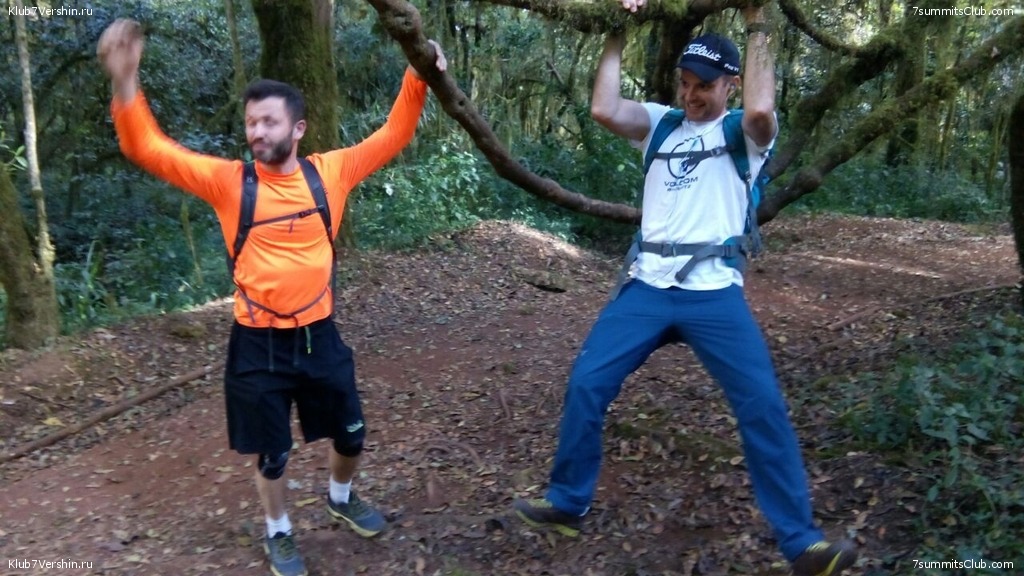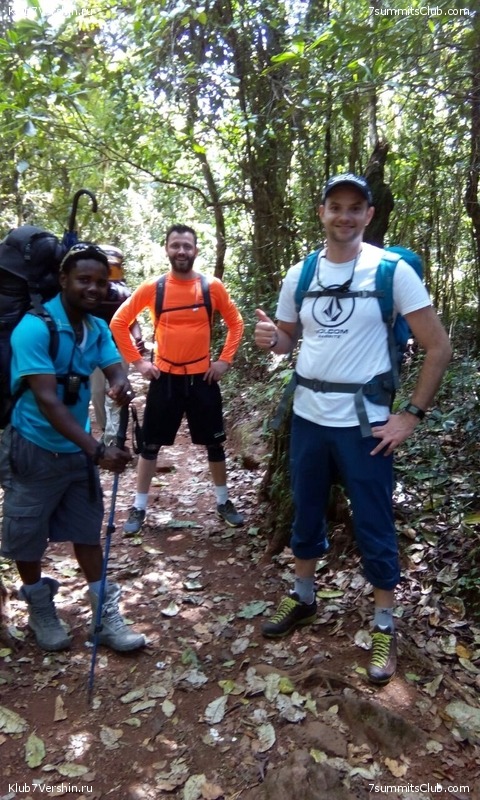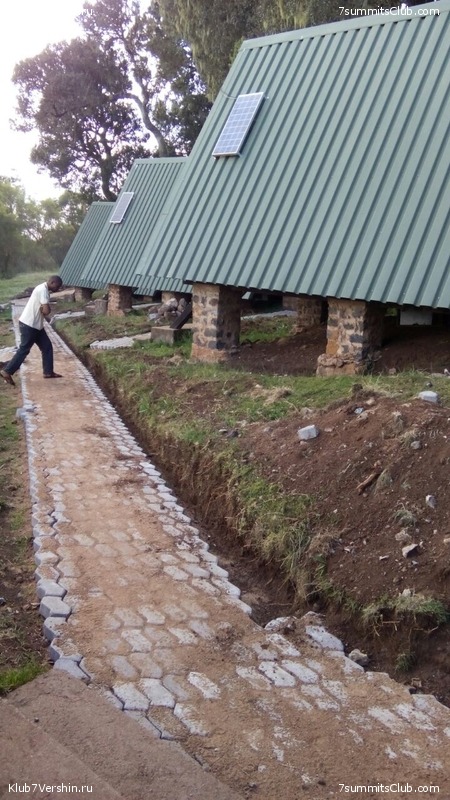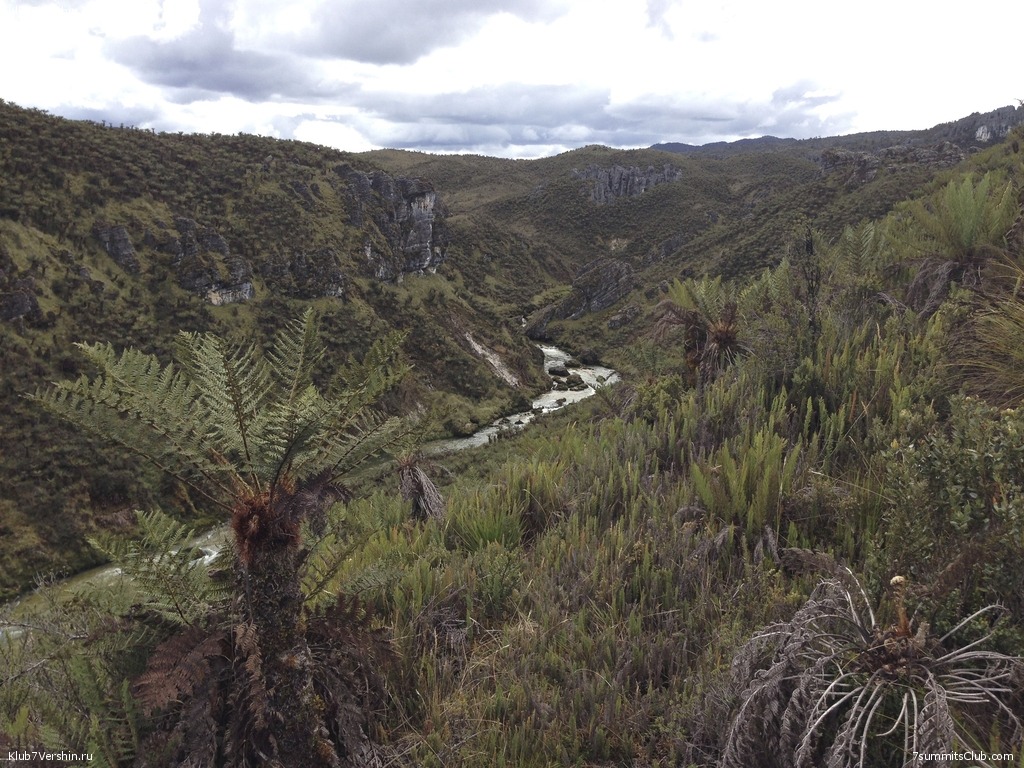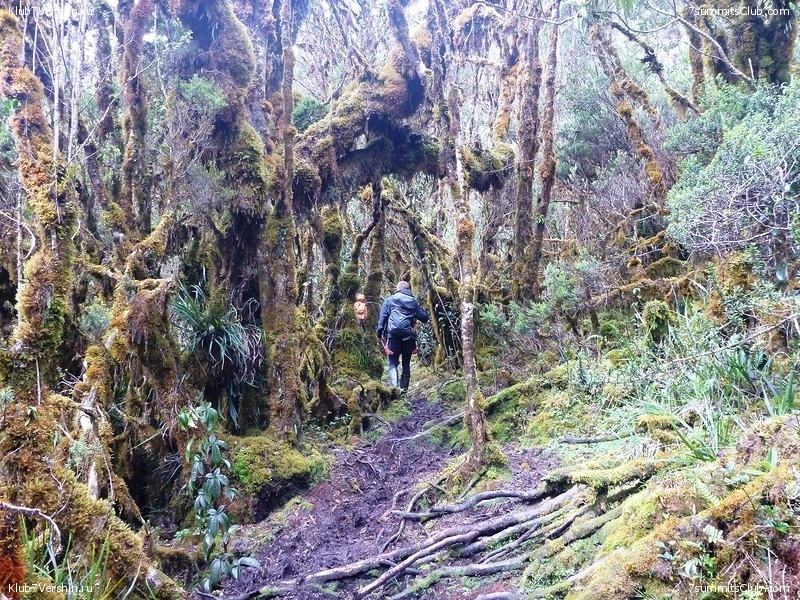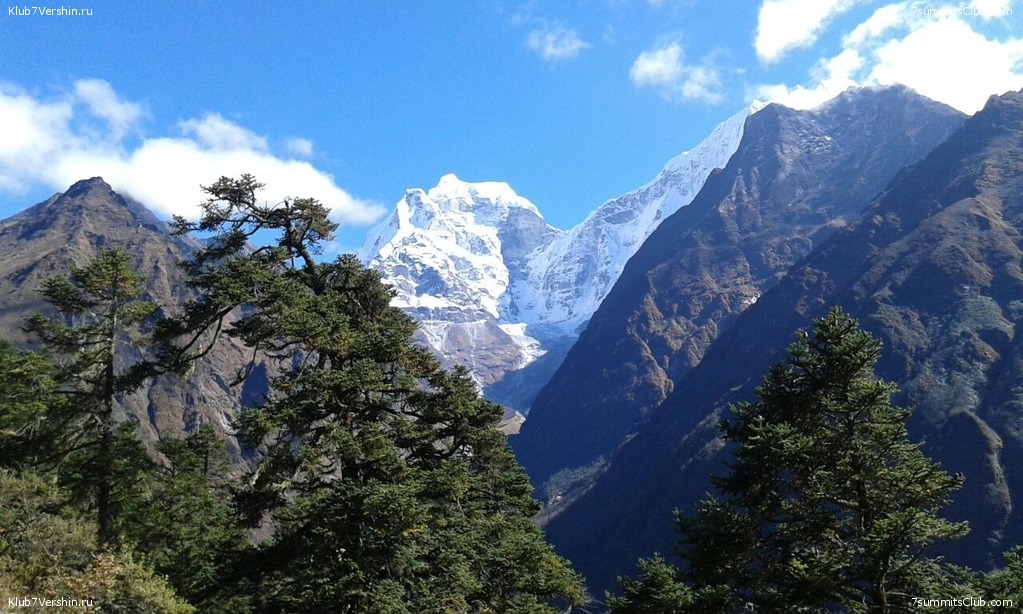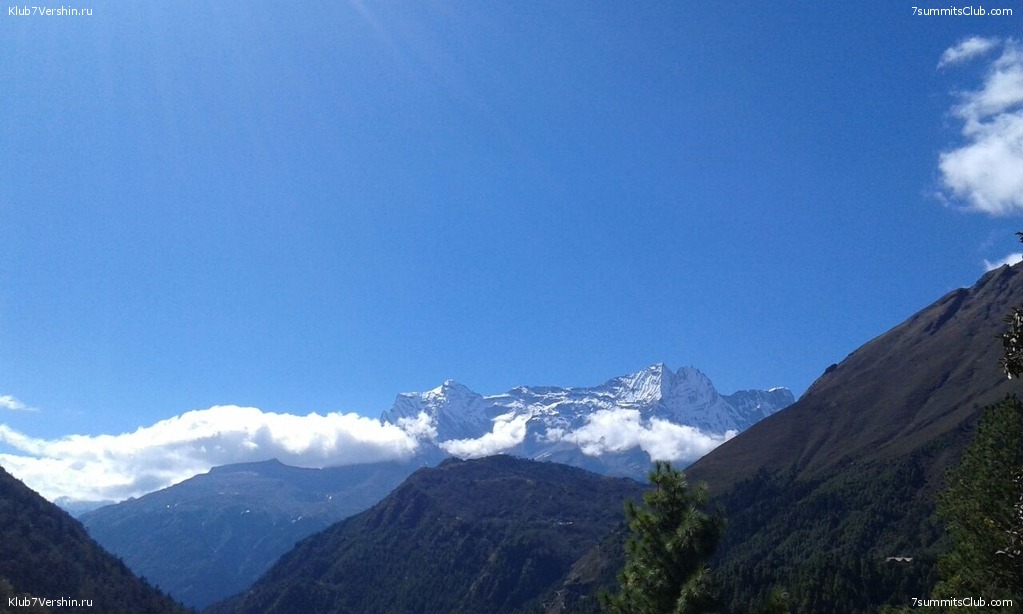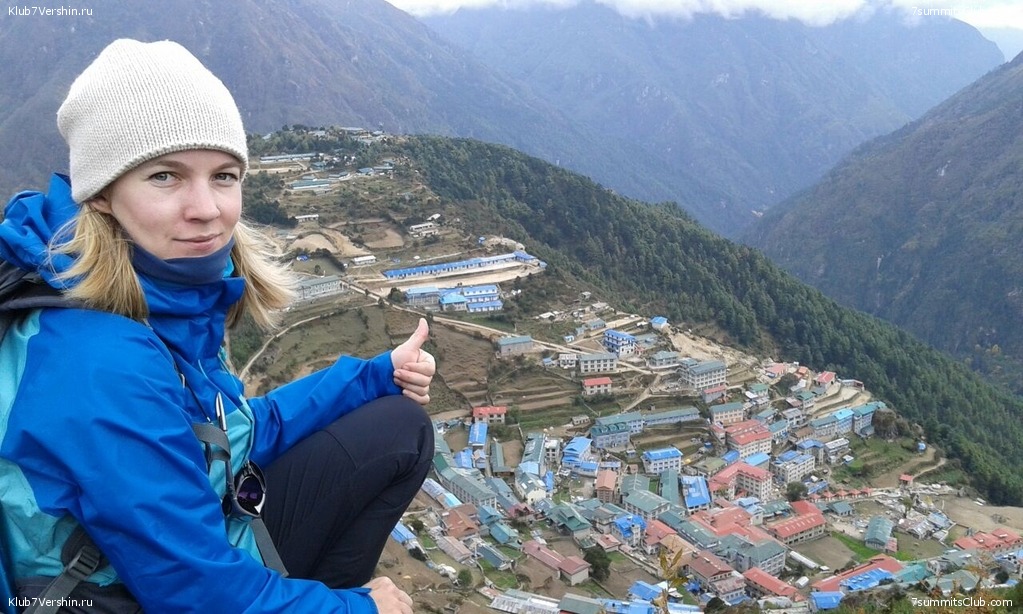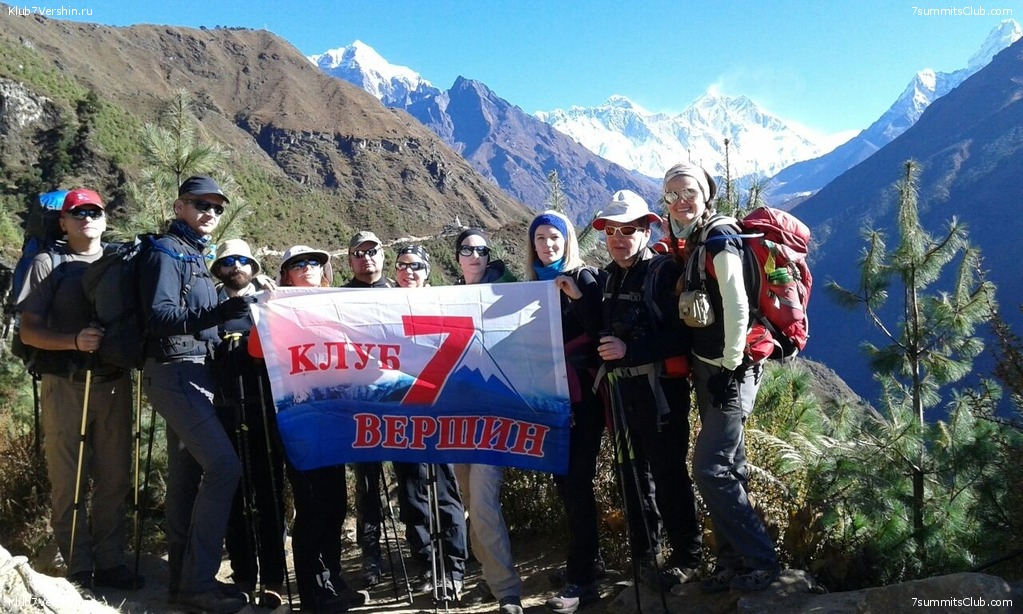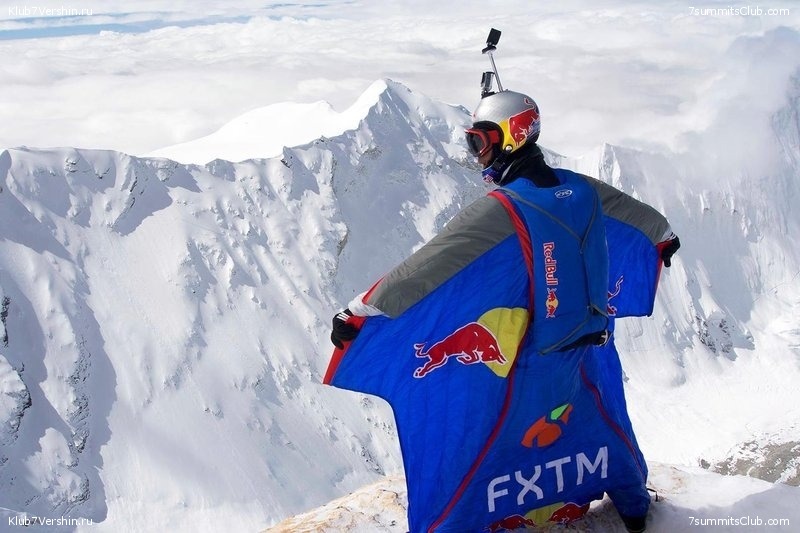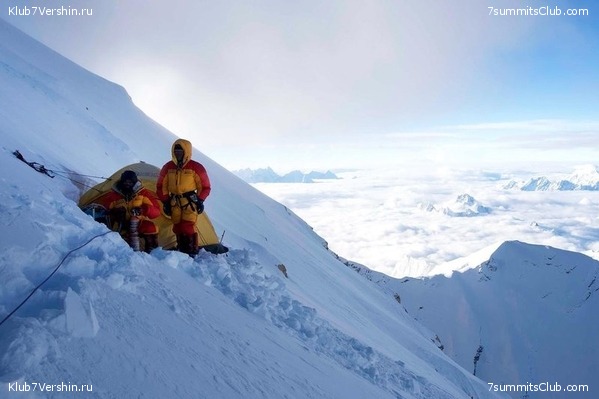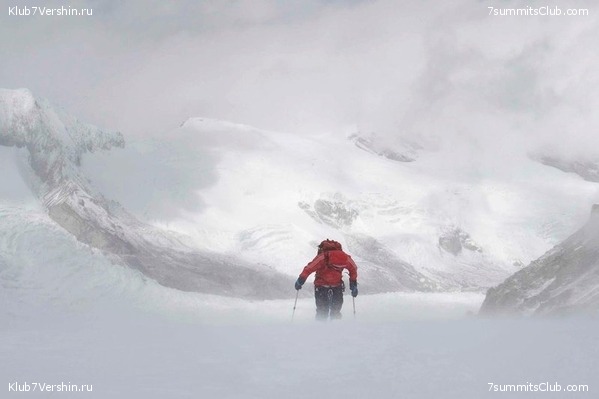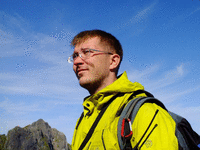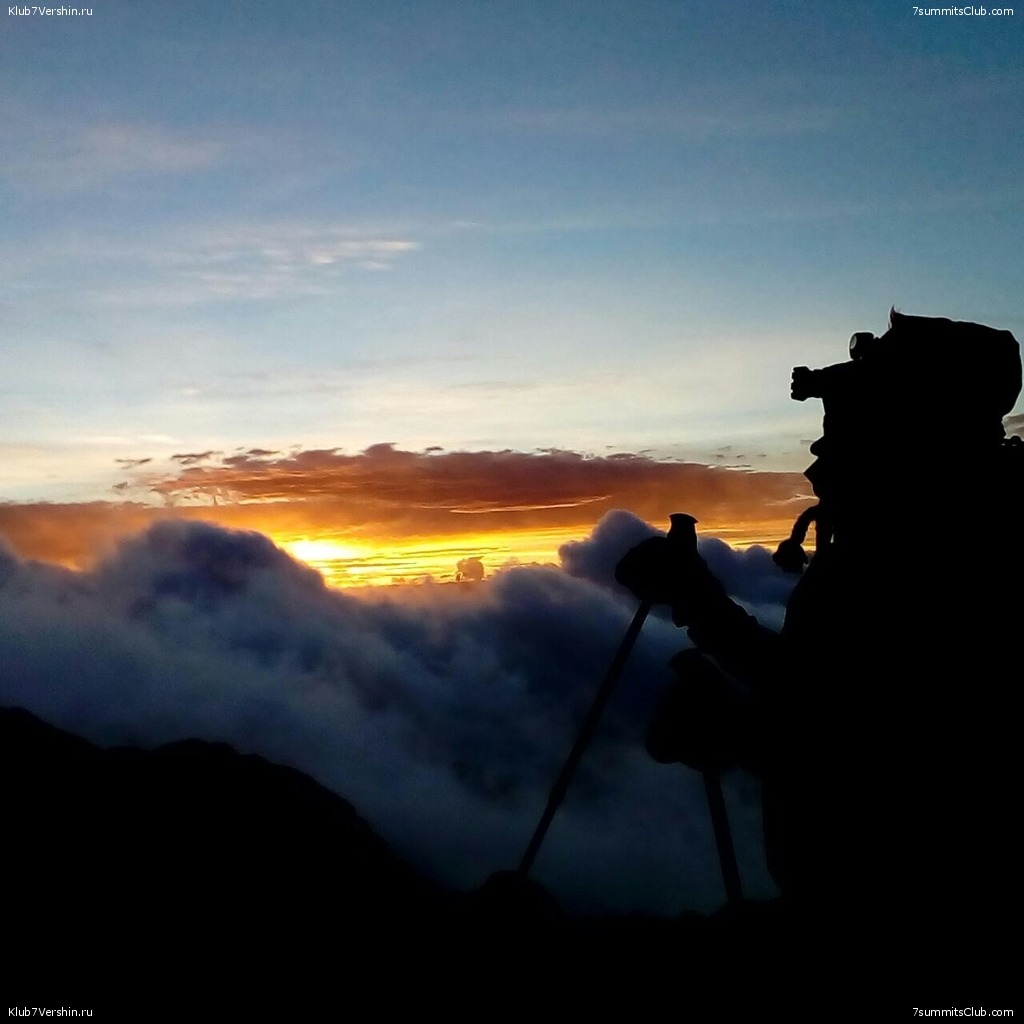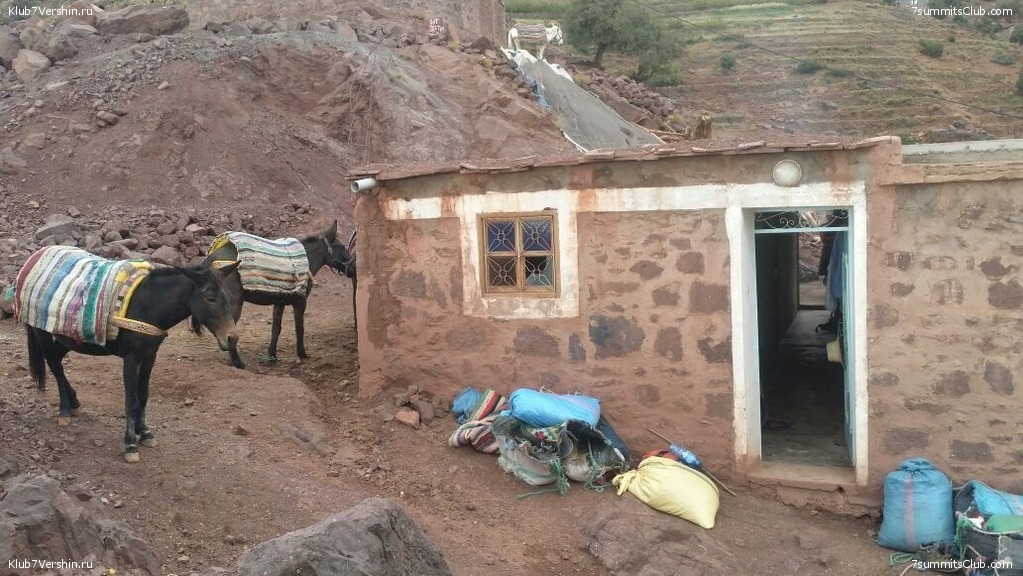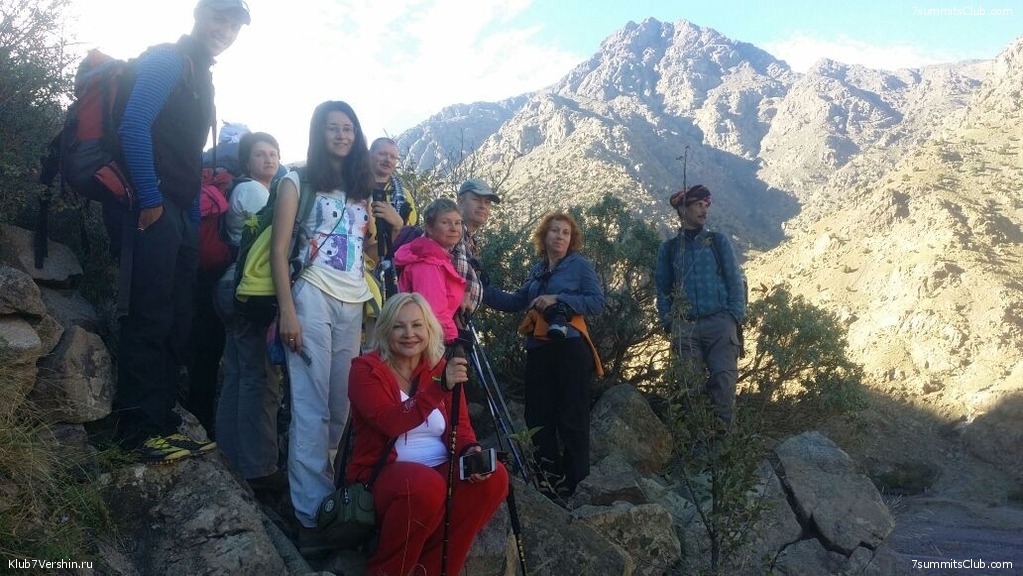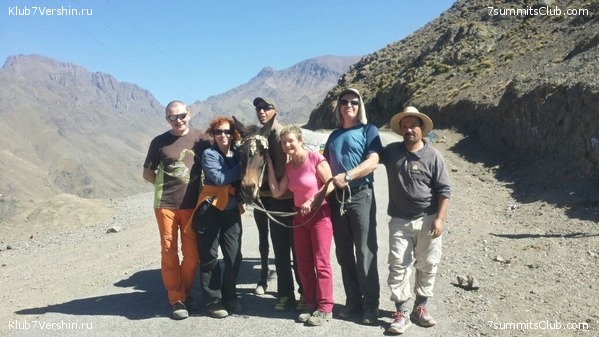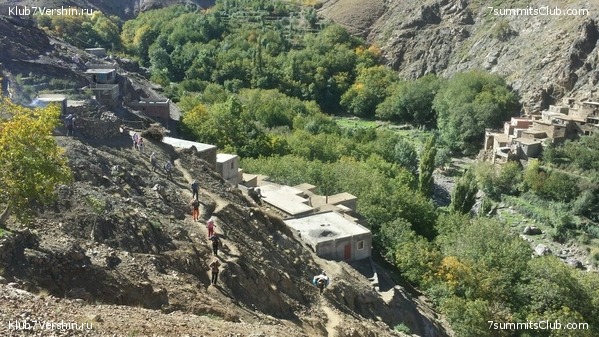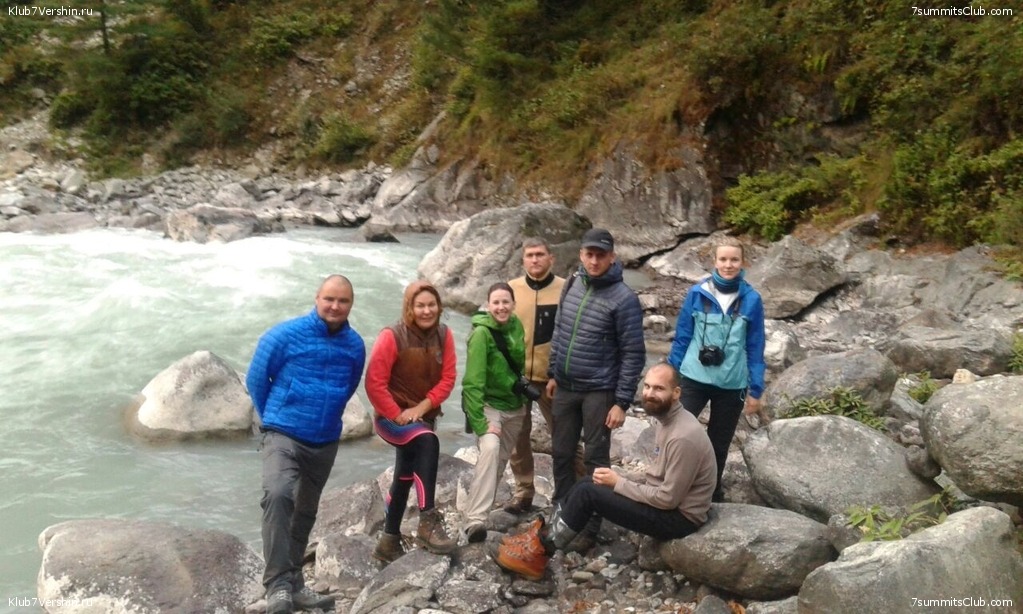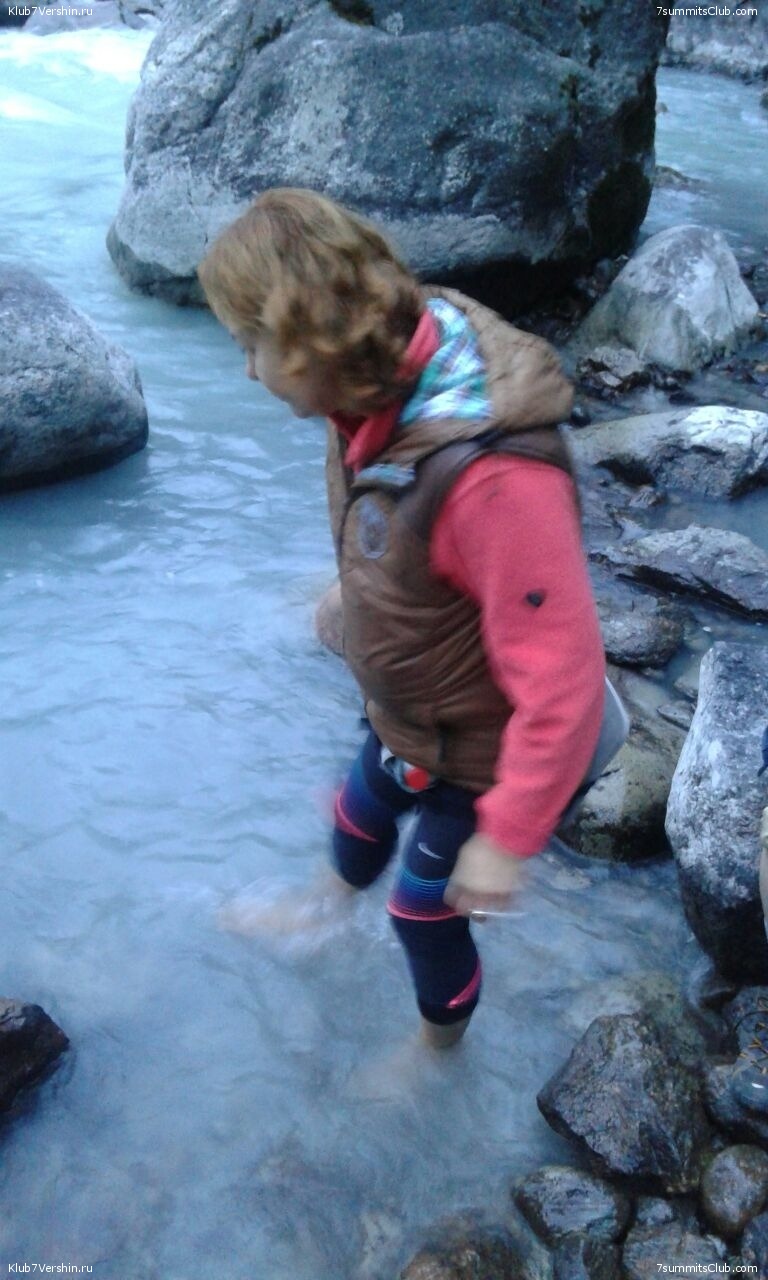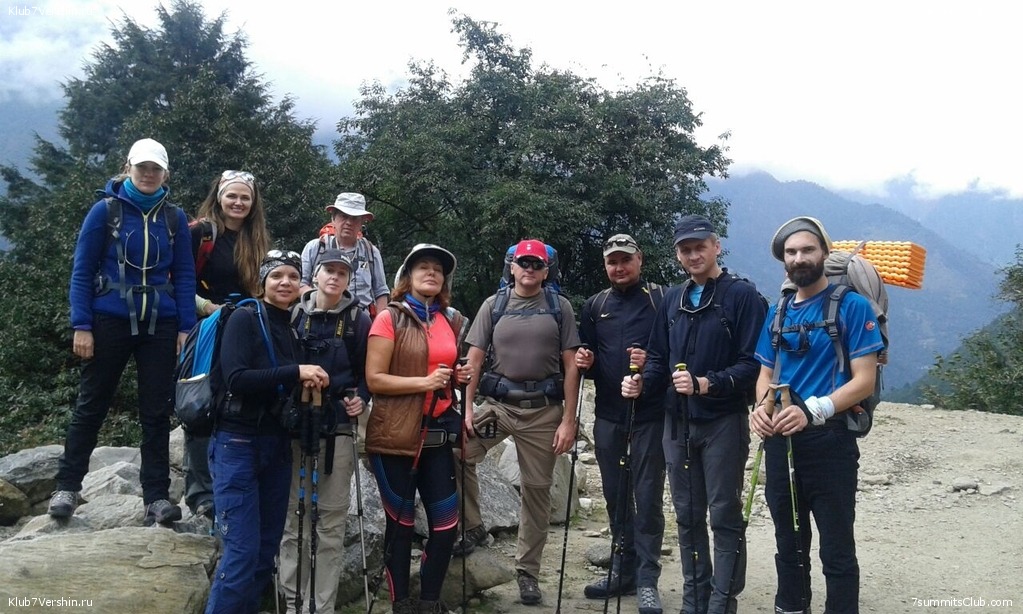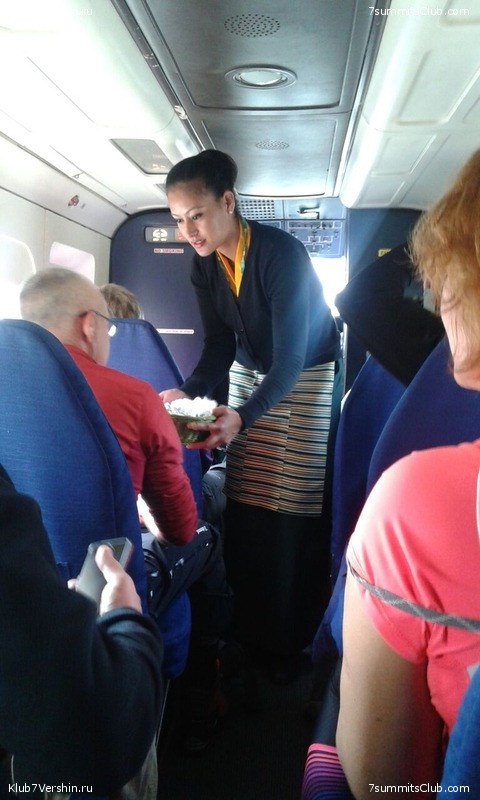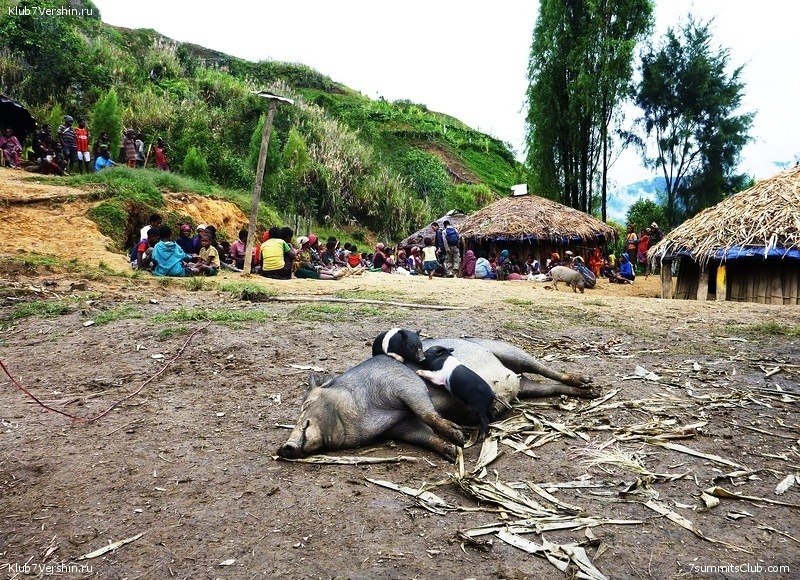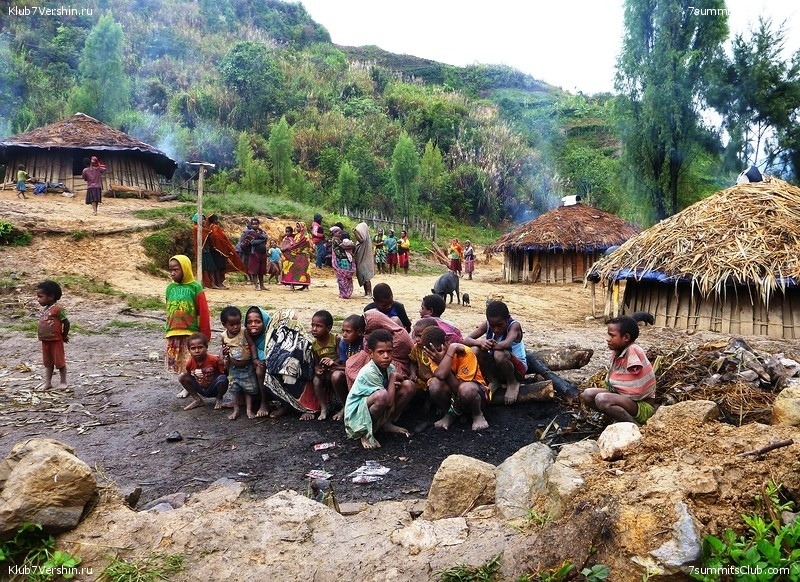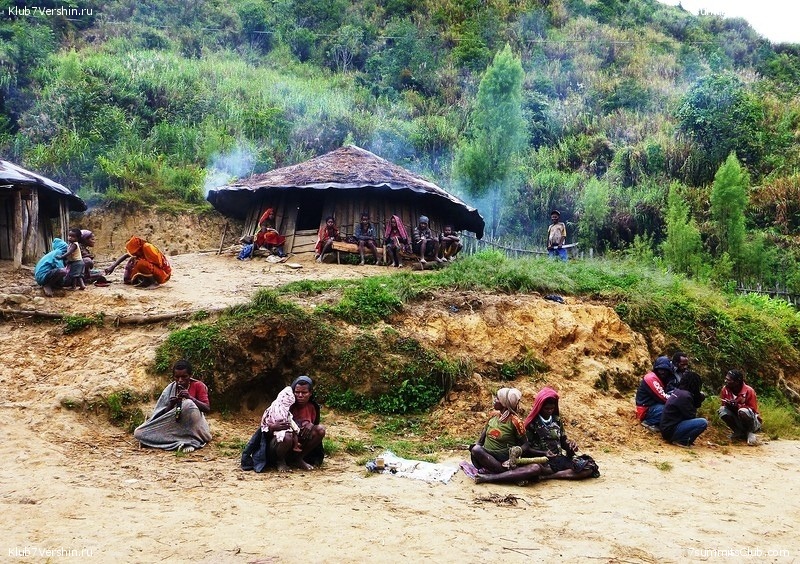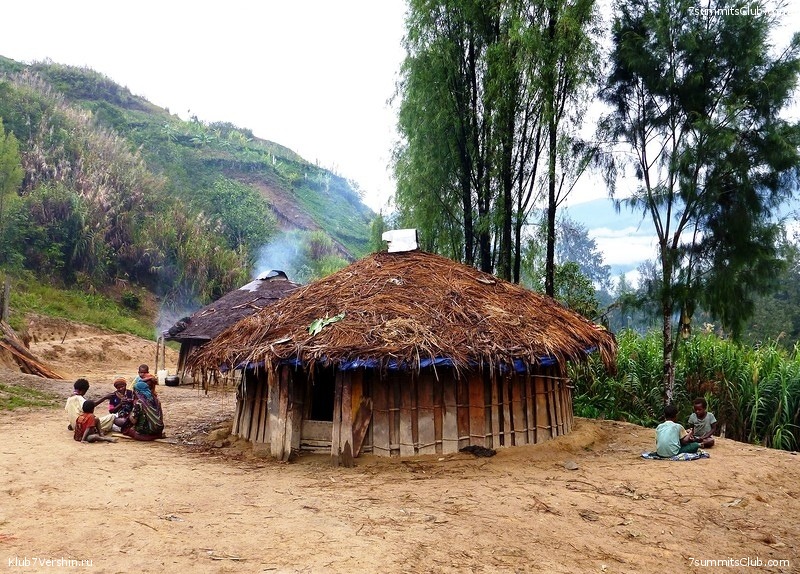All news - Page 236
Photos from the trek Around the Annapurna from Nadezhda Nikitina. Many Thanks!
Nadezhda Nikitina is back from Nepal, where she made one of the most famous Nepalese trekking route - "Around Annapurna". Journey under the leadership of our Nepalese guide was organized by 7 Summits Club. On return, a Nadezhda shared ...
Nadezhda Nikitina is back from Nepal, where she made one of the most famous Nepalese trekking route - "Around Annapurna". Journey under the leadership of our Nepalese guide was organized by 7 Summits Club. On return, a Nadezhda shared with us her impressions and photos. She said that the local guides worked perfectly, that the country is a wonderful and there you have to return again and again
Certificates awarding and gala dinner is the happy ending of our expedition
Carstensz Pyramid.
Our Indonesian partners are famous for their trademark technique - inscribed flags on top of the mountain and certificates. Therefore, the awarding procedure can be regarded as the end of the expedition. Though it may be, we ...
Our Indonesian partners are famous for their trademark technique - inscribed flags on top of the mountain and certificates. Therefore, the awarding procedure can be regarded as the end of the expedition. Though it may be, we still have to go home. But to leave heat in South-East Asia for the cold of Russia is not very desirable.
On Kilimanjaro everything is all right. Two of our group have already visited the summit, the next two coming...
Kilimanjaro.
Our group guided by Maxim Bulahovsky successfully climbed the summit of Mount Kilimanjaro - Uhuru peak via the Machame route. They made it 2 days ahead of schedule! Now they are down to the Millennium camp and then to the exit of the ...
- Our group guided by Maxim Bulahovsky successfully climbed the summit of Mount Kilimanjaro - Uhuru peak via the Machame route. They made it 2 days ahead of schedule! Now they are down to the Millennium camp and then to the exit of the National Park. Their plan: go on a Safari early in order to see more animals.
- The group of Artem Rostovtsev has also reached the top of Mount Kilimanjaro. So they celebrated the birthday of Pavel Altukhov. We also congratulate Paul with summit and birthday!
- Another group is now in the assault camp Barafu and preparing for the most important moment - the exit to the summit bid.
- Well, Alex Lagun (St. Petersburg) is off to Tanzania to meet the adventure, to make my first ever climb (photo)
Alex is planning for the first time to try yourself as a climber and to experience all of what have long told fellow climbers...
PHOTOS BY ARTEM ROSTOVTSEV
Expedition to Ñarstensz in the photographs of Alexander Abramov
Carstensz Pyramid.
Our team on the Pyramid Carstensz returned to the paradise island of Bali, to relax and to heal the wounds. Mission accomplished - passed through the jungle, met with the Papuans, climbed to the top. Now we have memories and ...
Our team on the Pyramid Carstensz returned to the paradise island of Bali, to relax and to heal the wounds. Mission accomplished - passed through the jungle, met with the Papuans, climbed to the top. Now we have memories and stories for a lifetime. But so far only photos:
Svetlana Nuzhum: a lot of news, all the most important thing for these three days!
Everest BC (Nepal).
Svetlana Nuzhum, guide of 7 summits Club: Hello Everyone! The last 3 days we had a communication problem, and we have so much news! The 30th of October we reached Gorak Shep, had a bite and immediately went to the base camp of Everest. The ...
Svetlana Nuzhum, guide of 7 summits Club:
Hello Everyone! The last 3 days we had a communication problem, and we have so much news! The 30th of October we reached Gorak Shep, had a bite and immediately went to the base camp of Everest. The march took about 3 hours there and back. And yesterday morning, the 31st of October, we stood on the summit of Kala Pattar (5550ì). Weather, as a fact, throughout all the track, stood great – no cloud and no wind. The views are super! In general, we are all happy. Today we dropped 1000 meters and get warm in Deboche. Tomorrow we will descend to Namche.
Summit!!! The team of "Tube" on Mera peak, well done!
Vladimir Kotlyar, a guide of the 7 Summits Club: "Tube" did as he could! Victoria and Alexander Perig reached 6100 m, Ivan - 5800, Alexander Logachev – the top! He was on the summit in the company of me, Vladimir ...
Vladimir Kotlyar, a guide of the 7 Summits Club:
"Tube" did as he could! Victoria and Alexander Perig reached 6100 m, Ivan - 5800, Alexander Logachev – the top! He was on the summit in the company of me, Vladimir Kotlyar. All - well done! About Perig couple I want to say that this is their first encounter with the mountains! Before this adventure they did not go any tracks or weekend trips, or climbed the rocks. Therefore, the height of 6,150 meters - more than decent result !!!
Summit! Team 7 Summits Club successfully climbed Mount Pyramid of Carstensz. Congratulations to Irene with Seven Summits !!!
Carstensz Pyramid.
Hello! This is Alexander Abramov, from the base camp of Carstensz Pyramid. Today, our team (all members) climbed to the top. We climbed in record time, 5 hours from base camp to the summit. We were very lucky with the weather. One of our ...
Hello! This is Alexander Abramov, from the base camp of Carstensz Pyramid. Today, our team (all members) climbed to the top. We climbed in record time, 5 hours from base camp to the summit. We were very lucky with the weather.
One of our members, all of you know, Irena Kharazova thus completing the Seven Summits project. And we lost another customer. LAUGH!
In general, everything is fine, we are now sitting in the base camp. We went down, the weather is beautiful, everyone is happy. We send greetings to family and friends! ...
Details we write tomorrow when we shall be on Bali. Now we are waiting for the helicopter. Bye!
To the North Pole in a special program with Alexander Abramov
The President of the 7 summits Club Alex Abramov has long sought to complete the programme Grand slam (seven summits plus two poles). ... So it turns out that the short season of traveling to the Pole coincides with a slightly longer, but ...
The President of the 7 summits Club Alex Abramov has long sought to complete the programme Grand slam (seven summits plus two poles).
... So it turns out that the short season of traveling to the Pole coincides with a slightly longer, but also strictly limited, to the duration, season of Everest expeditions. And Alex is the head Everest expeditions each year since 2003. Everest Expedition is the most important event of the year for the 7 Summits Club, so it stands in the foreground.
Therefore, in 2017, the leader of the expedition to Everest will join his team later than usual. He will be a leader of our program at the North Pole that ends on April 16th.
Now there's a real possibility for any person to reach the North Pole in various ways. We know the best, the optimal way.
It is our Last degree ski program.
The last degree is a really difficult test, a test of endurance, character, struggle with the cold and struggle with the drift, this is a real danger of falling into ocean water in ice-holes and cracks a chance to meet the polar bear.... But the victory will be ours! It has always been, it always should be!
The last degree route is changing from year to year. In theory it is about 110 km. However, near the Poles, there is always the strong drift that is difficult or even impossible to predict in advance. Therefore, in the process of movement on skis you can just take it back and have to go a greater distance.
Camp Barneo (Russian: Ëàãåðü Áaðíåî) is a private Russian temporary ice base established annually since 2002 on an ice floe relatively close to the North Pole used largely for tourist excursion purposes.
The first Ice Camp Barneo was established in 2002. Since that time, the camp has been rebuilt from scratch every year because of the constantly drifting Arctic ice. For example, in 2007 Ice Camp Barneo was located at about 89°31.5′N 30°27′W. However, northerly winds caused the Ice Camp to drift towards the southeast at a speed of 0.8 kilometres per hour (0.5 mph).
The ice camp works under the patronage of the Russian Geographical Society and normally lasts for the month of April.
Ice Camp Barneo should not be confused with the sequential Soviet/Russian "North Pole" drifting ice stations established by the Russian Academy of Sciences Arctic and Antarctic Research Institute (AARI).
From 2002 to 2016, the starting and final point of all expeditions to Barneo has been Longyearbyen, the capital of the Svalbard archipelago of Norway. The city has necessary facilities including an airport, hotels of different levels, restaurants, a post office, a bank, and a supermarket.
In 2016, following military exercises by Chechen paratroopers on Barneo, Norway enacted a flight embargo, which it later lifted. As a result, the 2017 event is expected to take place with a base in Russia.
Summit! Lyudmila and Mikhail Polozovs climbed Mount Toubkal for good weather. PHOTO
The couple have fulfilled their plan, and for just two days climbed to the highest point of Morocco and North Africa, Jebel Toubkal. The weather was sunny, which made it possible to enjoy the panoramic views during the climb and do a lot of ...
The couple have fulfilled their plan, and for just two days climbed to the highest point of Morocco and North Africa, Jebel Toubkal. The weather was sunny, which made it possible to enjoy the panoramic views during the climb and do a lot of photos.
Now Lyudmila and Mikhail meets a beautiful Moroccan city, the ancient Marrakesh. Tonight, they are scheduled to go back to the hotel on the beach, where you can calmly reflect on everything that happened...
The group of Vladimir Kotlyar Group finished their trek to Mera Peak....
October 29th a group led by a guide of the 7 Summits Club Vladimir Kotlyar reached the village of Khare. Here, at an altitude of 4950 meters, the team will hold one day, they will relax and adapt to the altitude. The trek was on ...
October 29th a group led by a guide of the 7 Summits Club Vladimir Kotlyar reached the village of Khare. Here, at an altitude of 4950 meters, the team will hold one day, they will relax and adapt to the altitude. The trek was on a very beautiful places and they could made excellent photos. The team, which was named "Tube", is ready for the ascent of Mount Mera Peak.
Four groups of 7 Summits Club at once went up into the legendary Mount Kilimanjaro!
Kilimanjaro.
Almost at the same time four our groups went to Africa to climb the highest peak of the continent. They have different routes, but the main goal is the same - Kilimanjaro! The two groups will work with Russian guides. Artem ...
Almost at the same time four our groups went to Africa to climb the highest peak of the continent. They have different routes, but the main goal is the same - Kilimanjaro! The two groups will work with Russian guides.
Artem Rostovtsev leads the group, which aims to celebrate the birth of one of the participants at the summit of Kilimanjaro. This is their main goal! They go by the classic route Marangu.
A group guided by Maxim Balakhovskiy will climb by another popular and also classic route - Machame. Immediately after the descent from the mountain they have to fly to the Serengeti National Park, where they will wait for safaris and hot air ballooning over the savannah.
Two other individual groups will make the ascent with local guides. They also go by two different routes - Machame and Marangu.
PHOTOS by Artem Rostovtsev
Alexander Abramov from Papua: in the morning - good weather, evening birthday celebration- again in the rain
Carstensz Pyramid.
Hello! This is Alexander Abramov from Papua Province, from the 7 Summits Club expedition to the Pyramid of Carstensz. This morning the weather was beautiful, which is very rare in these parts of the World. We were ready to start, but it ...
Hello! This is Alexander Abramov from Papua Province, from the 7 Summits Club expedition to the Pyramid of Carstensz. This morning the weather was beautiful, which is very rare in these parts of the World. We were ready to start, but it turned out that the porters did not want to go. And they had a very long meeting, it was all due to our yesterday's meeting with the armed guerrillas.
The porters were afraid to go out, but, nevertheless, at ten o'clock still started to collect things. We have lost time, so we had to go the whole day again. We got to the fourth camp very late, in darkness. This is the last camp before the base camp, tomorrow we will have a sufficiently long march climbing about one kilometer, partly over rocks. And we must come to the base camp.
Today we have a remarkable event. Today Evgeniy Kravt is 41. He put the bottle of whiskey, very good quality. And on the occasion, our Indonesian cooks and guides made cake, chocolate cake.
Now the rain continues to pour. Everything is as usual, and by the morning rain subsides. We hope that this tradition will continue, and we will be able to start early in the morning.
So far, all are good. Everybody is happy....
Report Alexander Abramov from Camp 3. All according to plan: the rains, then guerrillas ...
Carstensz Pyramid.
Hello! Alexander Abramov from Papua. We are fine, all alive and healthy. Constantly pouring rain. We now come to the third camp, there is still a camp 4 and the base camp. Then we will climb up the mountain. One moment overshadowed today ...
Hello! Alexander Abramov from Papua. We are fine, all alive and healthy. Constantly pouring rain. We now come to the third camp, there is still a camp 4 and the base camp. Then we will climb up the mountain.
One moment overshadowed today our travel. We were stopped by some local people with machine guns and pistols. They demanded money from us. We gave all that we could - it is about 1500 dollars. And we were released, thank God. Things could have been much worse, probably. But the expedition continues ... everything is good, in general, nothing bad has not happened yet. Okay ... well, all are alive and well and have good appetite at all.
All good-bye!
Group of Svetlana Nuzhum came in Tengboche. Everest allows a great view!
Everest BC (Nepal).
Svetlana Nuzhum, 7 Summits Club guide, program track to the base camp of Mount Everest: Namaste! We have come to Tengboche (3870 m). Yesterday, as planned, we went to the "Everest View" hotel and Khumjung. The weather is wonderful, ...
Svetlana Nuzhum, 7 Summits Club guide, program track to the base camp of Mount Everest:
Namaste! We have come to Tengboche (3870 m). Yesterday, as planned, we went to the "Everest View" hotel and Khumjung. The weather is wonderful, cloudless sky. We enjoy views of Everest and it lures. The team feels great. Tomorrow we go to Pheriche…
Lenin Peak (Avicenna) – a great mountain altitude stadium, an important step to Everest! In 2017, together with Alexander Abramov ...
Lenin Peak.
The desire to climb Everest could be understand for almost everybody, that is, for all normal people. There are a proven way to prepare: to ask the advice of the most important experts. And the best is not just to ask for ...
The desire to climb Everest could be understand for almost everybody, that is, for all normal people. There are a proven way to prepare: to ask the advice of the most important experts. And the best is not just to ask for advice, but go together in the mountains, to gain experience and learn from an experienced comrade necessary knowledge. Next summer we invite you to take part in a unique event - an expedition to Lenin Peak led by the most experienced climber on Everest in Russia, head of the 13 expeditions to the highest peak of the world, master of sports Alexander Abramov.
The 7 Summits Club president seven times was up at the highest point of Mount Everest. Expedition to Lenin Peak under his guidance specifically planned as a stage of preparation for the ascent to Everest. Do not miss this rare opportunity!
Lenin Peak (Avicenna) - majestic mountain and valuable in itself. It cannot be underestimated, which, however, applies to any mountain. So prepare seriously: Train your body and mind, pick equipment, read literature etc…
Expedition to Lenin Peak under the leadership of Alexander Abramov
We will also continue the implementation of our standard of climbing to Lenin Peak program under the guidance of our friends, the best guides of the Central Asian republics
Alexander Abramov reports from the jungle of Papua: it is more adventures than we wanted, but the goal is getting closer
Carstensz Pyramid.
Hello! There is Alexander Abramov, the Pyramid of Carstensz. Yesterday we finally went into these terrible, wet jungle and moved in it until evening in the pouring rain. Torrential rain it is a rain that just breaks through not only ...
Hello! There is Alexander Abramov, the Pyramid of Carstensz. Yesterday we finally went into these terrible, wet jungle and moved in it until evening in the pouring rain. Torrential rain it is a rain that just breaks through not only jackets or coats, but also tents, where we spend the night. Dirt, of course, to the knee. The guys really did not expect this. And their surprise has no limit. All the time asking how long it will last? Yes, this dirt will continue to the base camp Carstensz Pyramid. Today we could not get the camp 2 and stopped in the intermediate camp.
In the morning we started with the desire to reach the camp 2, but within an hour we came to a place where they were to pass the bridge. The bridge appeared crushed, destroyed. And so for about two hours our Papuans made for us a new bridge. They cut down a tree, threw it into the water, pulled the rope. And we walked along the tree through which poured rage whitewater, belayed by a rope...
Later in the jungle, we just started to climb on tree roots. You walk through the jungle ... in the air, at the height of half a meter. This endless climbing, endless mud, and we were not able to reach the camp 2 ...
However, the team does not lose good spirits. Everybody is happy.
Valery Rozov: A new world record for the Russian legend
There are people who like the comfort of their living room – and then there are people who just can't help but break world records, over and over again. Skydiving and BASE-jump legend Valery Rozov definitely falls into the second ...
There are people who like the comfort of their living room – and then there are people who just can't help but break world records, over and over again. Skydiving and BASE-jump legend Valery Rozov definitely falls into the second category.
A new world record for the Russian legend
On October 5, 2016, after a 21-day expedition on the sixth-highest peak in the world – Mount Cho Oyu on the Chinese/Nepalese border – Rozov stood on the edge of his chosen exit spot at 7,700m and leapt into thin air, breaking his own record from 2013 by 500m.
It was my dream and my goal for the last three years.
Valery Rozov
Climbing Cho Oyu is no small accomplishment on its own, let alone BASE jumping from the top of the south-west wall. The expedition itself wasn’t so easy for the group of climbers.
A recent dump of fresh snow and a few days of very bad weather meant the group were unable to reach the exit spot at the first attempt. They had to wait a full week before being able to make another attempt. But once they saw the weather clearing up and allowe a little time for the snow to melt a bit at the exit spot, it was go time.
Valery Rozov climbing his way up Mount Cho Oyu in the Himalayas
After 90 seconds of pure freefall, Rozov opened his parachute and kept flying for another two minutes before landing safely on the glacier below, at 6,000 meters above sea level.
For the Russian legend, boundaries are made to be pushed and limits are made to be exceeded: nothing seems to be too much of a challenge for him.
The 51-year-old athlete is no stranger to breaking record with a combination of mountaineering and BASE-jumping. In early May of 2013, he set the previous world record for the highest BASE jump by leaping from an altitude of 7,220m from Changtse in the Everest Massif.
http://www.redbull.com/en/adventure/stories/1331825478086/new-record-highest-base-jump-rozov
Summit! Alexander Tishkov, the group conquered the mountain of Jebel Toubkal
Alexander Tishkov, guide of 7 summits Club: Today we climb up to mount Toubkal. Weather from the start was not on our side. Strong gusts of wind and overcast. But when we got to the top, suddenly everything opened up and we were ...
Alexander Tishkov, guide of 7 summits Club:
Today we climb up to mount Toubkal. Weather from the start was not on our side. Strong gusts of wind and overcast. But when we got to the top, suddenly everything opened up and we were able to fully enjoy the panoramic views.
Group of Svetlana Nuzhum started the ascent towards Everest
Everest BC (Nepal).
Svetlana Nuzhum, a guide of 7 summits Club: Hurray, we in Phading! After a long wait at the airport, in connection with the jam in the airspace Kathmandu, we finally got to Lukla. Despite the delay, we went further in a good mood and pace, ...
Svetlana Nuzhum, a guide of 7 summits Club: Hurray, we in Phading! After a long wait at the airport, in connection with the jam in the airspace Kathmandu, we finally got to Lukla. Despite the delay, we went further in a good mood and pace, and after 3 hours was Phakding. We even went down to the river Dudh-Kosi and some even put legs in the water. Now go to dinner and go to bed – it’s been a long day!
Alexander Abramov from the village Suanggama, consisting of 5 houses and standing at the beginning of the jungle
Carstensz Pyramid.
Alex Abramov: Group took off from Timaka in Sugapa with a delay of 4 hours. In Sugapa we were waited for the crowd of Papuans with spears and bows. However, they met another plane, but we were impressed. 35 motoriders took us and our cargo ...
Alex Abramov:
Group took off from Timaka in Sugapa with a delay of 4 hours. In Sugapa we were waited for the crowd of Papuans with spears and bows. However, they met another plane, but we were impressed.
35 motoriders took us and our cargo and took up on a very bad road. Papuans three times stopped us and demanded money. But the policeman who was with us, decided this issue.
We finally got to Suanggama (2000 m), a village consisting of 5 houses. Three of them belong to the headman and he posted three of his family. And two plank house built by the guides for the reception of expeditions to Carstensz. The houses of the headman is a round hut with a grass roof. And dirt floors, as at Masai people in Africa. Our two cottages are two barn of rough-hewn boards.
We sleep on the floor and eat under a canopy of grass overlooking the whole village.
At the end of the day we witnessed an ugly scene. Men beat one of wives of the headman (third and youngest), she allegedly cheated on him with a white tourist. I think they even wanted to kill her. The Papuans are clearly threatened to our group. Anxious.

